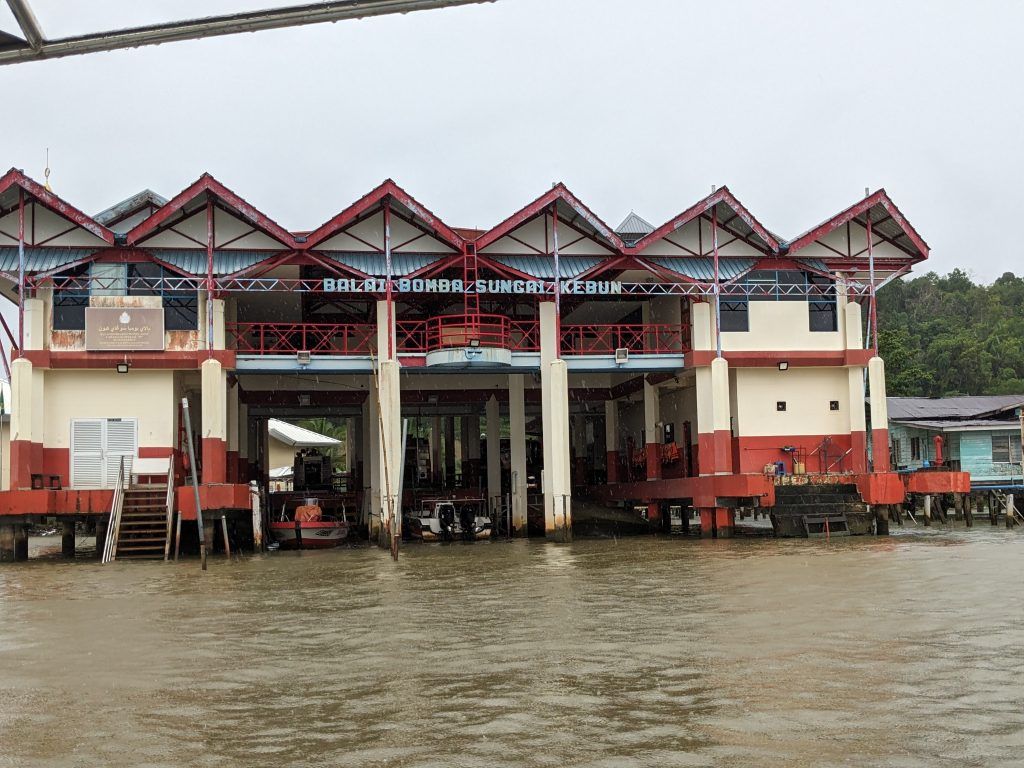Borneo, the third largest island in the world, lies on the equator in the extreme southwest of the Pacific Ocean. The largest portion of the island is Indonesian while the northern states of Sabah and Sarawak are Malaysian. The tiny Islamic sultanate of Brunei is tucked between the two. Borneo is one of the most biodiverse regions of the planet. Of the 15,000 species of plants found here, some 6,000 grow nowhere else on earth. I spent about a month in Malaysian Borneo and Brunei.
I also dove in both Malaysian Borneo and Brunei and that story is in this blog post: https://theperennialpilgrim.com/under-the-seas-of-borneo
Kinabatangan River
The Kinabatangan River is a 560 km (350 mile) long river running through Northeast Borneo. It has an incredible amount of biodiversity and is one of the highlights of any visit to Malaysian Borneo.
I spent three days there on boat cruises and walks. I was fortunate to be able to book a tour with Mr Aji, whose claim to fame is having acted as the guide for David Attenborough a couple of times. Mr Aji has been studying this area since 1997 and doing tours since 2001. He’s pretty quiet and direct outside of the boat. But when you’re with him on the boat and he spots wildlife of any kind, he becomes a giggling joyful child. There were only six of us on the tour: an Italian couple and a mixed British/Spanish couple and their teenage daughter.
The coolest monkees in the jungle are the male proboscis monkees, with their long Jimmie Durante style noses, large pot bellies and the “red chillies” protruding out from their waists. And yes, the bigger the nose, the bigger the chili.
A younger male proudly flaunting his chili.
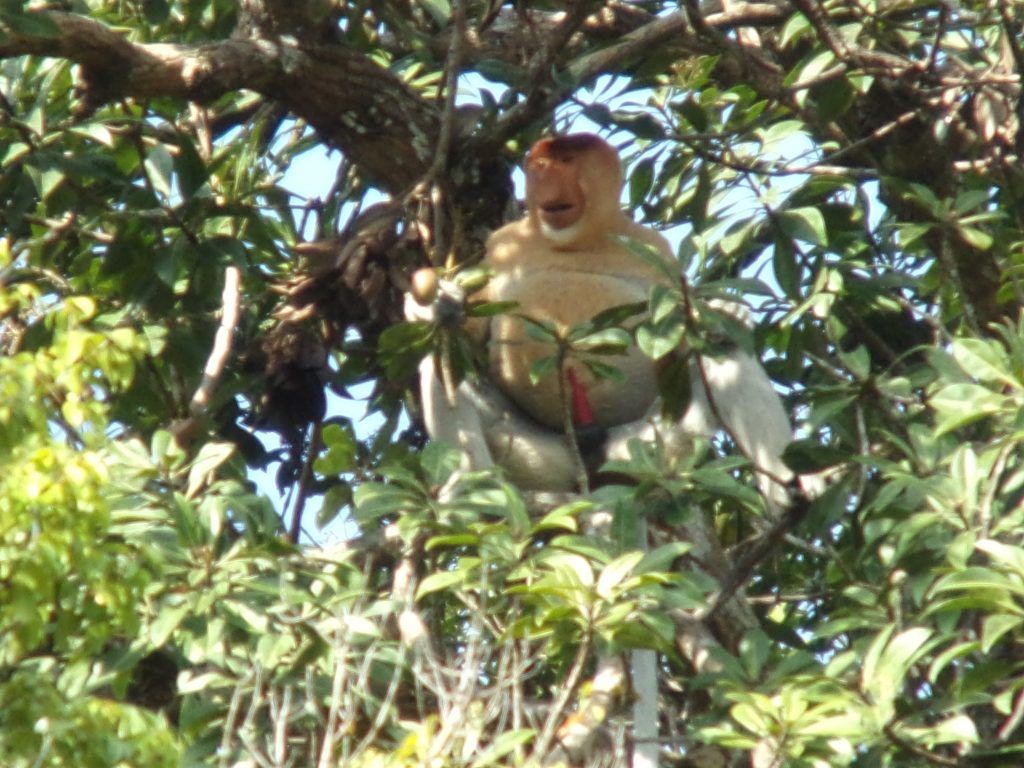
Another male just hanging around.
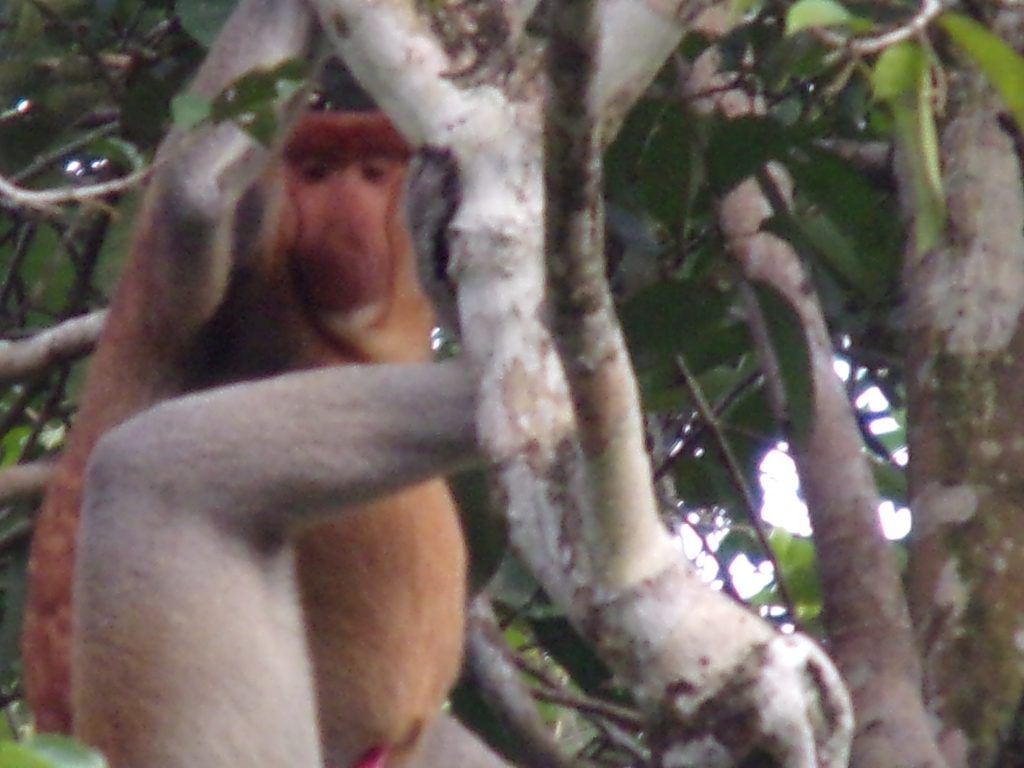
The pot belly on full display.
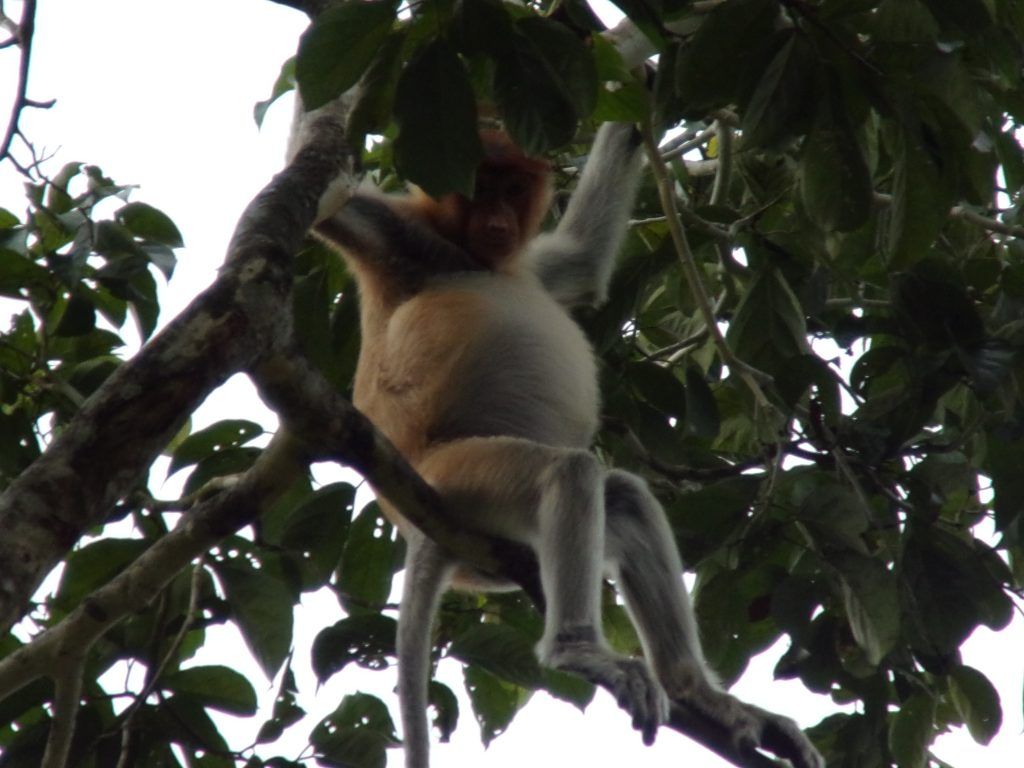
Some females stationing themselves near their dominant male.
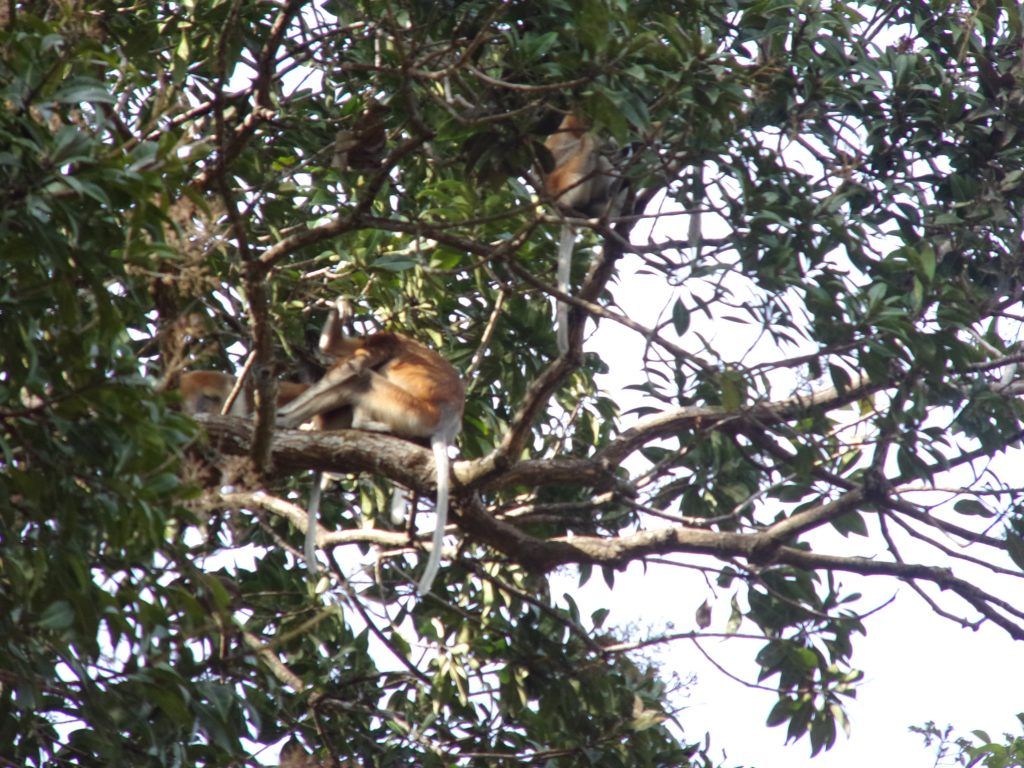
You can hear Mr Aji mimicking back their sounds trying to get them to jump. And one did!
The funnest monkees in the jungle are the long tailed macaques. They hang out in groups and are very active. There are some nice action videos below.
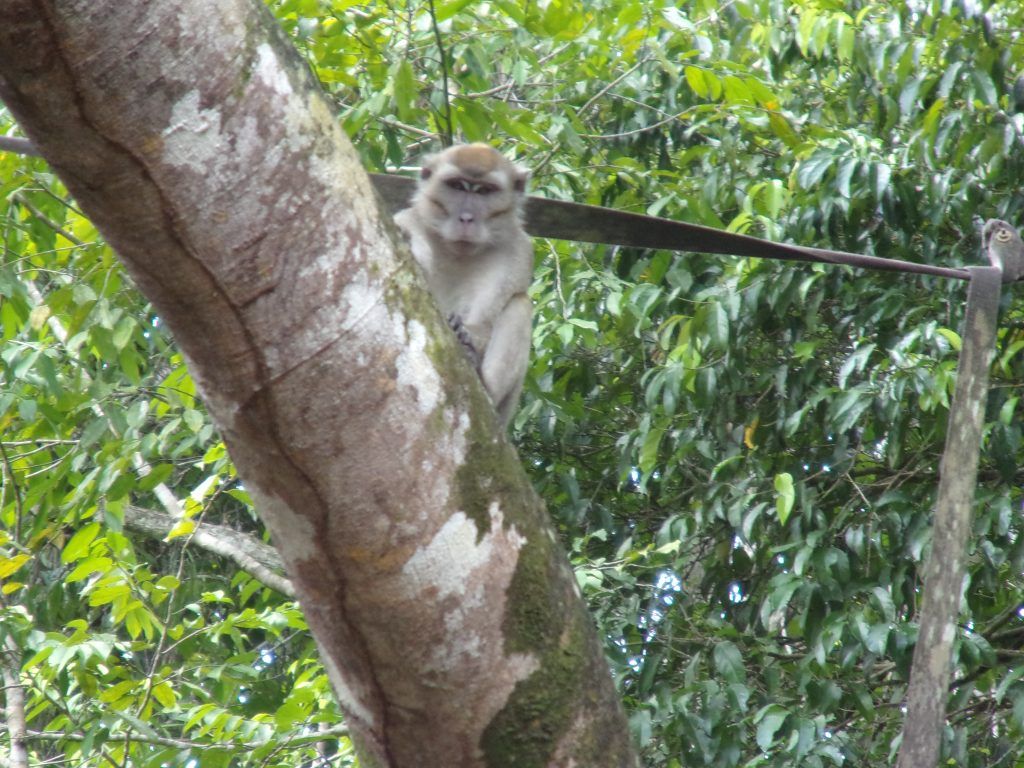
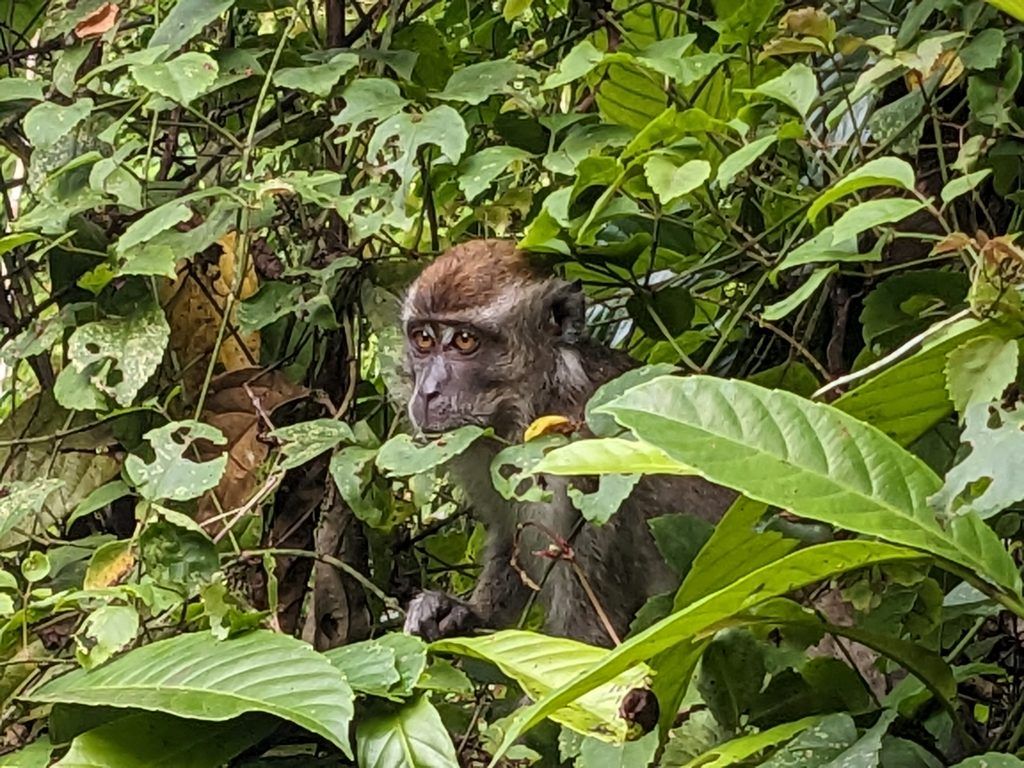
The shyest monkees are definitely the orangatangs. Spotting them in the wild is incredibly difficult. We saw a mother and child in an incredibly high tree back from the riverbank. The best pictures I could get were these two fuzzy ones.
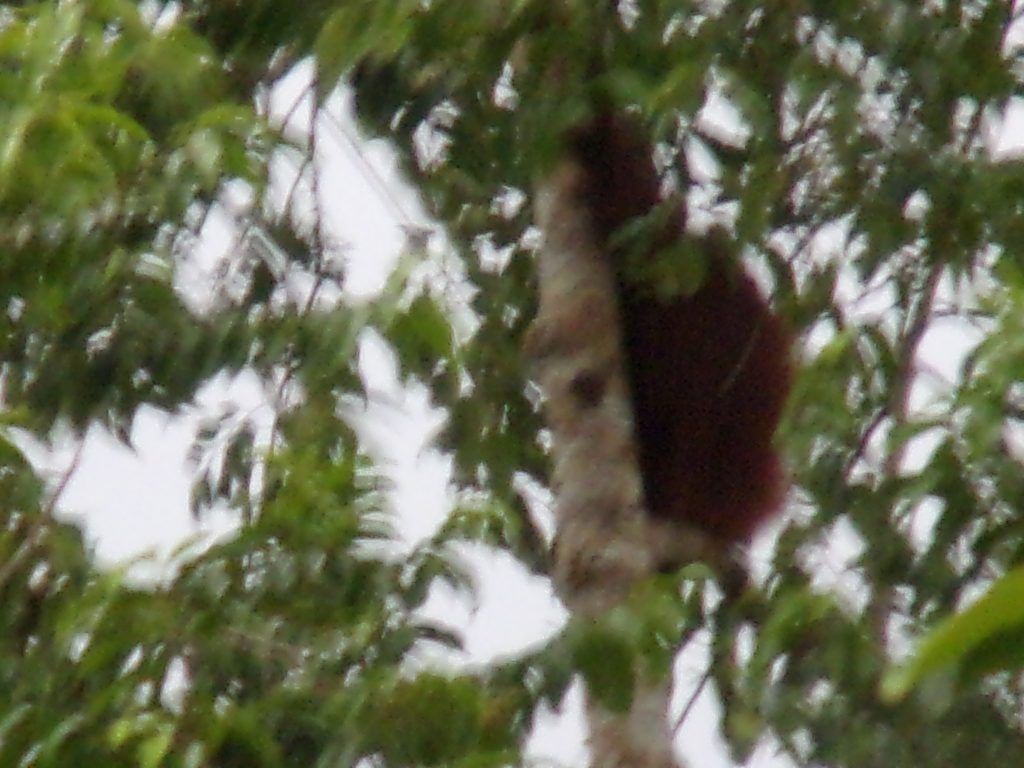
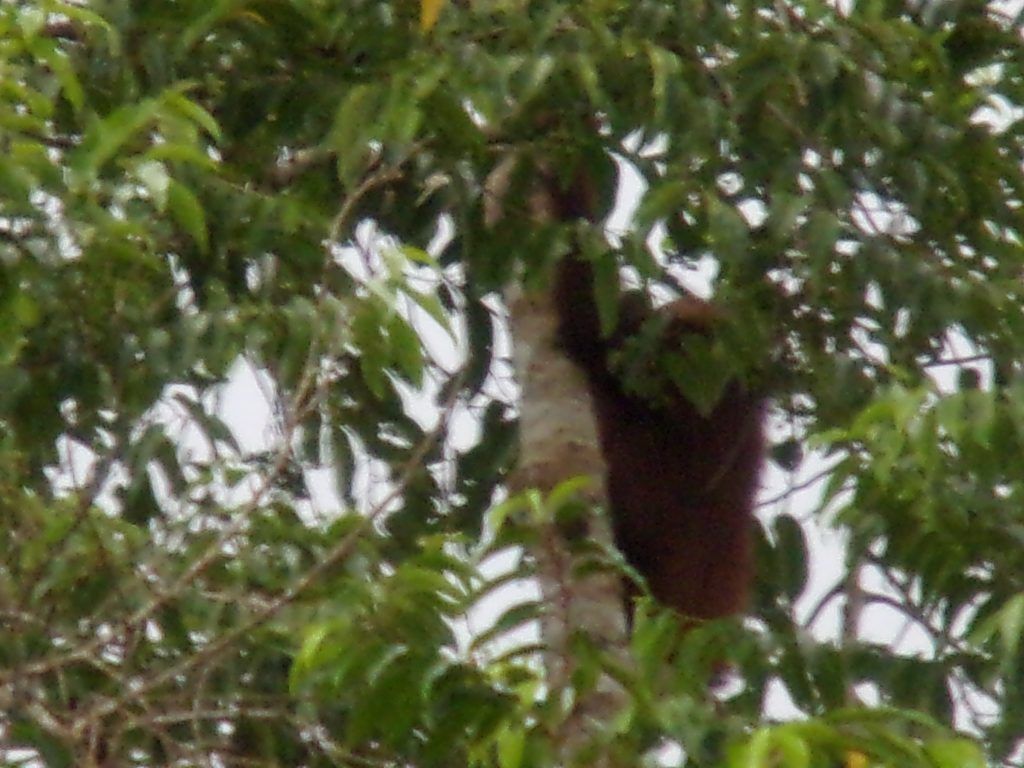
We saw a handful of bridges crossing the small tributaries we were cruising through. This one was built by a Japanese NGO.
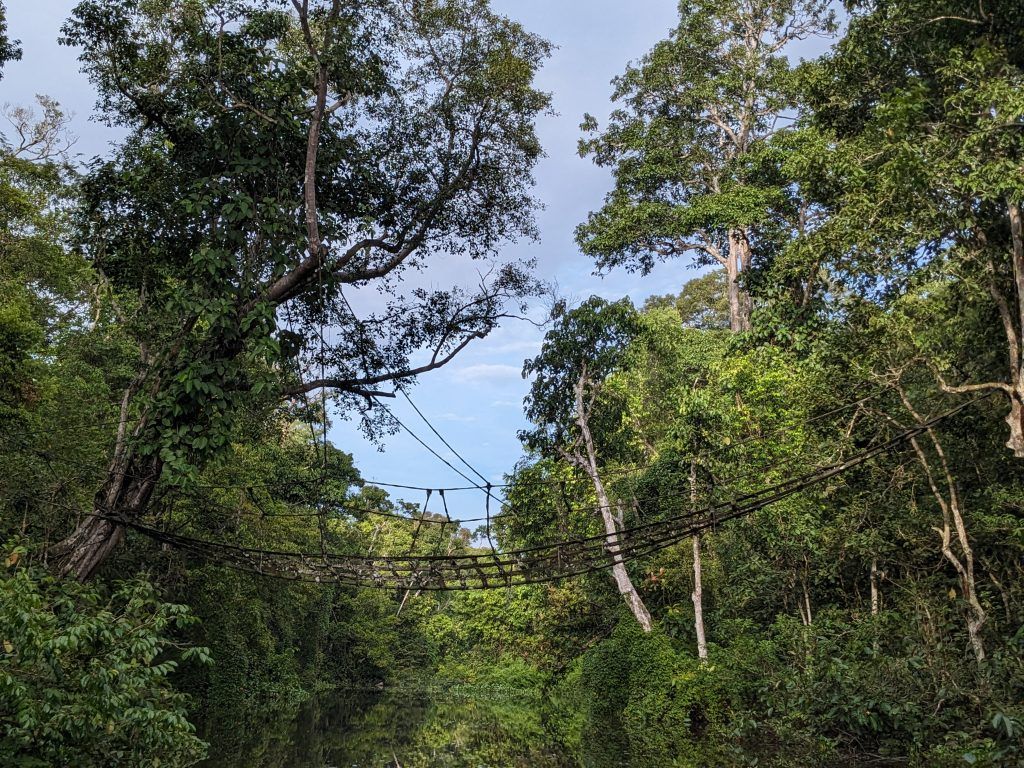
We were very lucky to see a lone, old bull elephant near the riverbank. It made for a nice picture and a couple of nice videos.
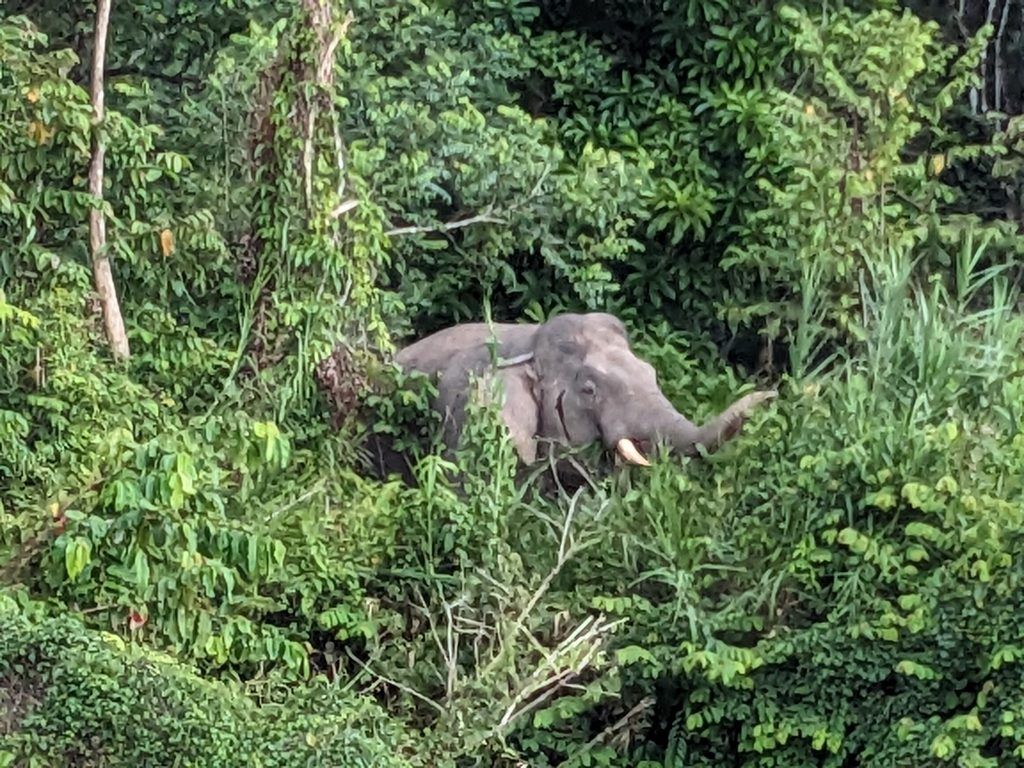
A moniter lizard resting peacefully in a tree.
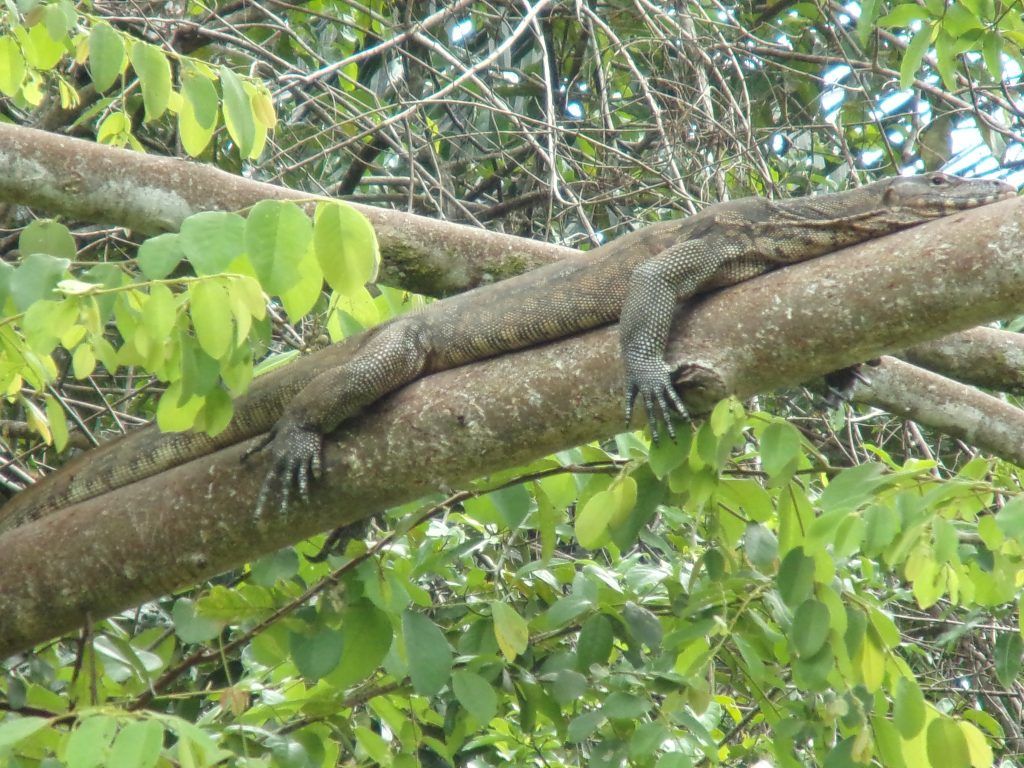
A tiny, baby crocodile heading for cover under the leaves.
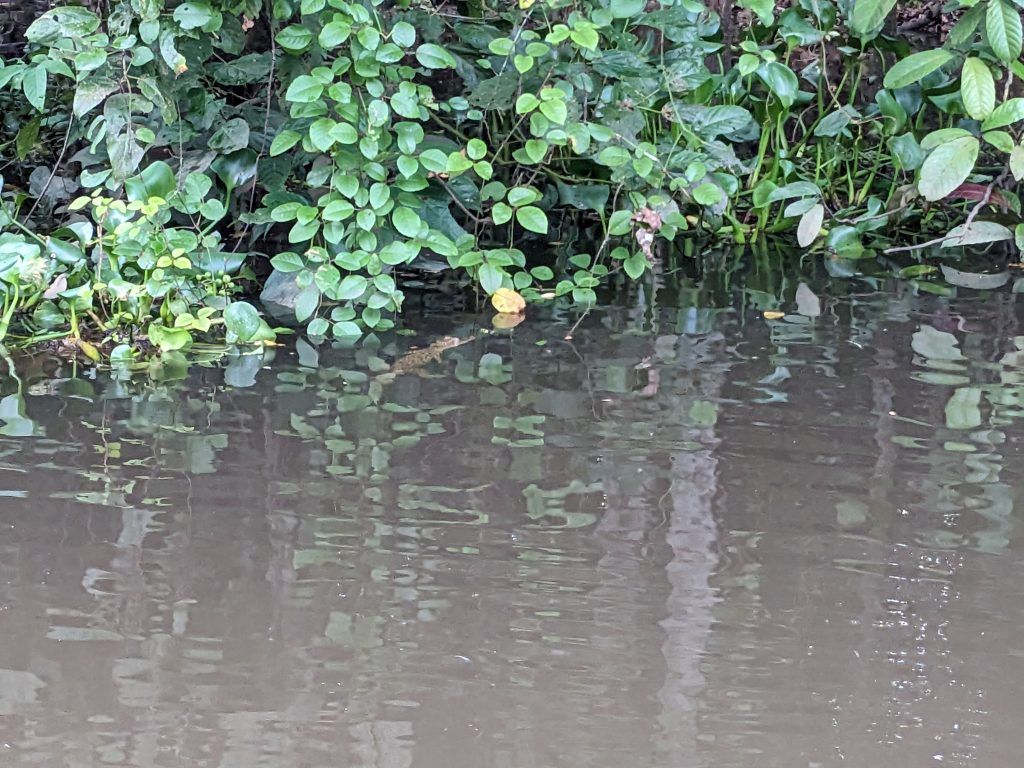
A bit older crocodile sunning itself on a log.
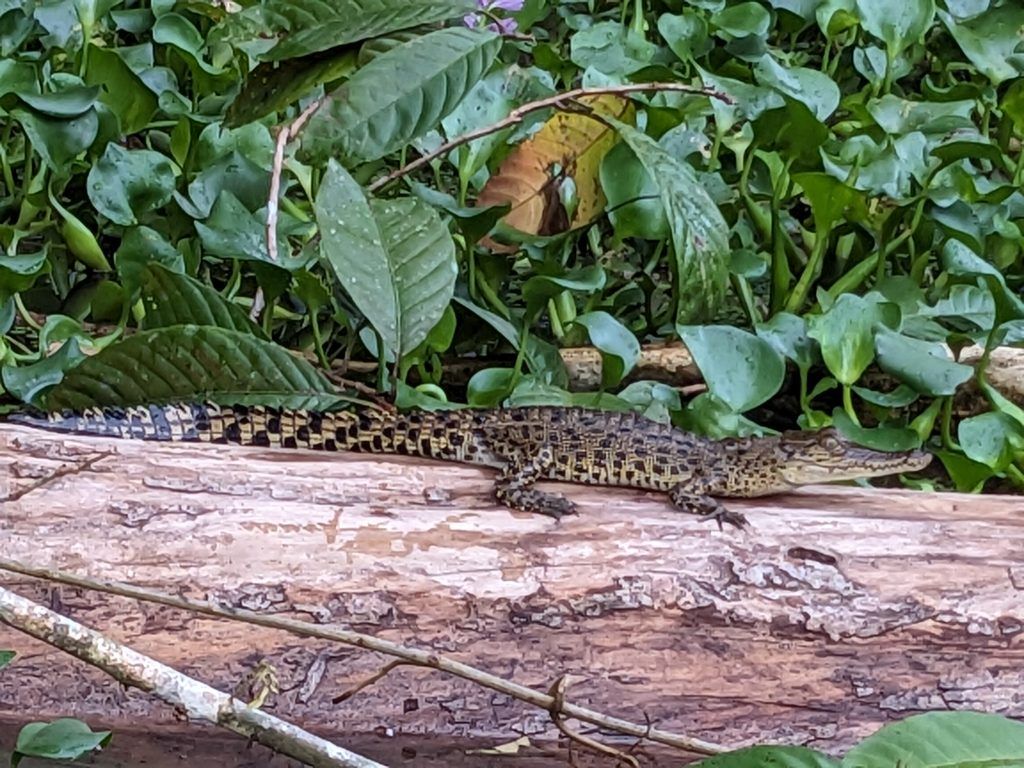
And a fully grown 7-8 foot (2.5 meter) croc cruising by our boat.
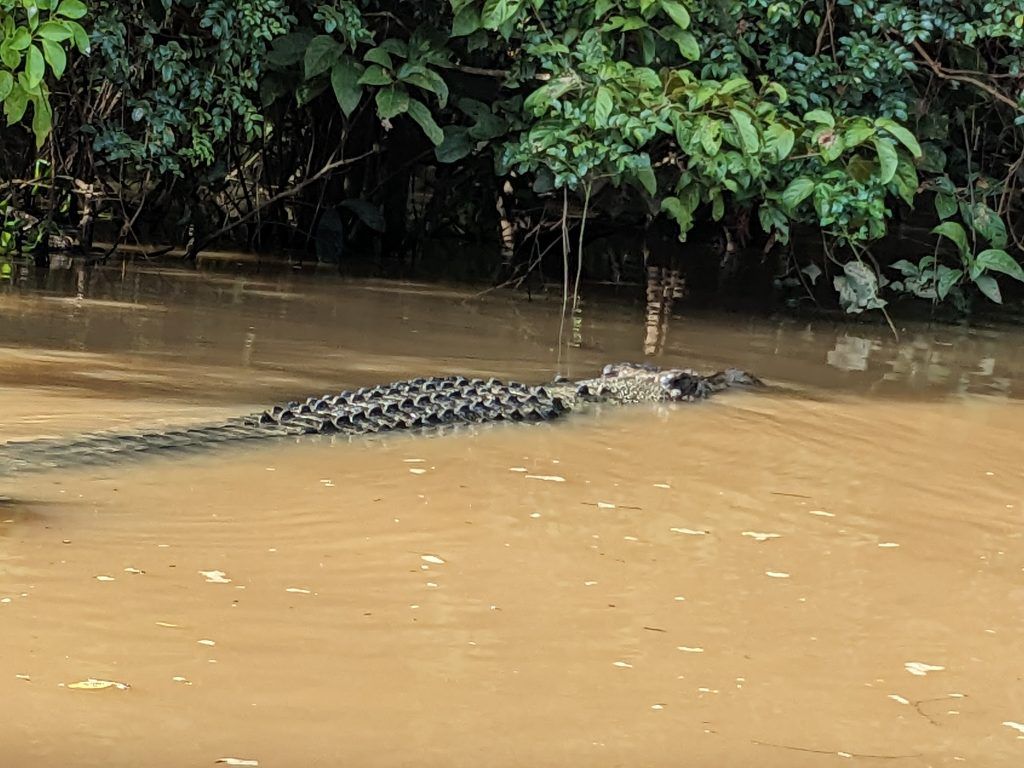
A hornbill in a tree. We saw a lot of them flying over us, but rarely did they stay in one place long enough for us to get a picture.
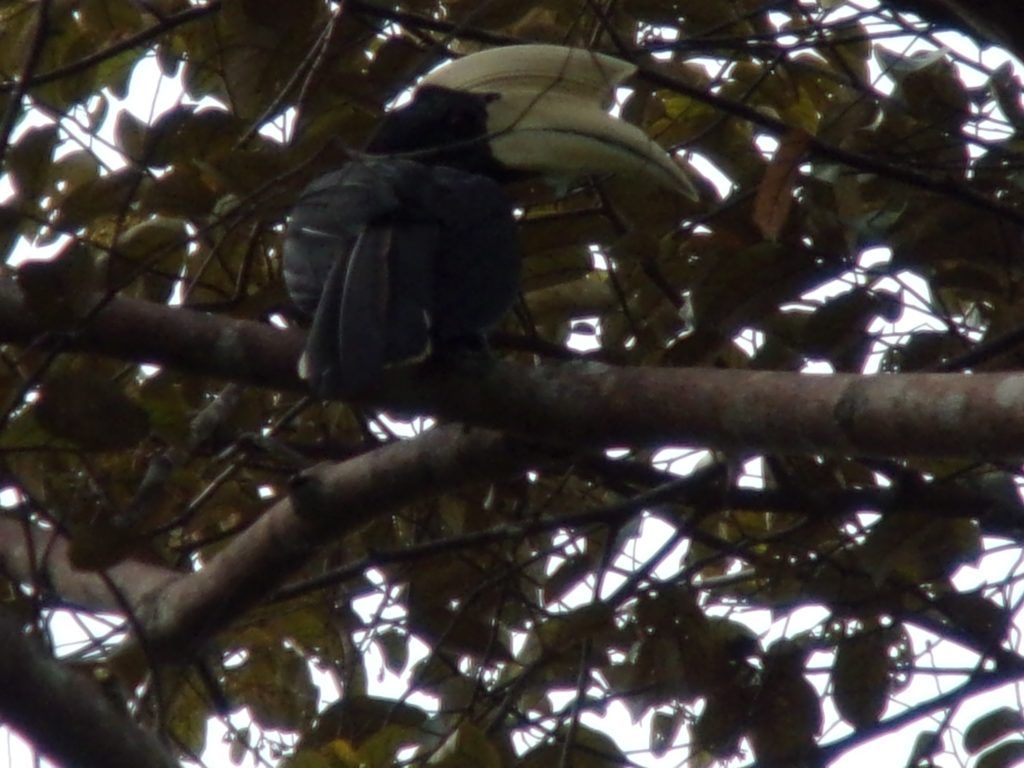
A lone egret balancing on some small branches.
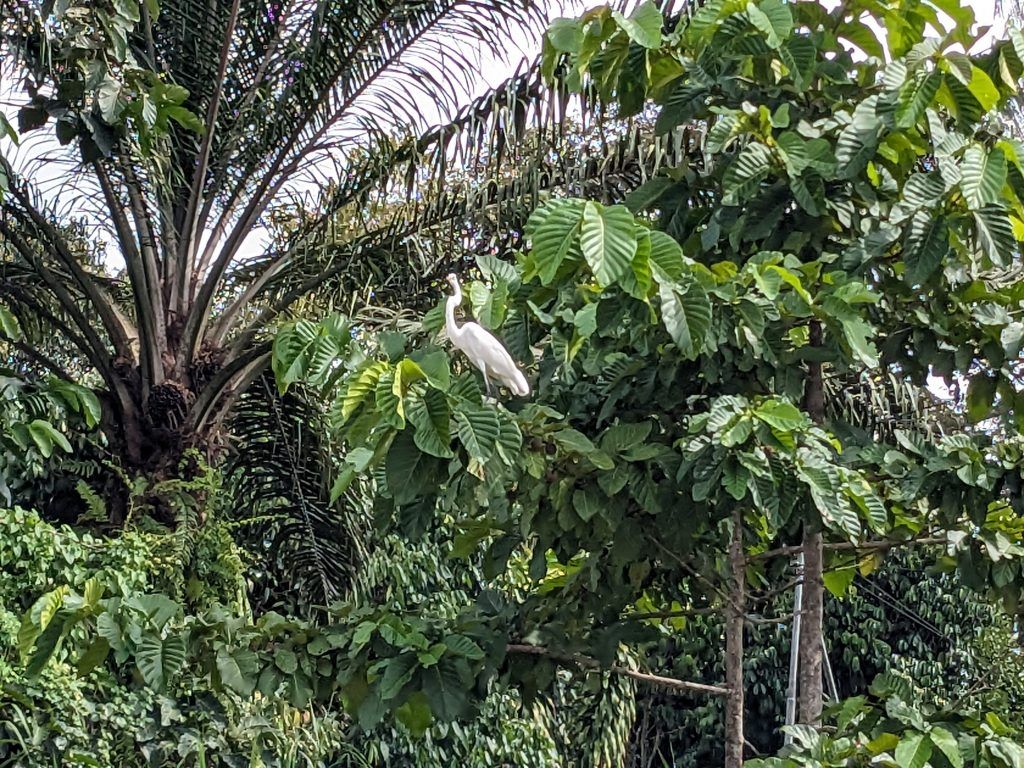
An beautiful colorful kingisher on our night boat cruise.
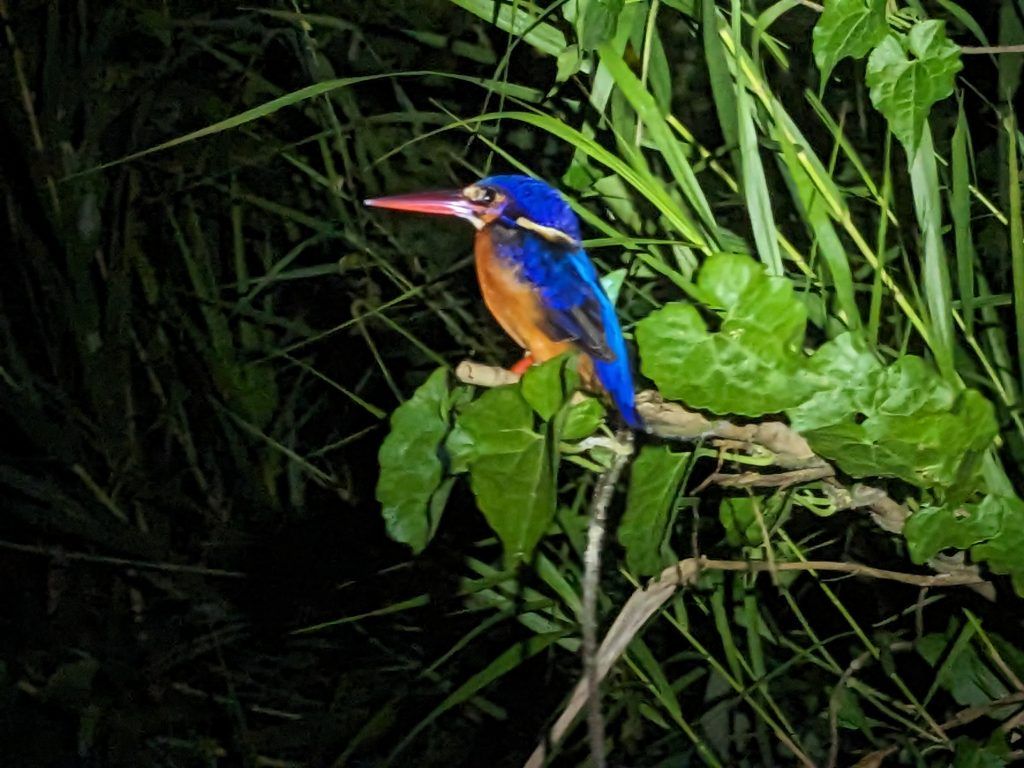
A nice shot of an owl by the river.
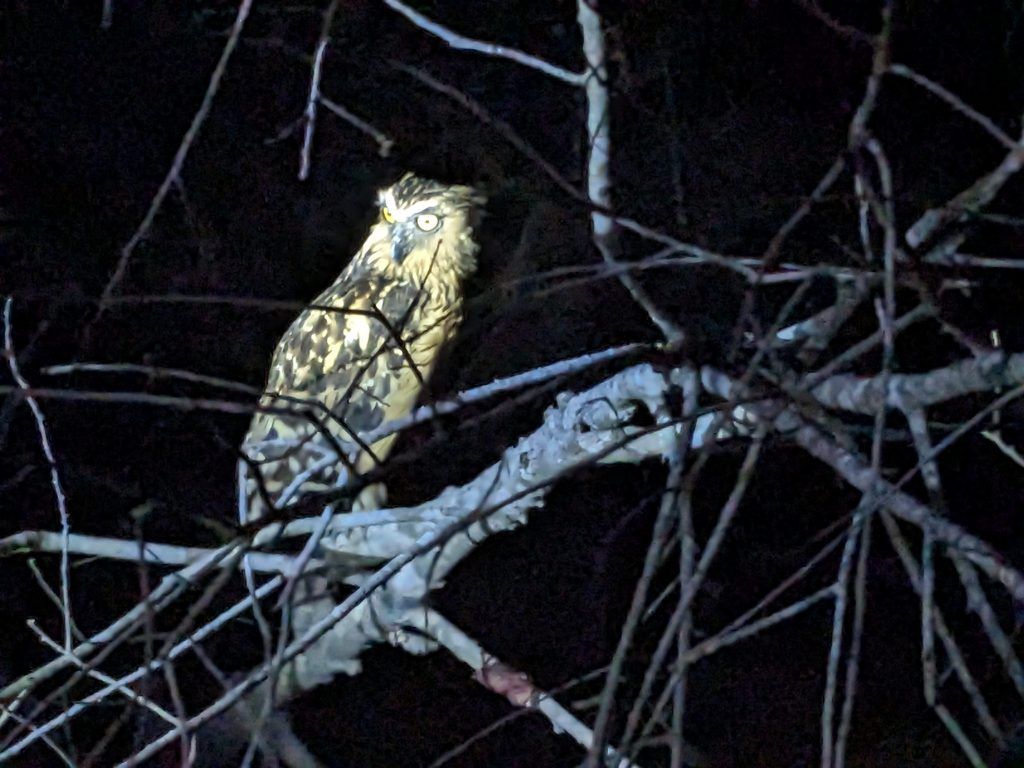
We did a night walk and got some nice pictures of some insects you normally wouldn’t be able to see during the day.
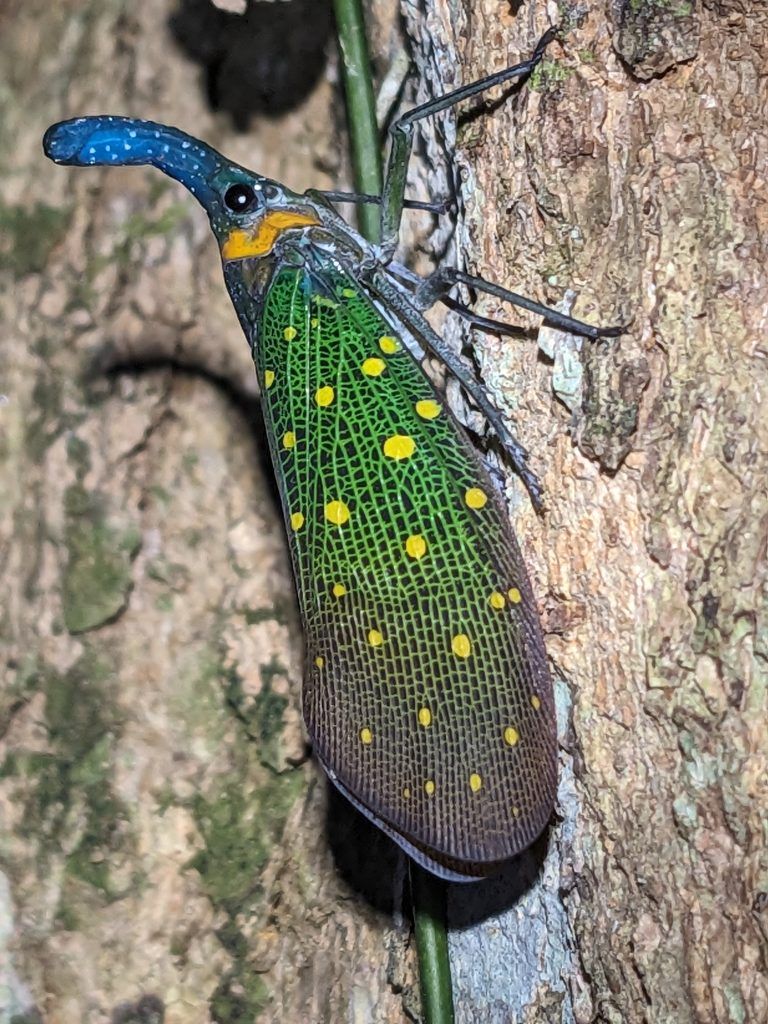
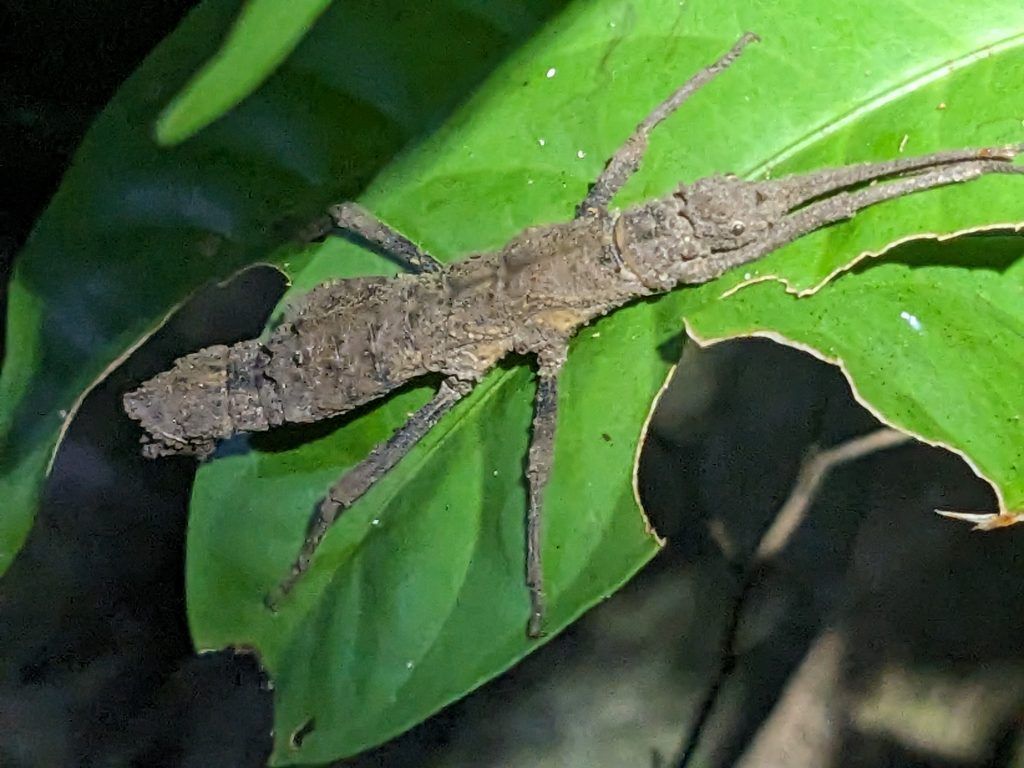
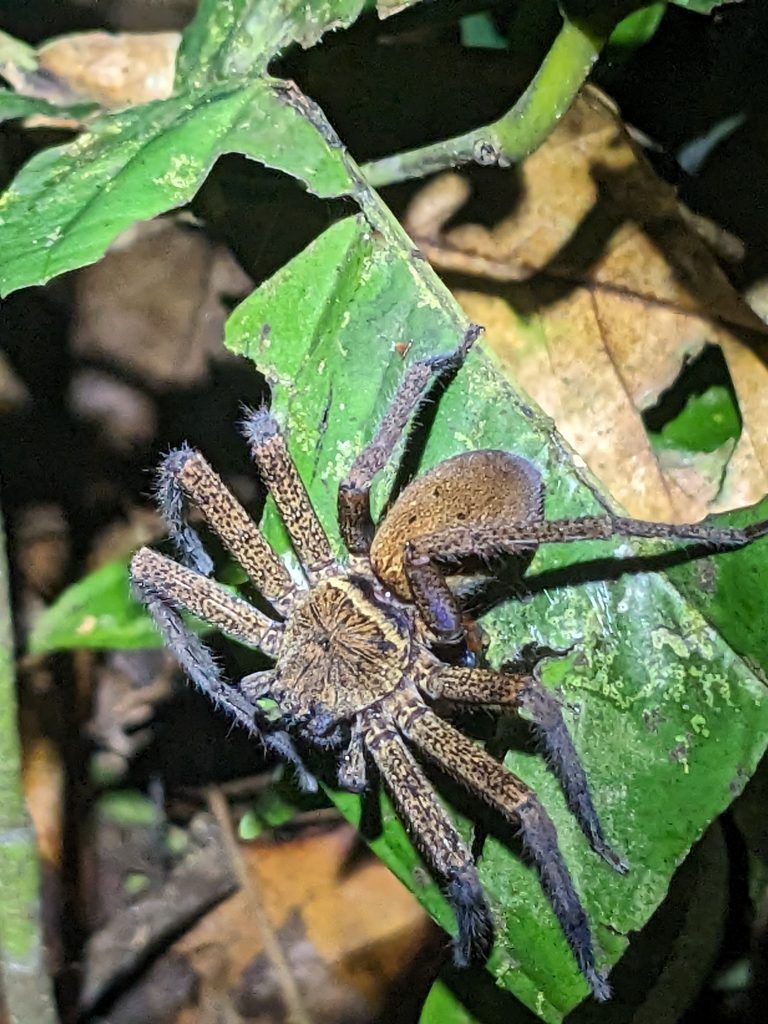
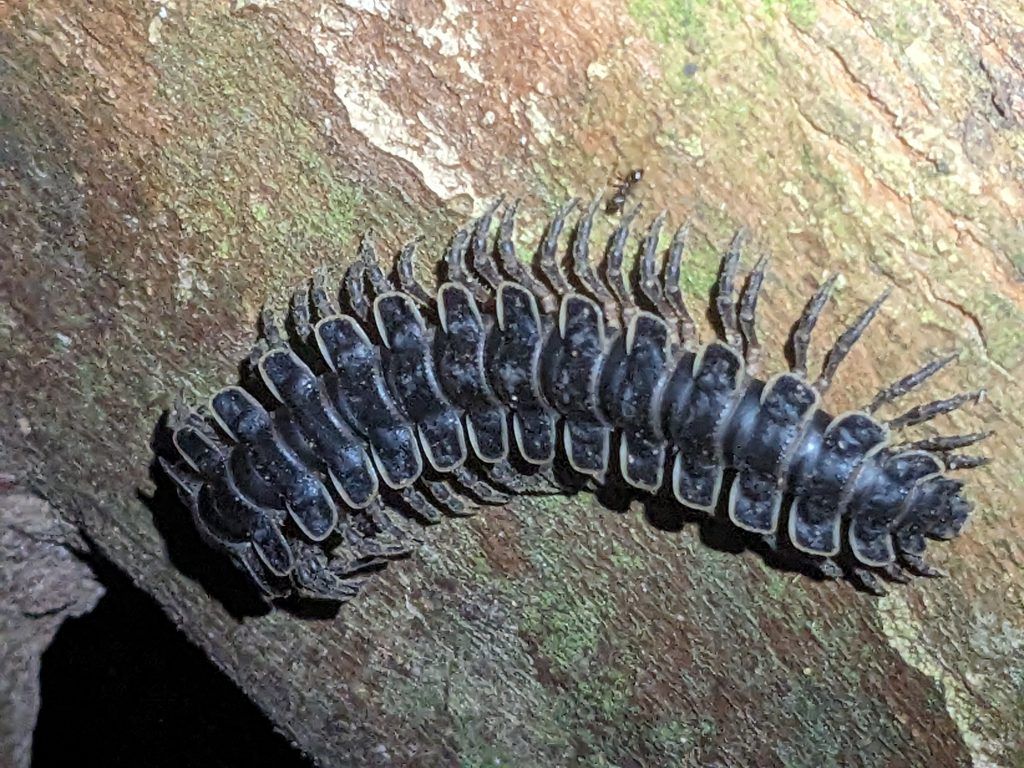
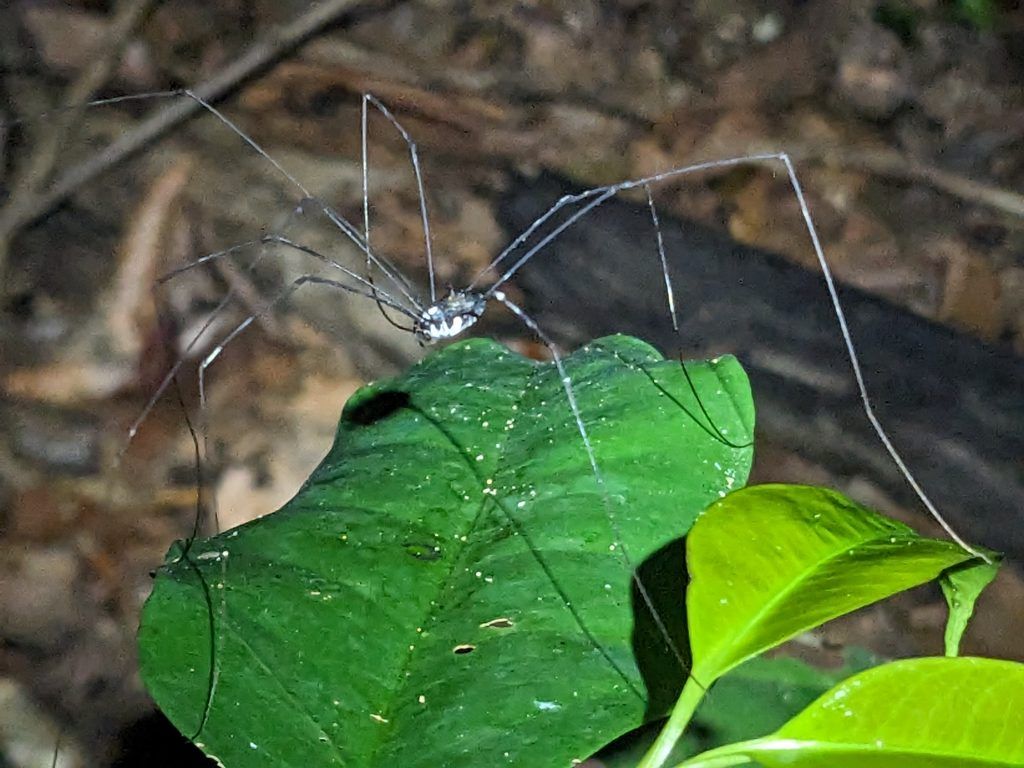
Mr Aji piloting our boat as we leave our base area.
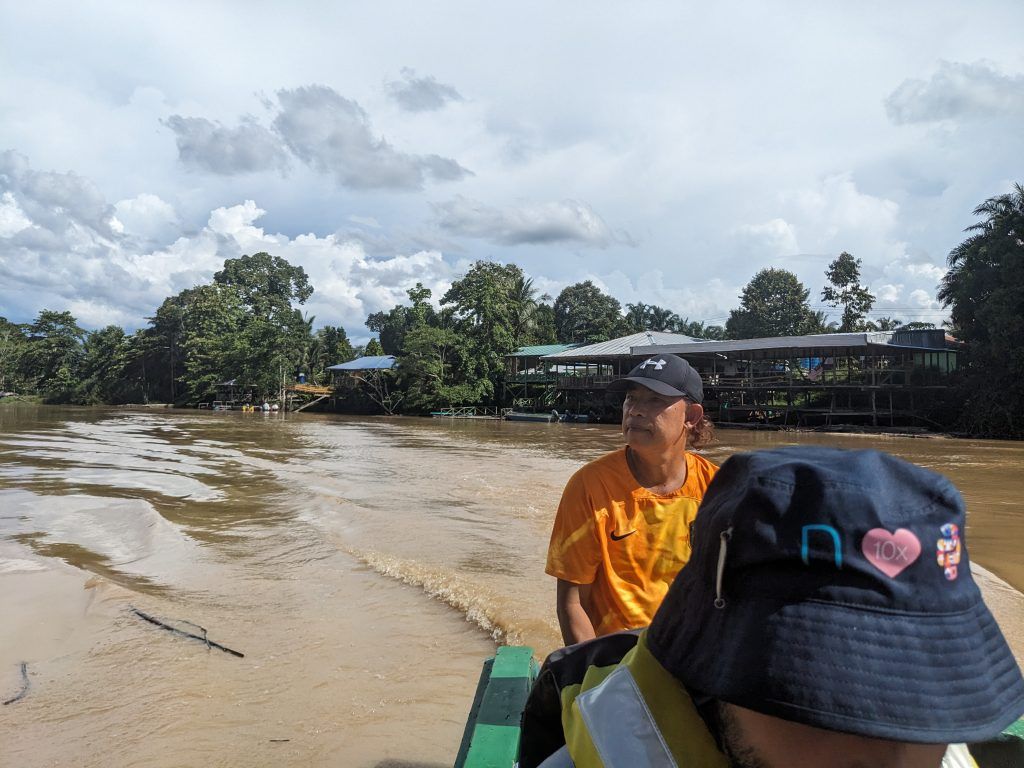
Our very basic accomodations. We each had our own basic rooms with a warm shower and air conditioning. That’s all we needed that far away from any cities.
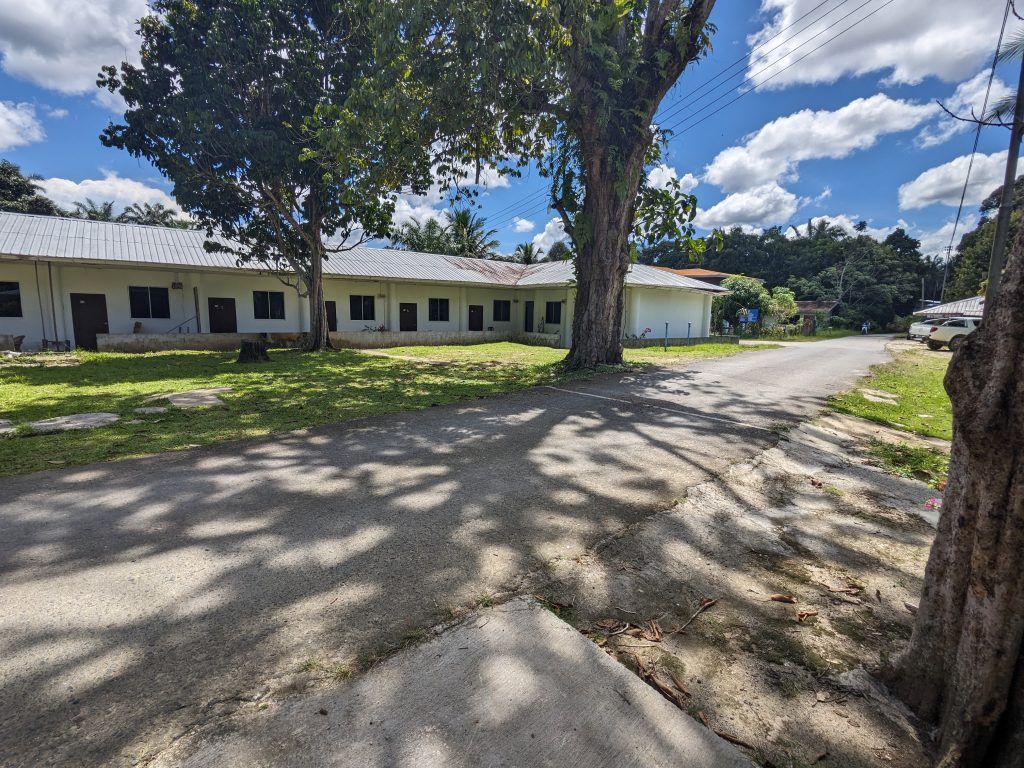
The ubiquitous palm trees encroaching on the river habitat. There were huge tracks of palm oil trees all throughout this area. Mr Aji was adament about how bad they were for this area. Orangatangs would eat the juice, get poisoned and slowly die. Elephants would get stomach pains from them. The chemicals the growers used would seep into the soil and cause damage. They were all owned by Chinese companies who even shipped their own cheap labor in. While the government seems to have stopped further expansion in the area, there are enough groves there now that continual damage is being done with what’s there.
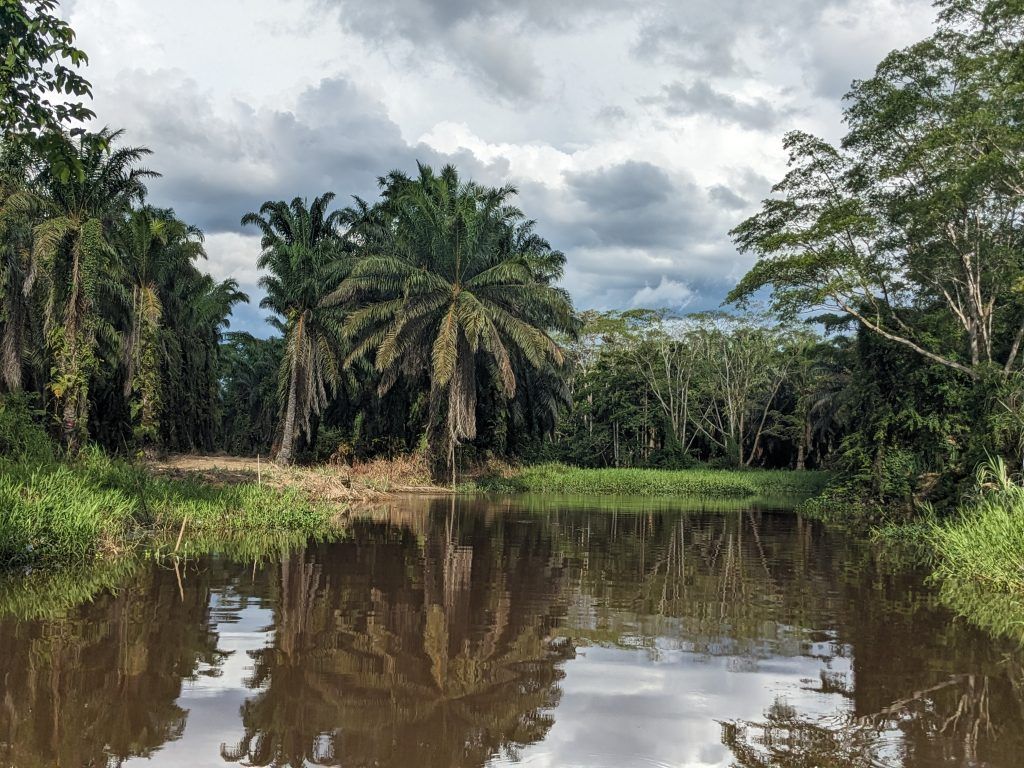
A nice view of one of the tributaries with its natural habitation.
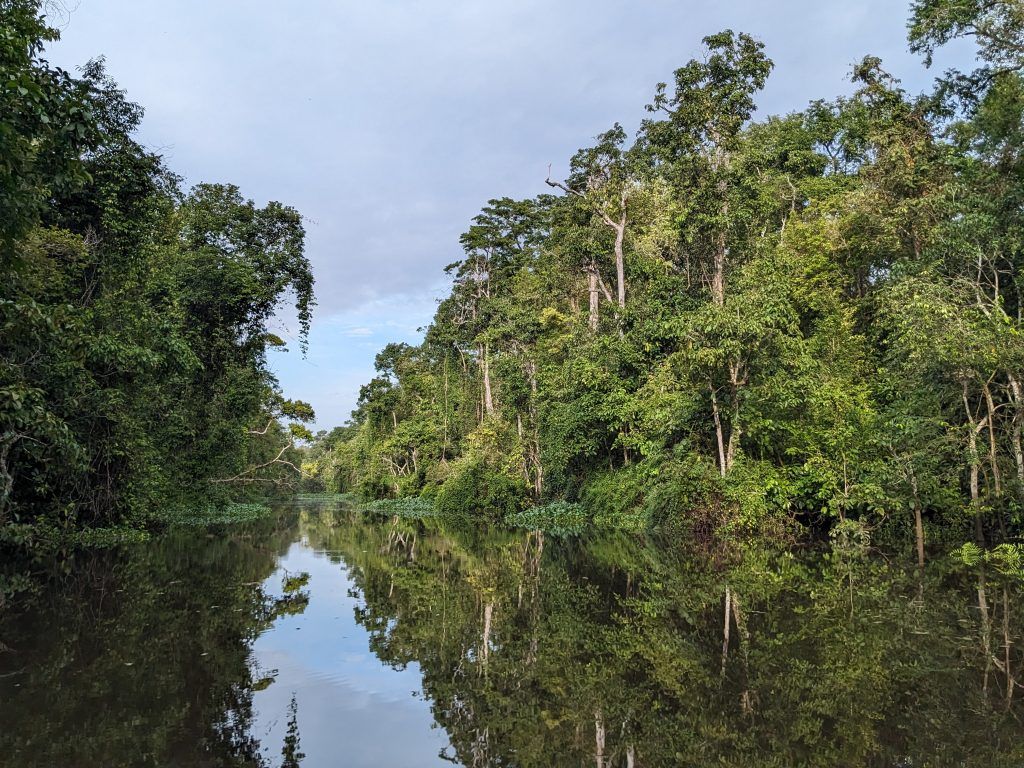
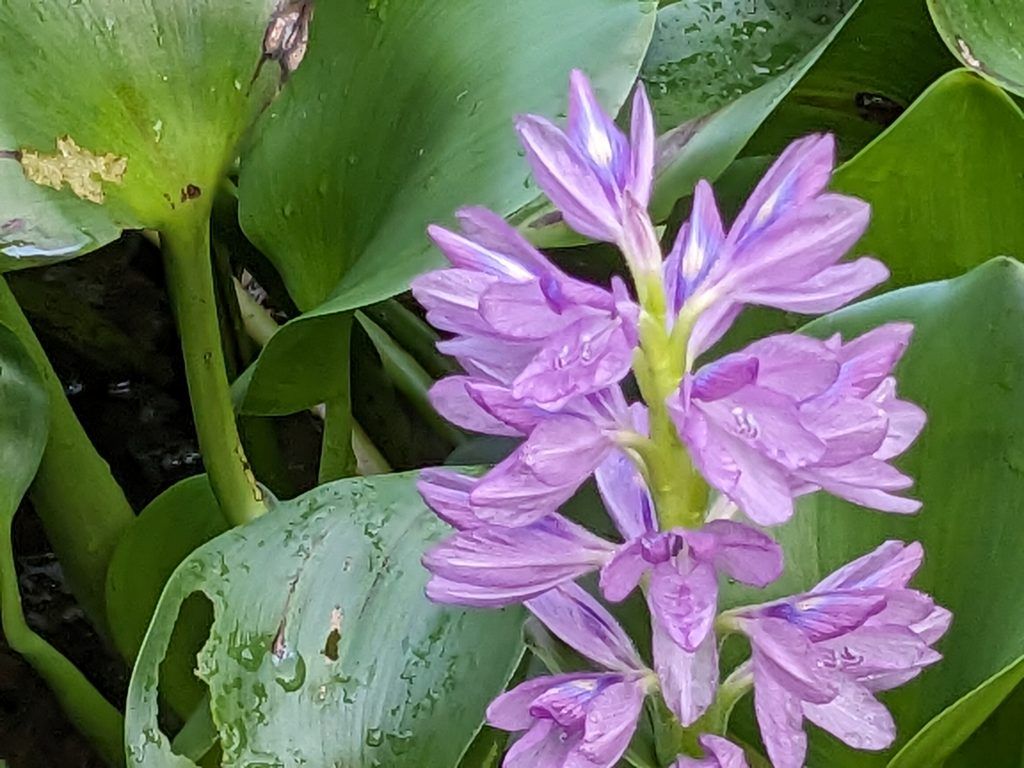
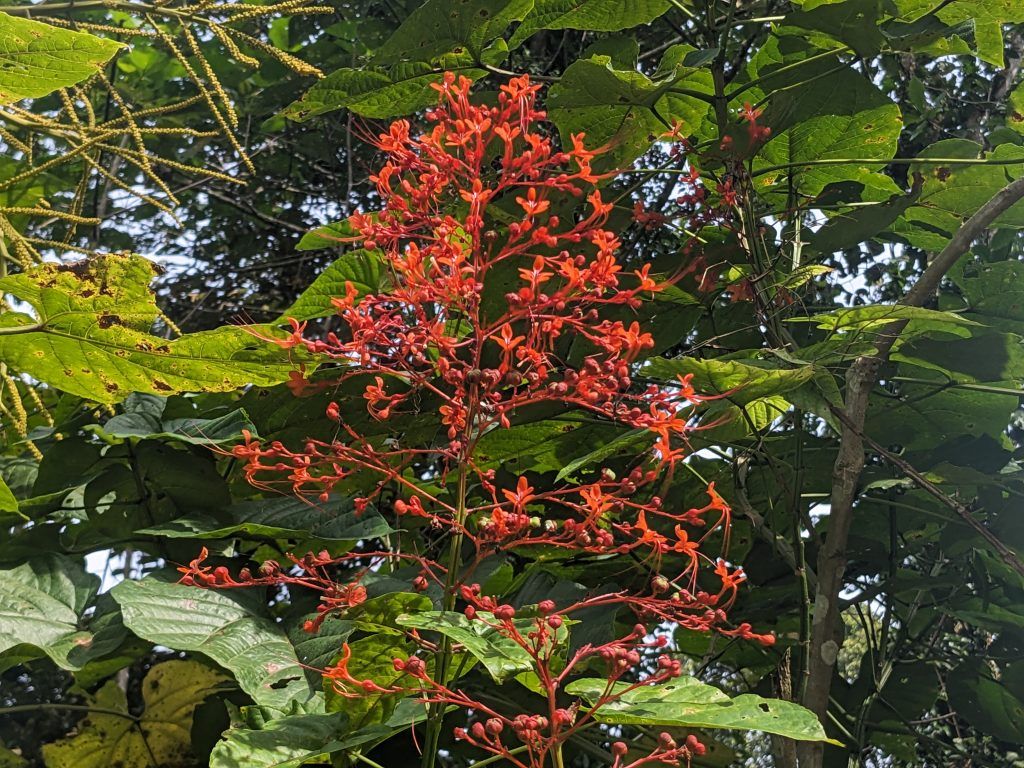
Sepilok Orangatang Rehabilitation Centre
The Centre rescues orphaned baby orangatangs from logging sites, plantations, illegal hunting or those kept as pets. The orphaned orangatangs are trained to survive again in the wild and are released as soon as they are ready.
The coolest part is the enclosed, air conditioned viewing area with large glass windows where you can watch the younger orangatangs first learn to be outside and play on a large climbing frame. I was there for their morning feeding time where they came, took their food, and then made way for a mother and a very young baby to select their food.
One orangatang goes to the second platform and selectively chooses its food for the morning.
There’s a bit of a tussle here between two orangatangs; I think the first is a bit frustrated he loses his “wig” while rolling around with the other one.
Bornean Sun Bear Conservation Centre
The Sun Bear Centre is right next to the Orangatang Centre. It exists to confiscate, rehabilitate and release suitable orphaned and ex-captive bears back into the wild. For captive bears, which cannot be released, it also provides an improved long-term living environment.
Again, I visited it during feeding hours where the staff would throw corn cobs and carrots over the fence to the bears.
A pig-tailed macaque monkey decided to partake in the feeding. The bears had more than enough food and didn’t seem to mind.
Nearby a couple of bears loudly go after each other. A few minutes later the staff moved over to their area and fed them as well. Things got nice and quiet after that.
Bako National Park
Bako National Park is a small, but dense park on the northwest edge of Borneo. It has 16 trails, a ton of wildlife, beautiful beaches, and simple yet very comfortable accomodations.
The star of the Park are, as with the Kinabatangan River, the male proboscus monkees.
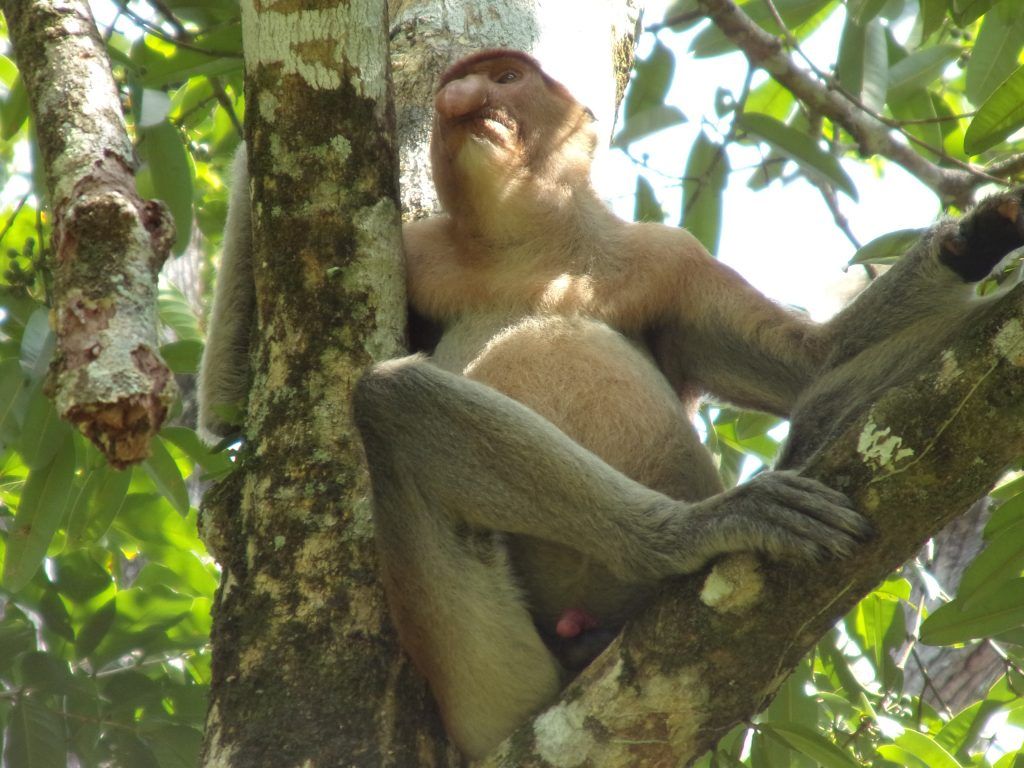
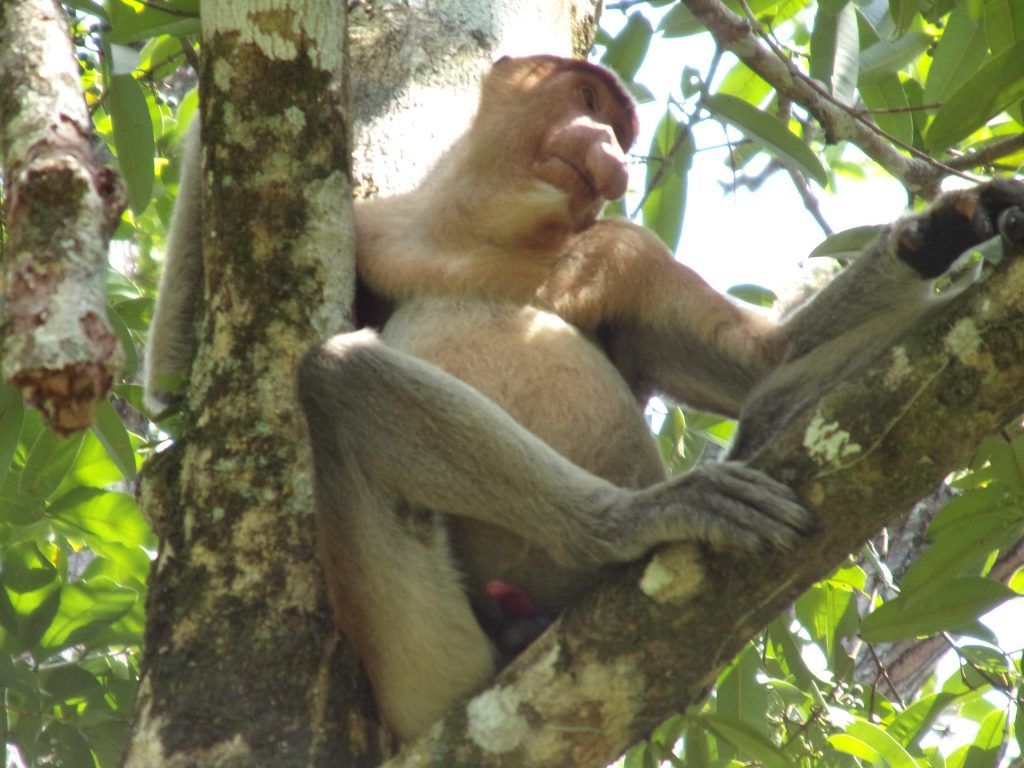
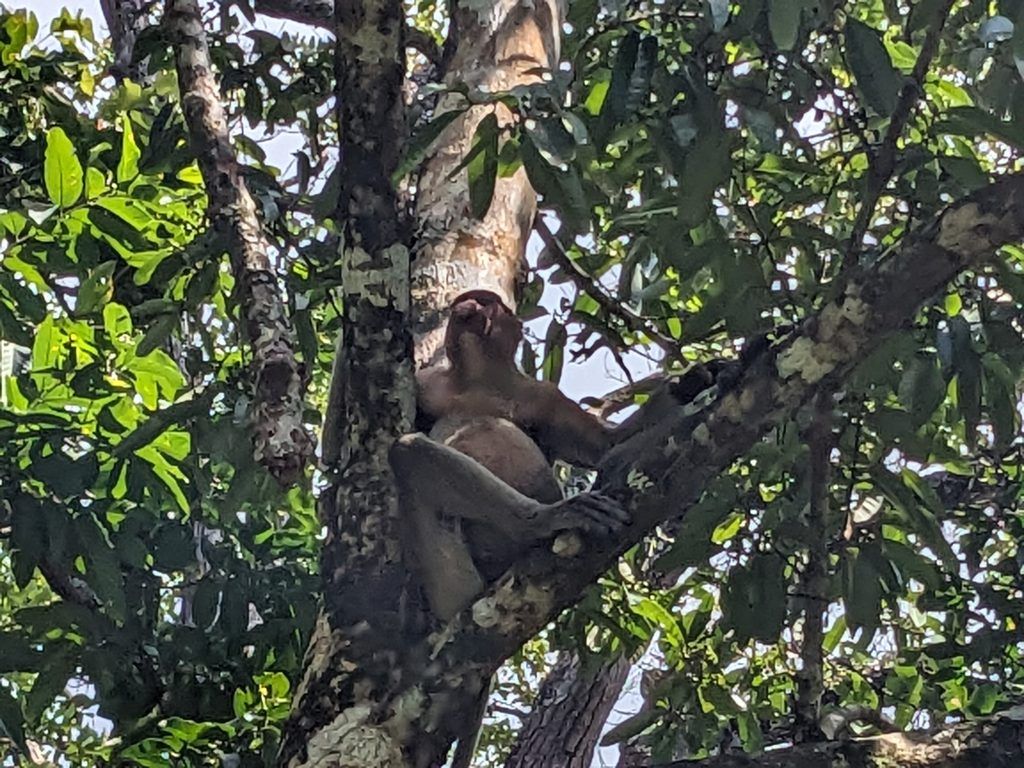
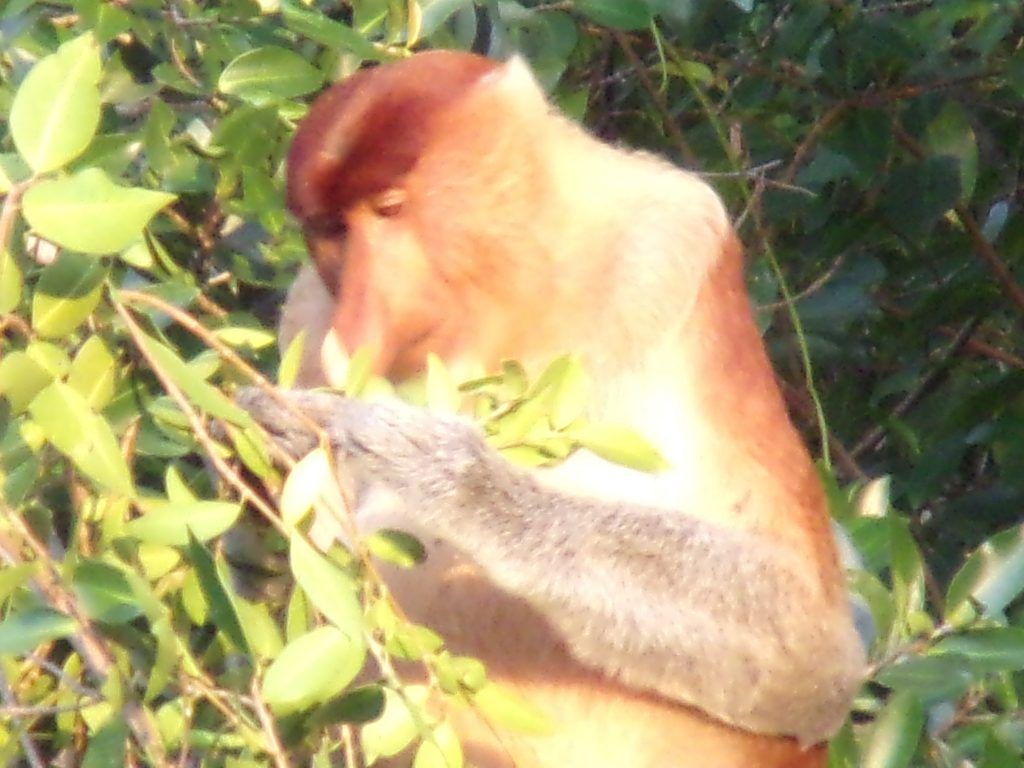
There are also scores of long tailed macaque monkees. They are cute to watch play, but really annoying when they get up close and try to steal food and other things from you.
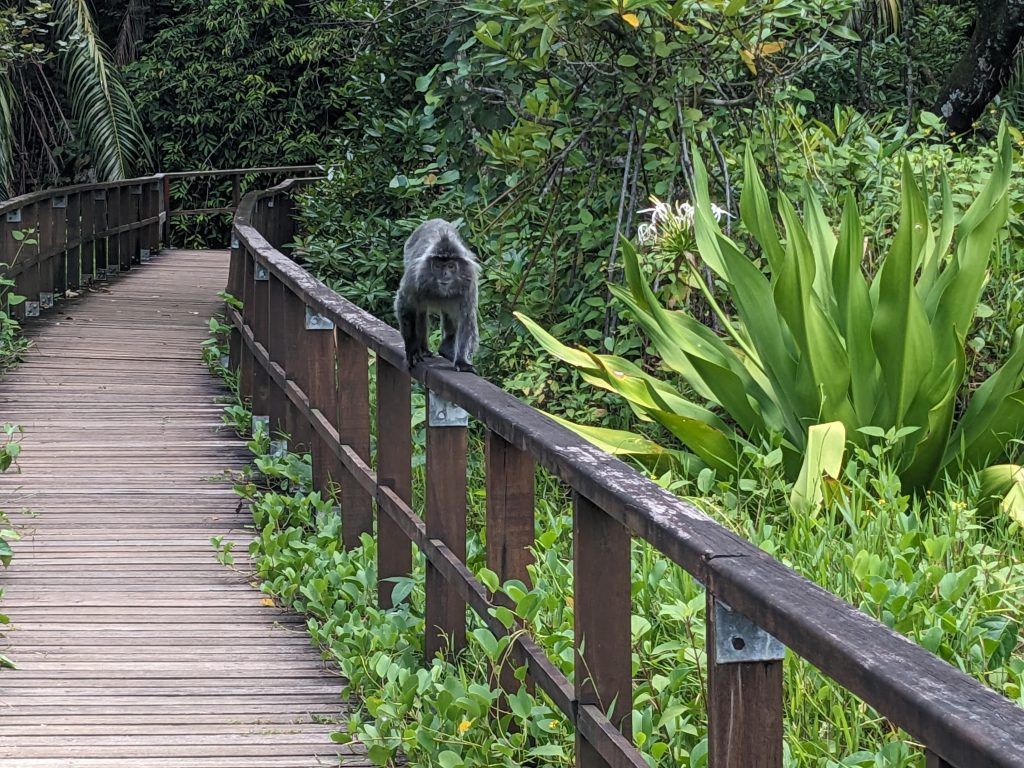
This one is eyeing the back of the kitchen during breakfast to see what it can possibly pilfer.
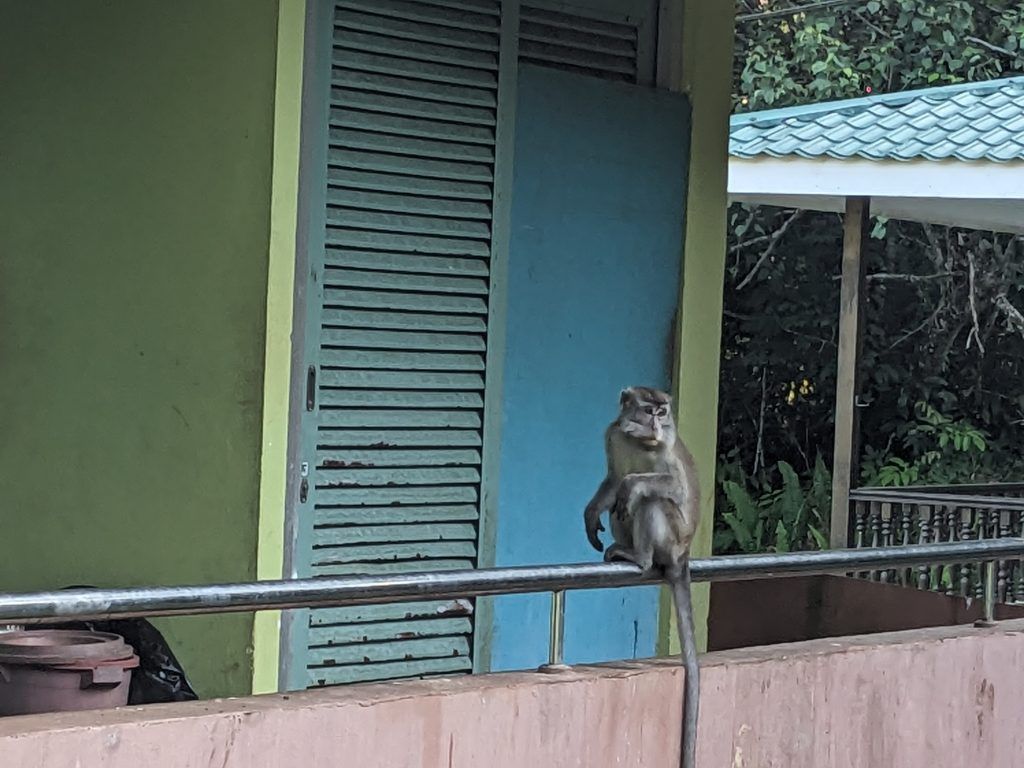
There were a handful of very chilled out Bornean bearded pigs around our accomodations area playing in the mud and foraging the drainage channels for scraps.
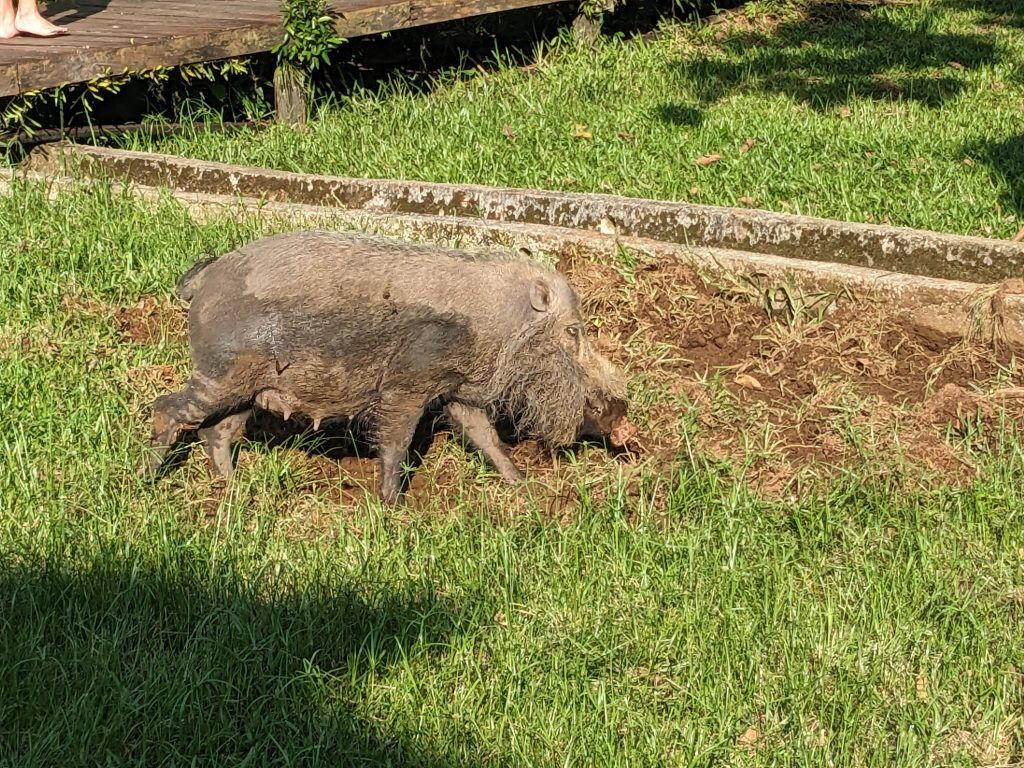
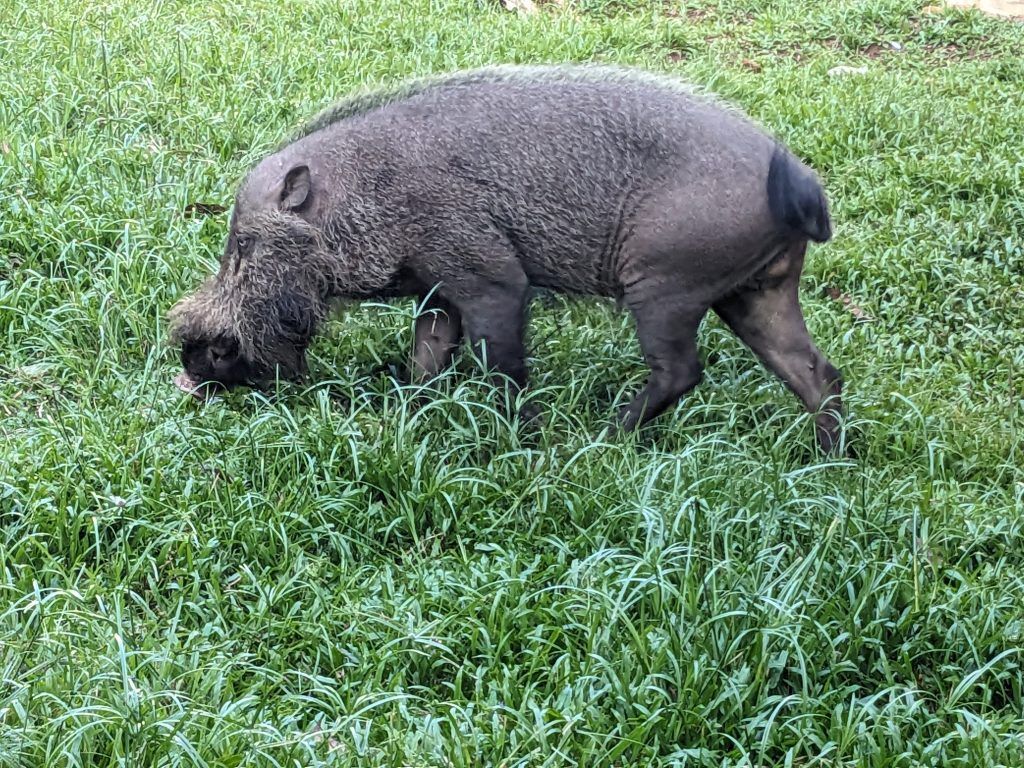
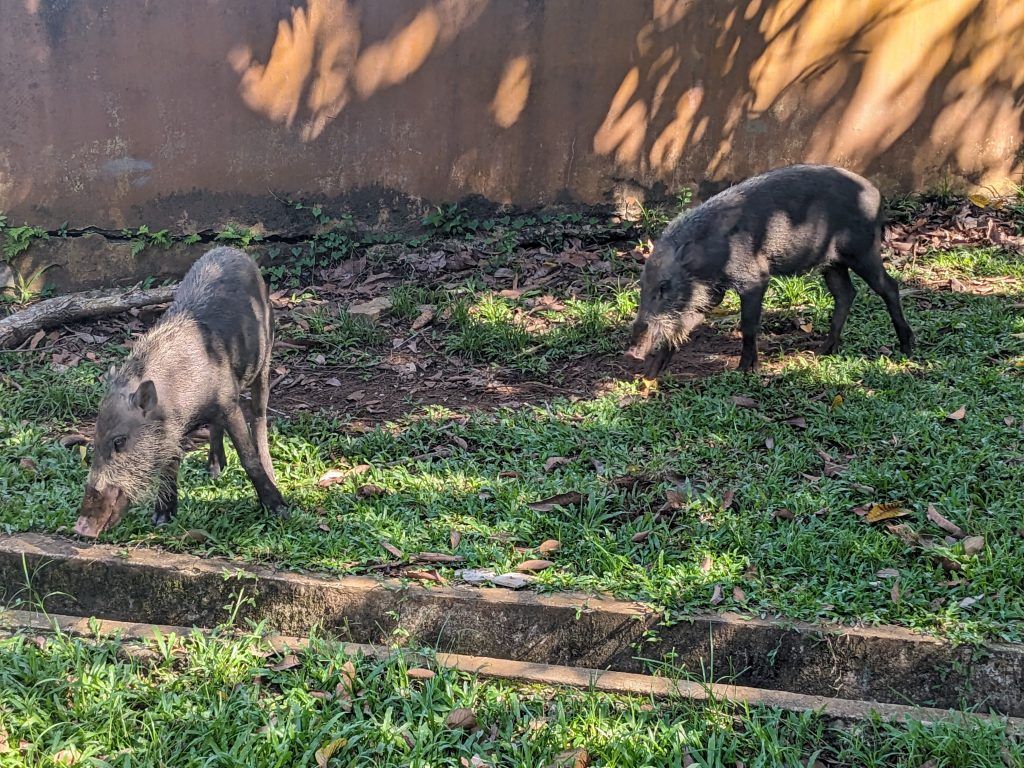
I saw two Sunda flying lemurs hanging out in the trees. The first was grabbing a tree with all four feet and checking out the area.
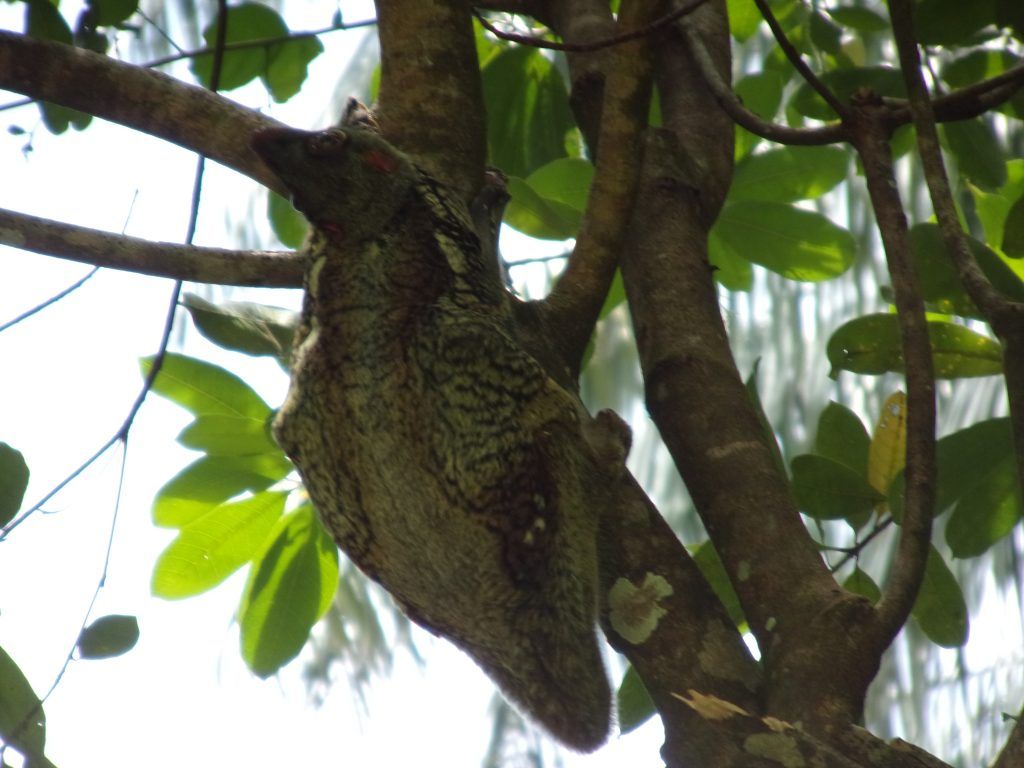
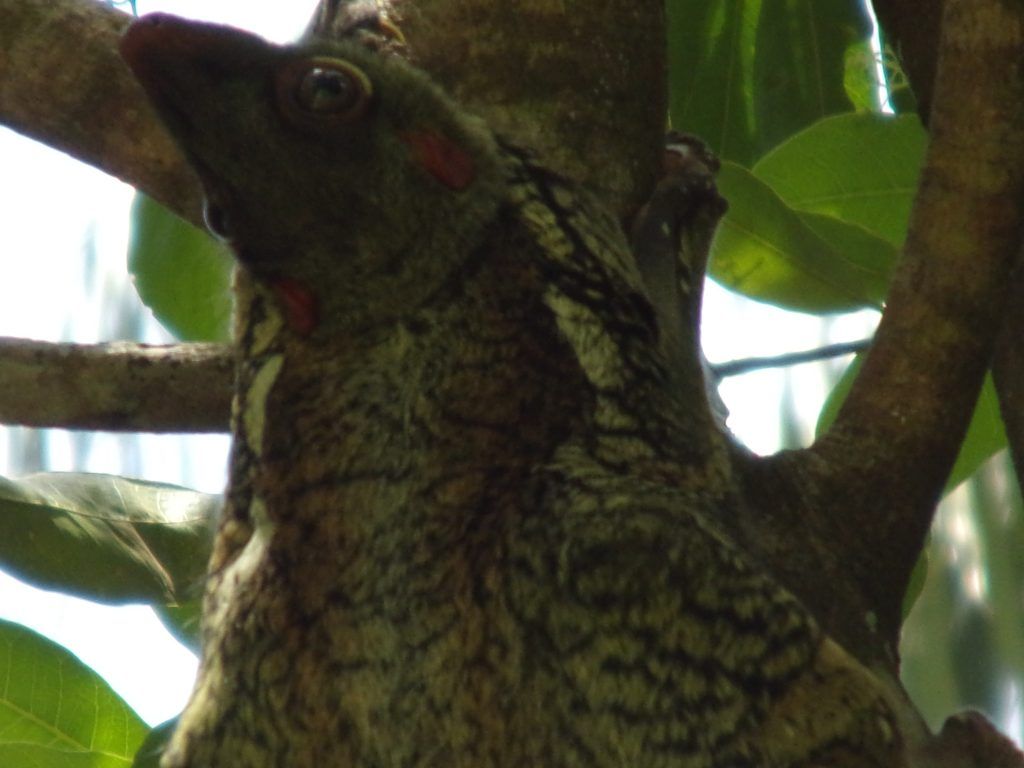
The second one was hanging from two legs like a bat with its gliding wings wrapped around it.
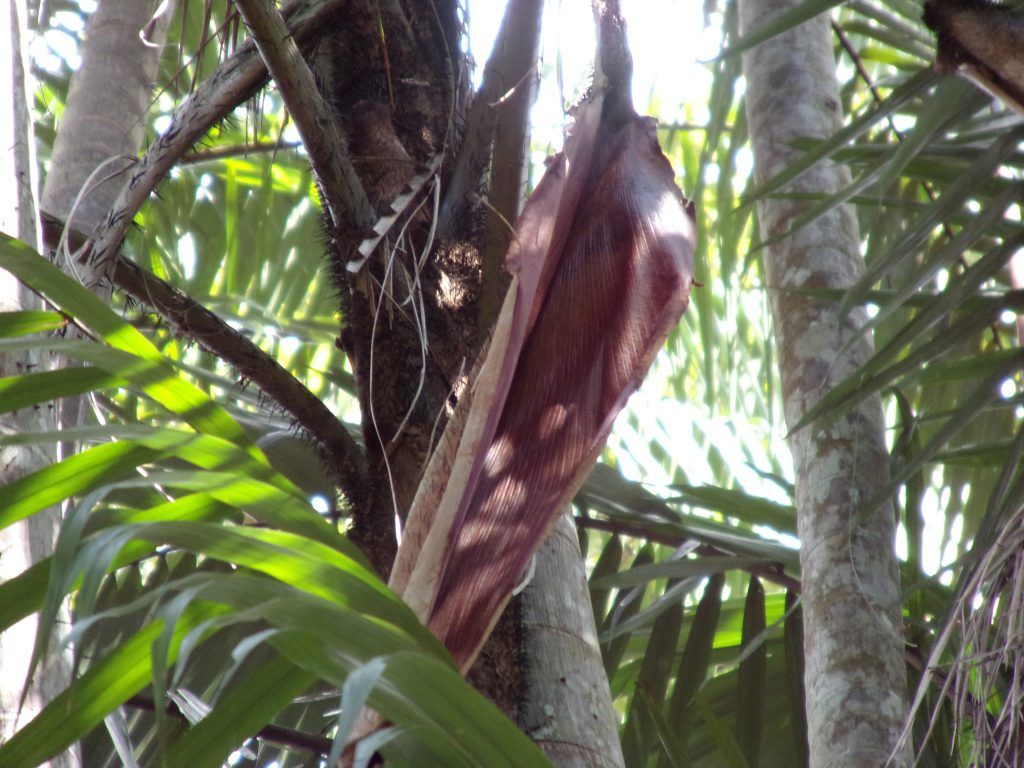
There were dozens of colorful crabs in one marshy section of the park.
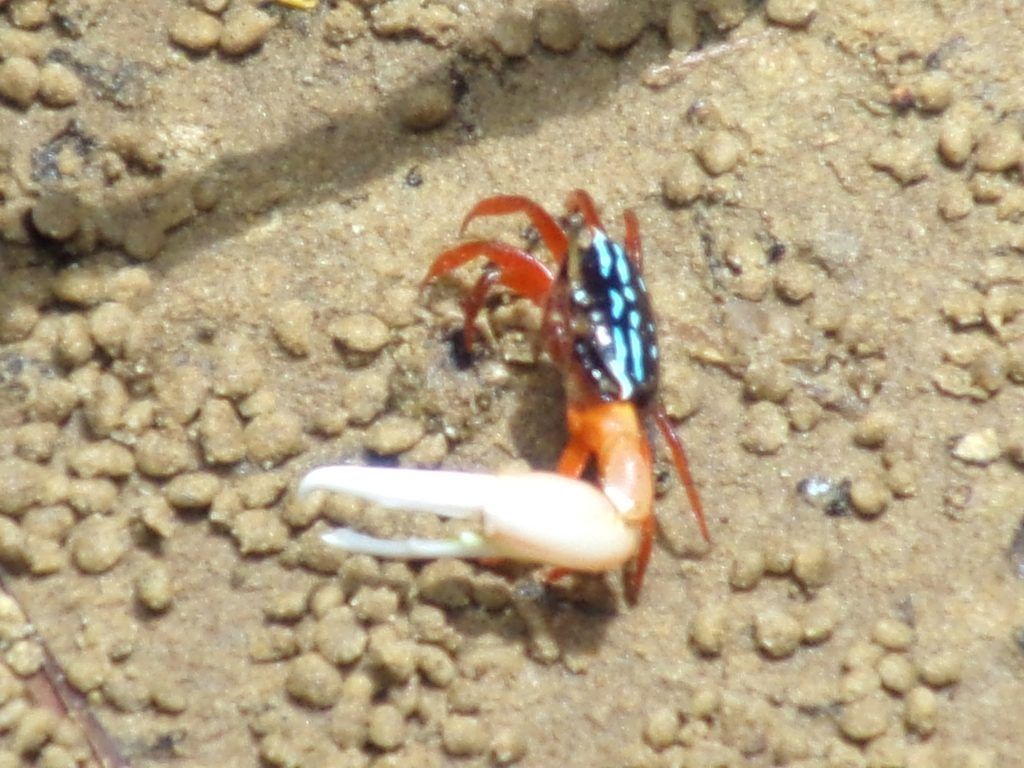
A green, quick lizard on the sidewalk in front of me.
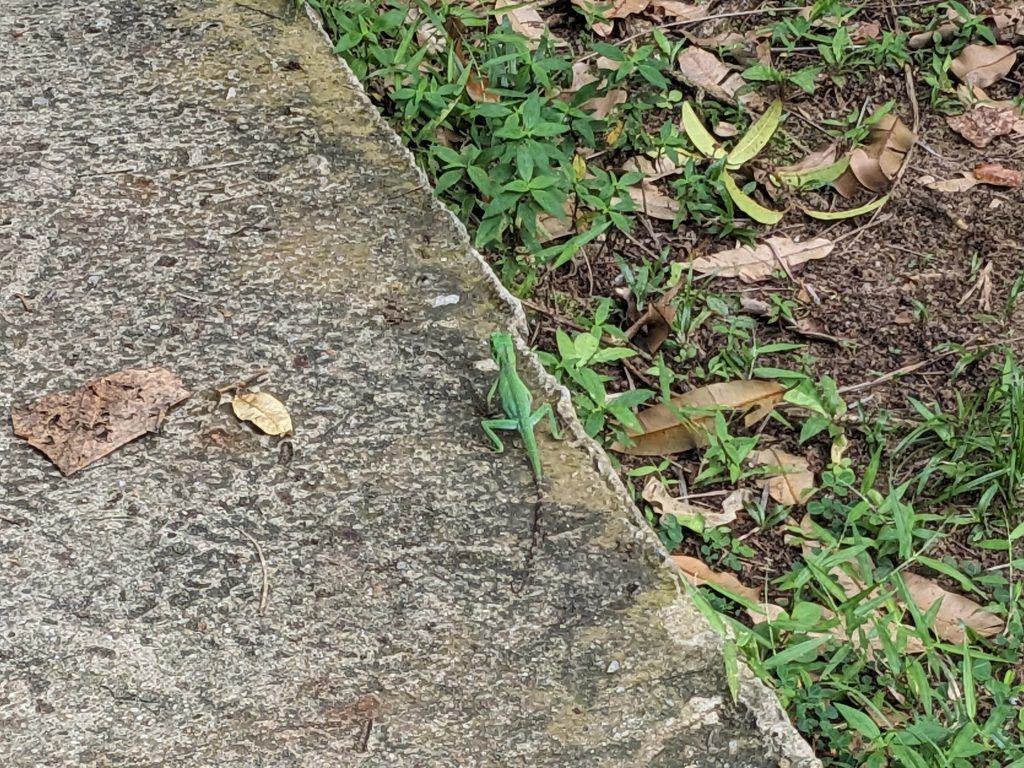
You can get a sense of the diversity of the park from these pictures of the various parts of some of the walking I did.
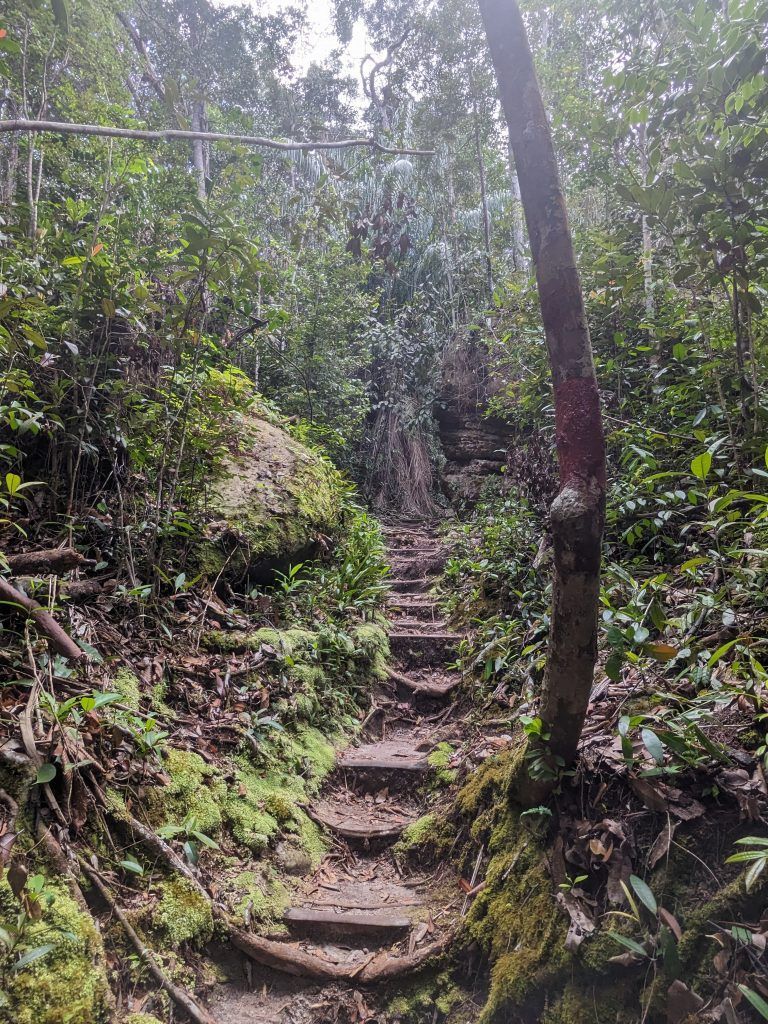
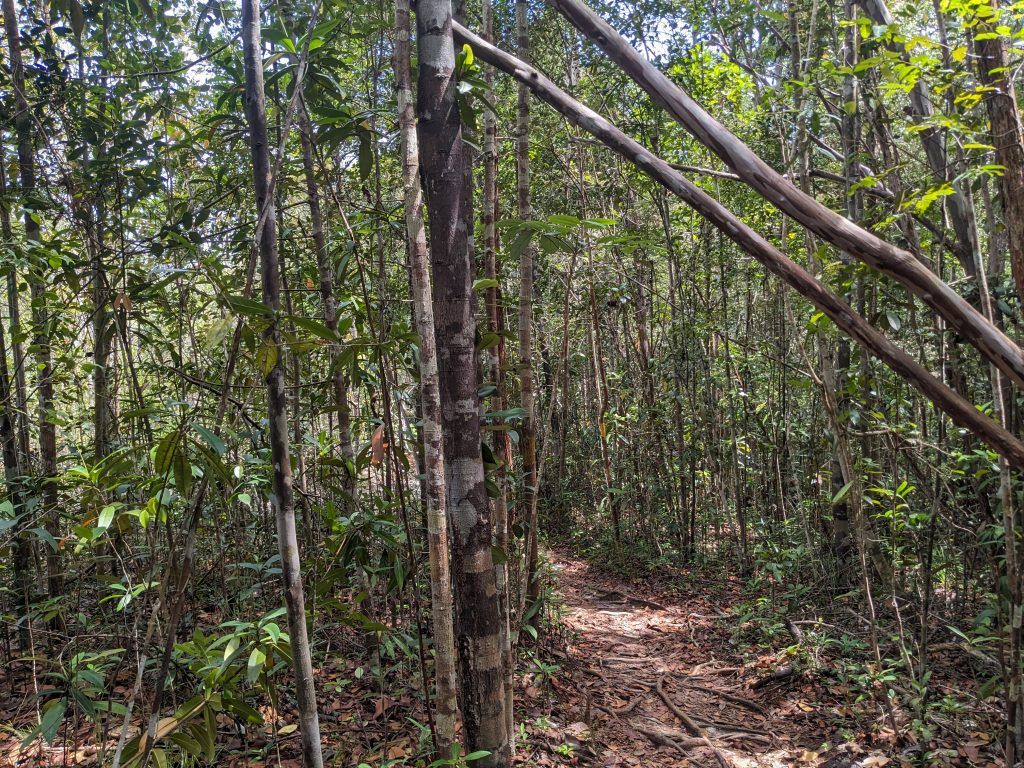
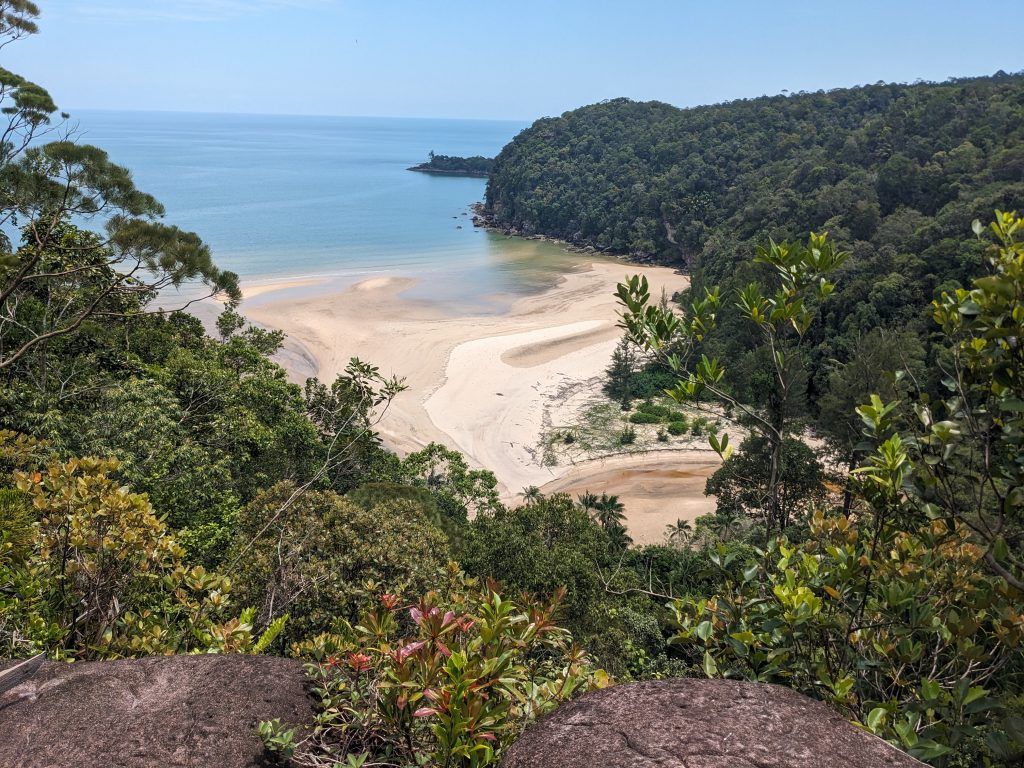
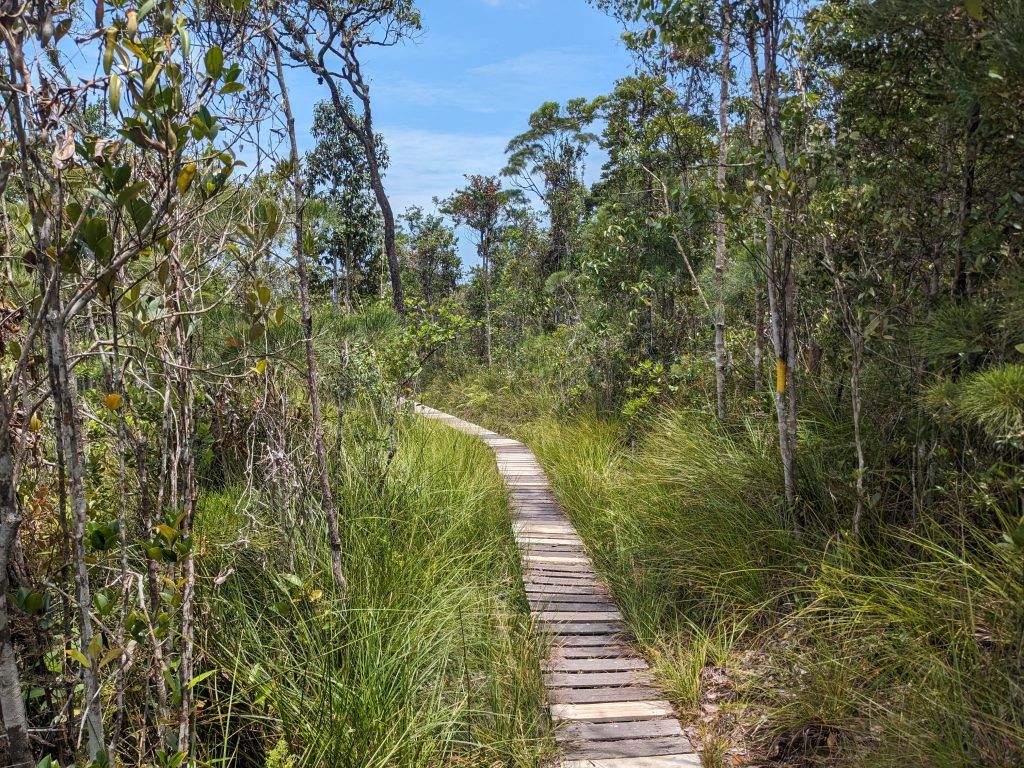
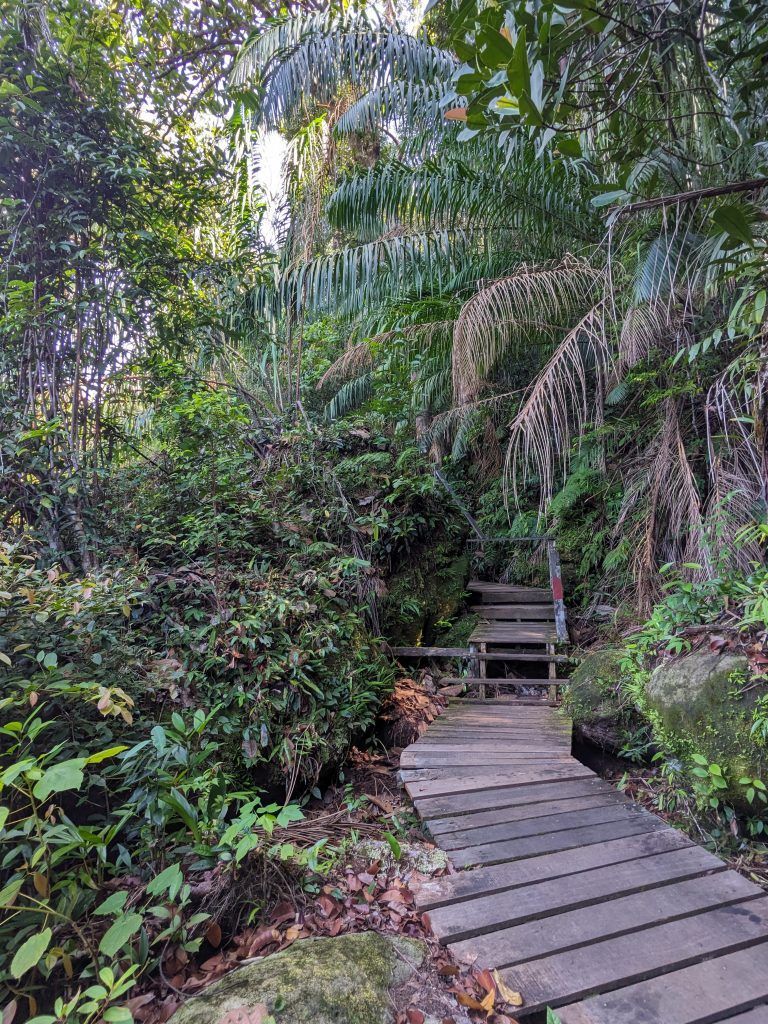
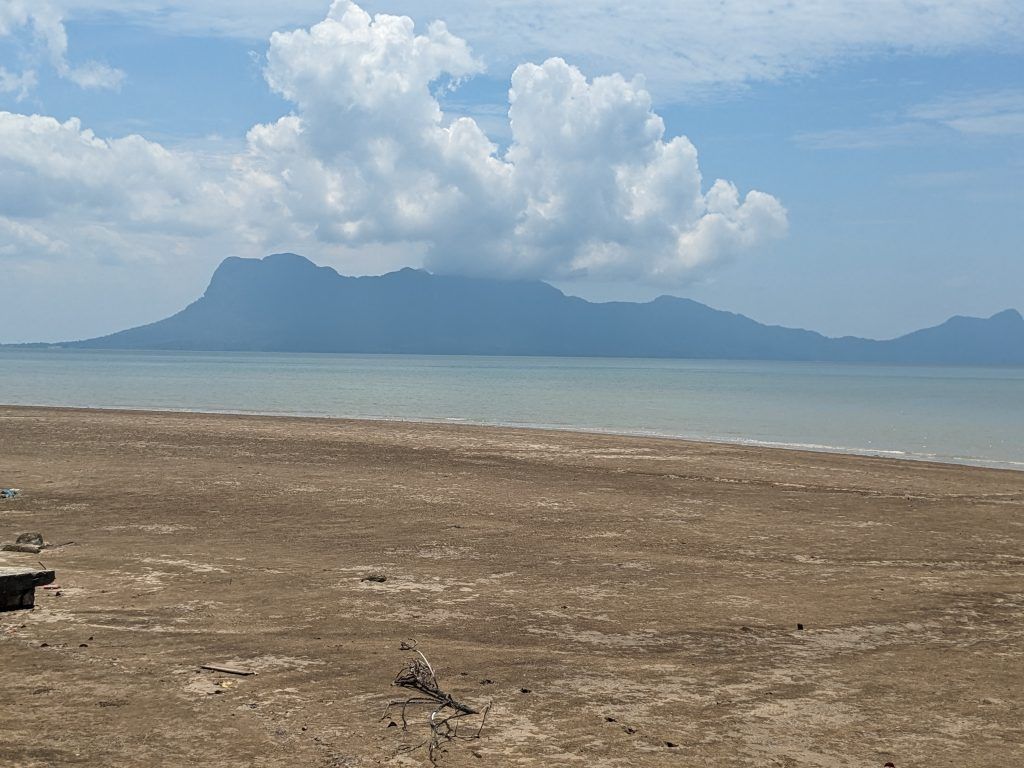
The park accomodations were just inside the jungle from the main beach where we entered and exited the park from a 20 minute boat ride from the village of Kampung Bako, which is about an hour from the city of Kuching.
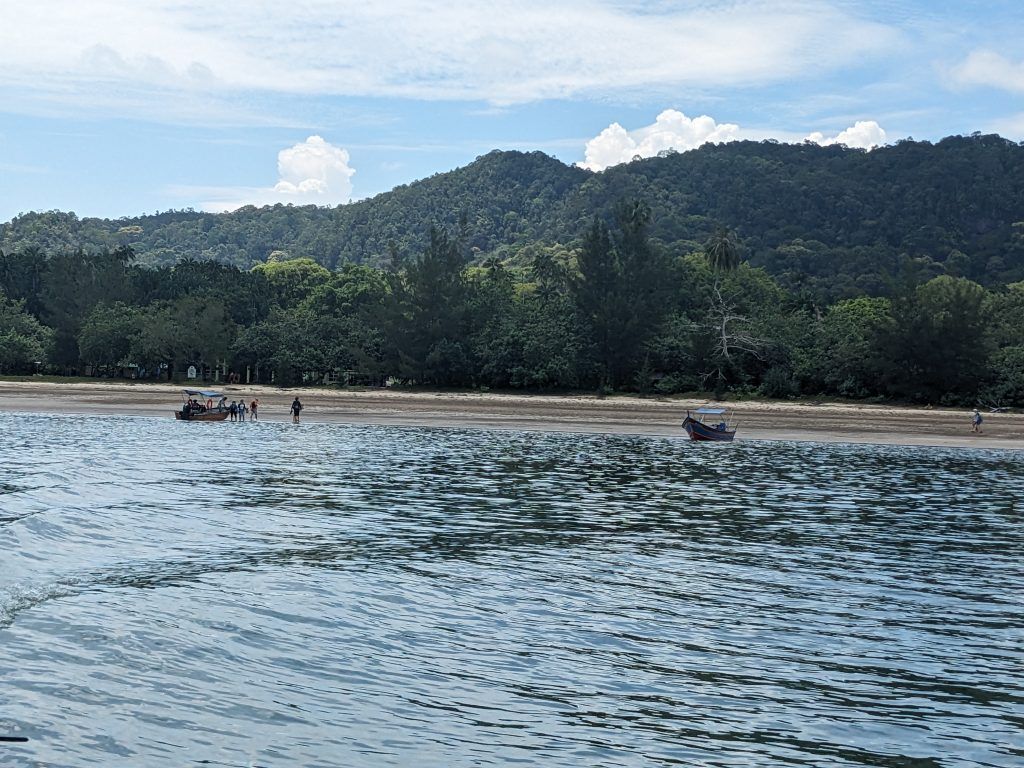
The accomodations were set beautifully in the jungle.
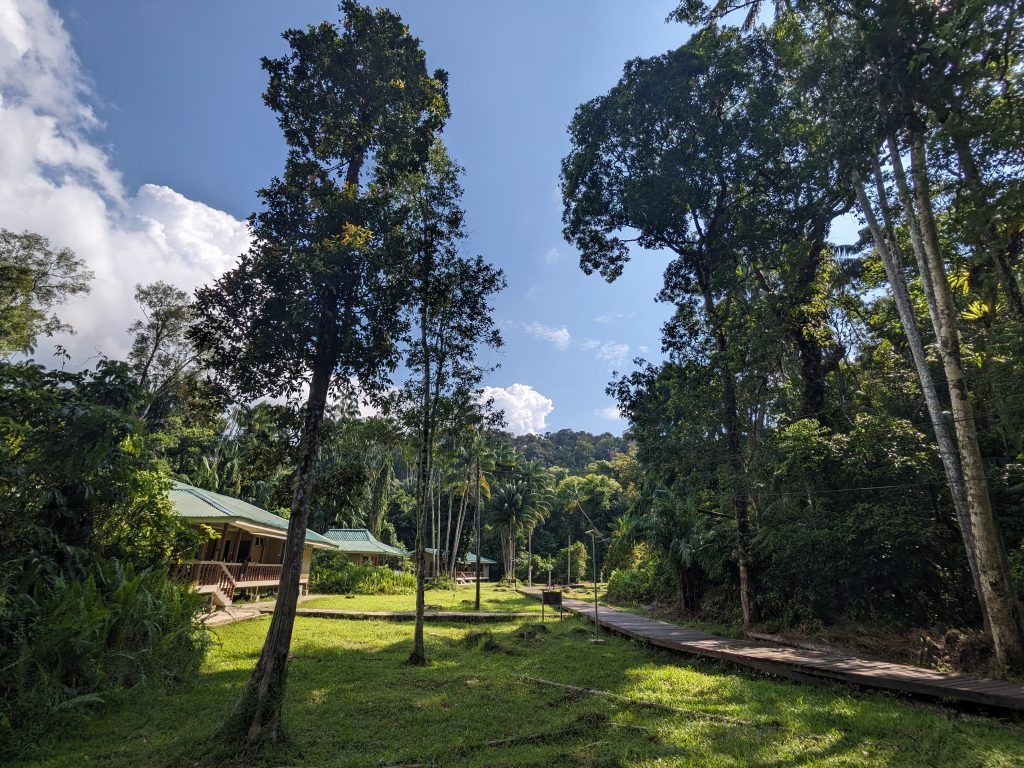
The single room I stayed in on the left.
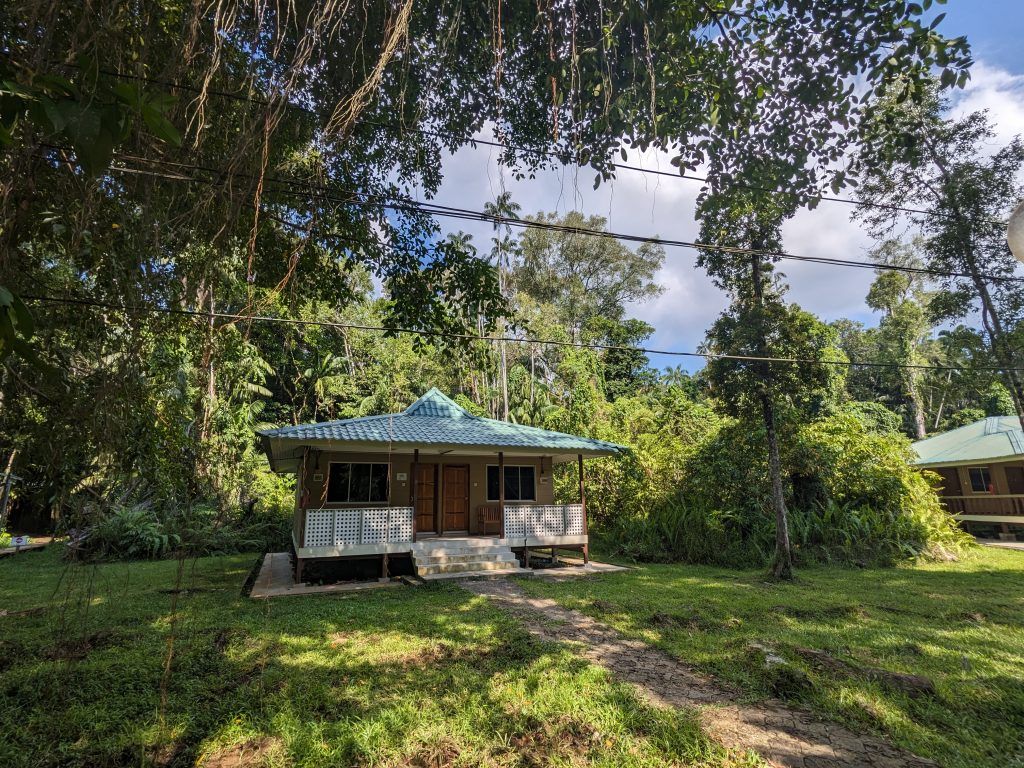
As usual, some of the coolest things we saw were on the night walks. Below is a very venomous green viper.
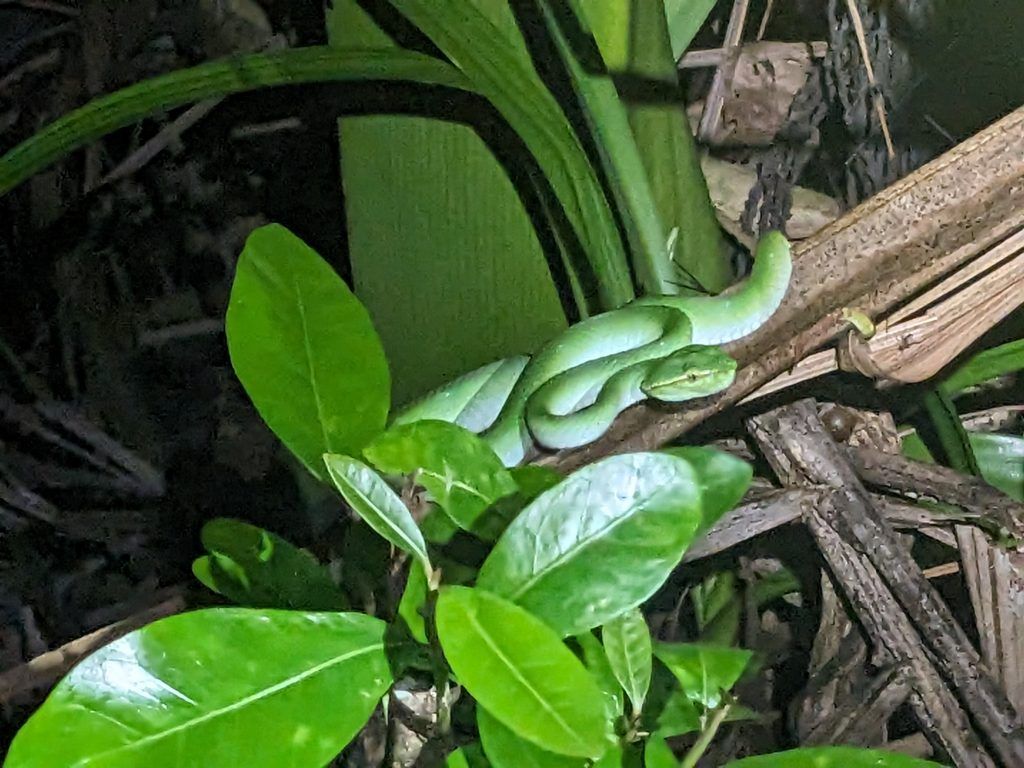
And it was in basically the same place when I went by the next morning.
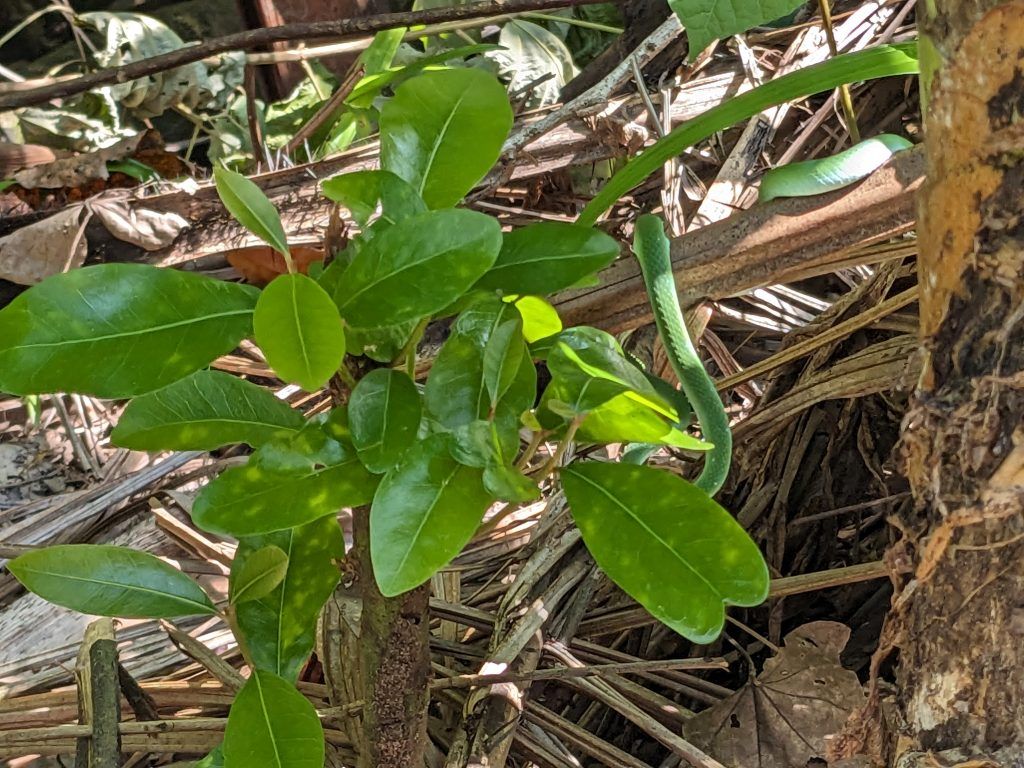
A nicely colored, harmless, brown snake moving along a branch.
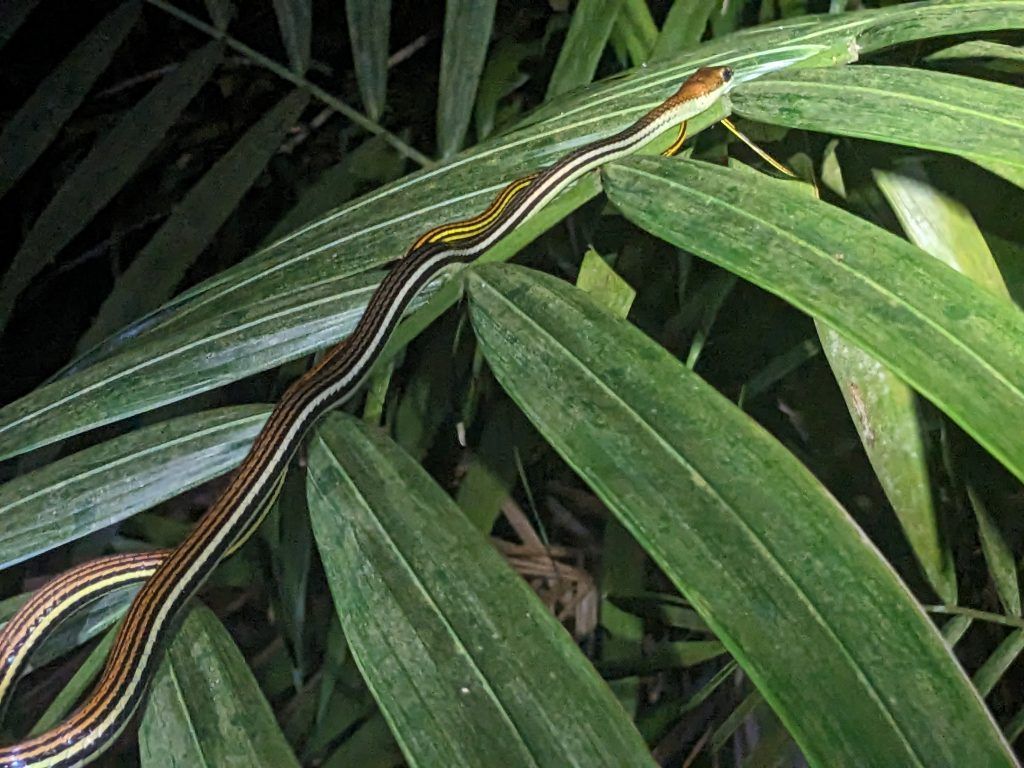
One of many stick bugs we saw.
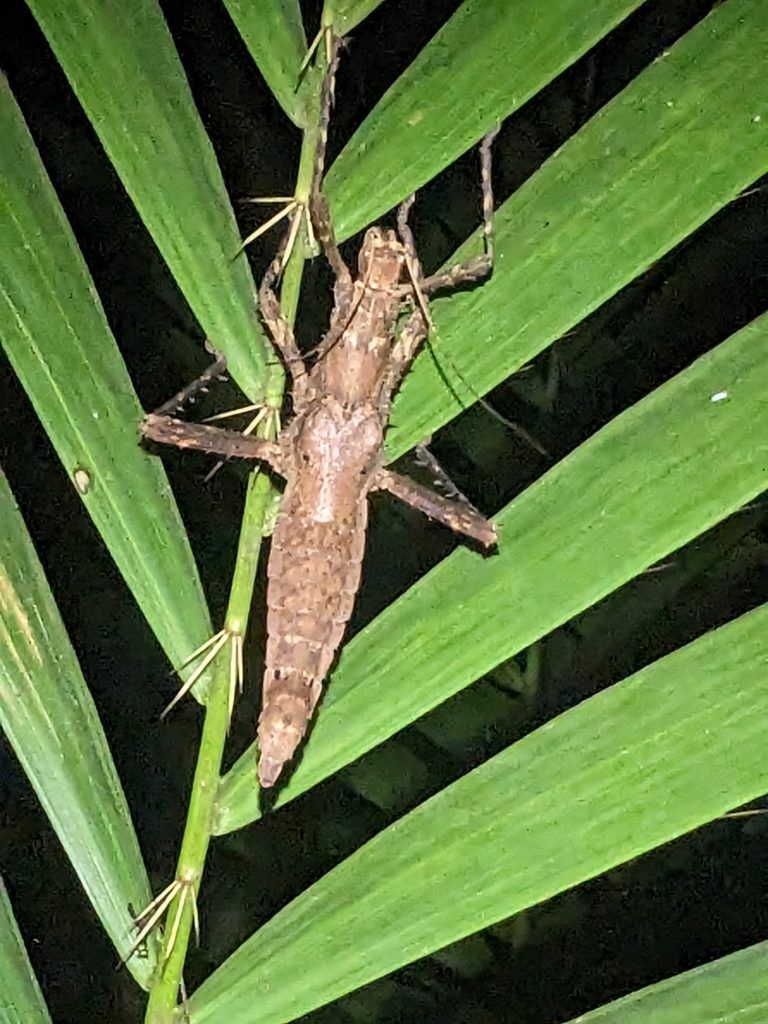
A small green frog with bulging eyes.
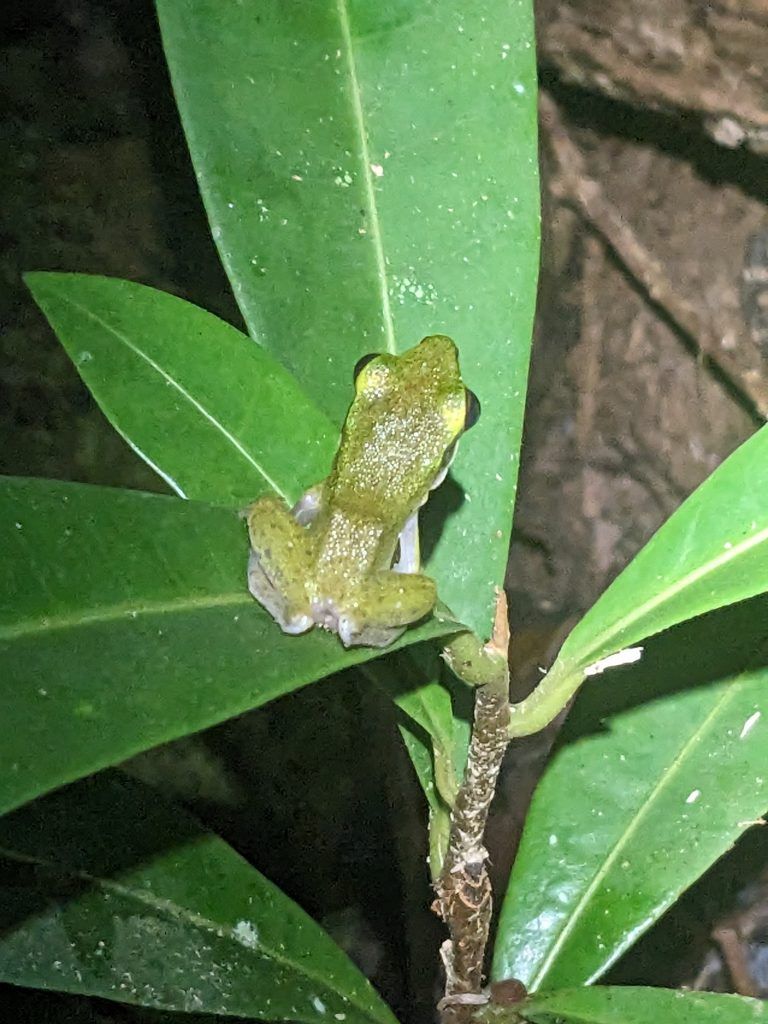
A gecko hanging on a small branch.
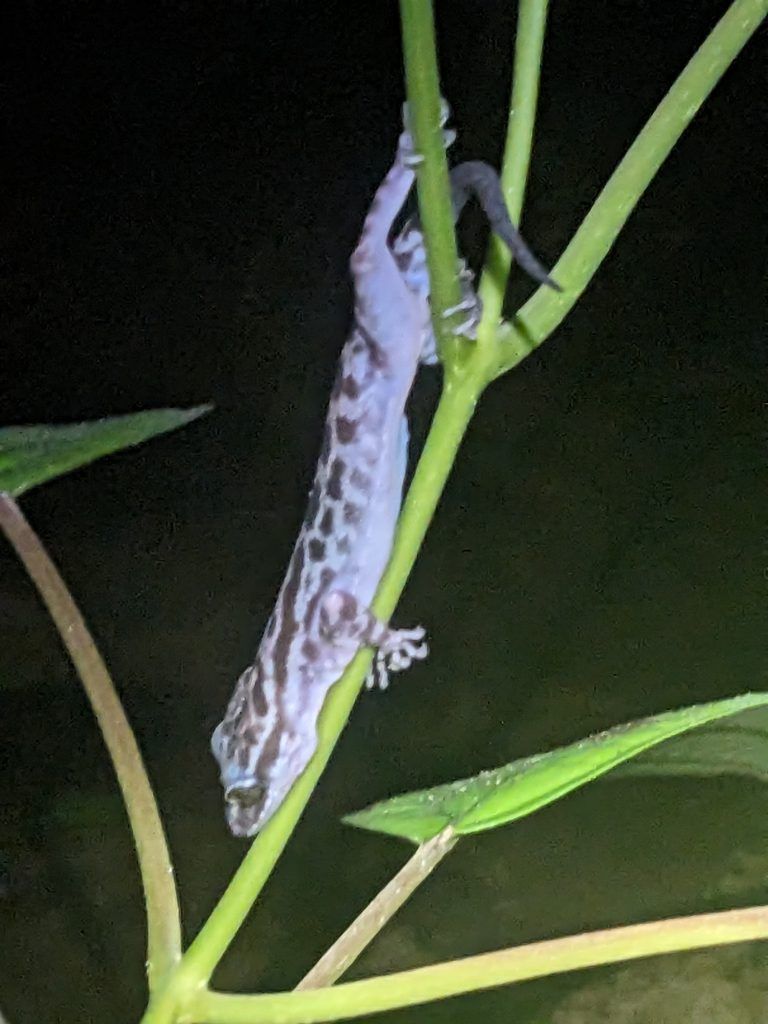
The sunset from the main beach.
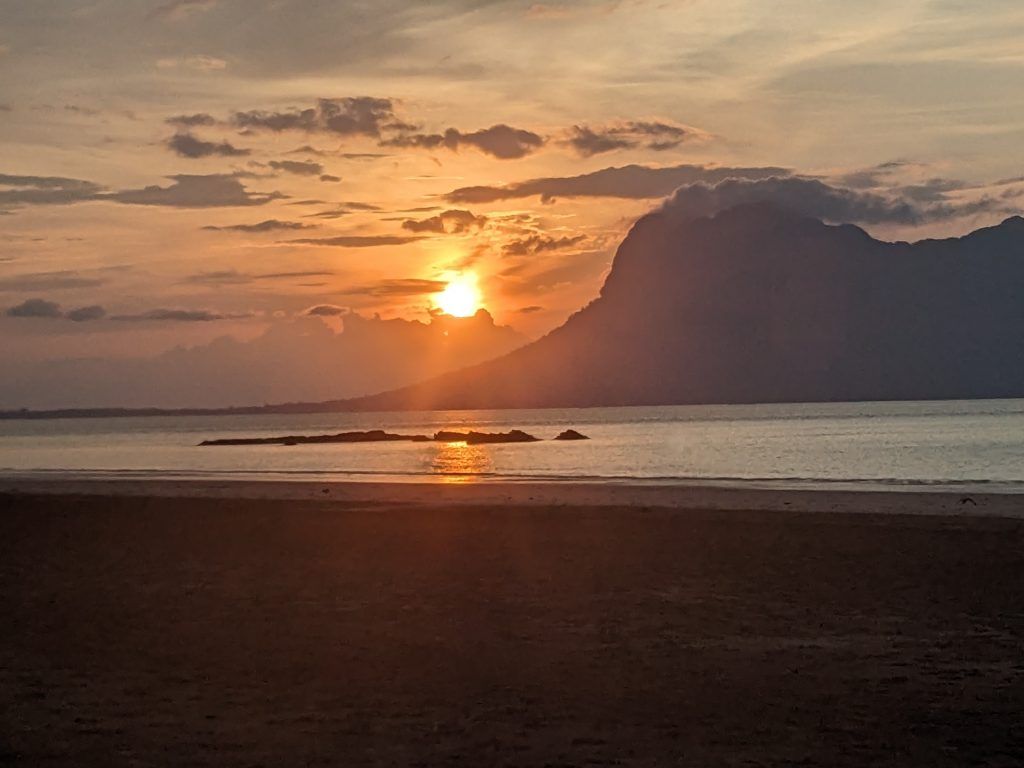
The Cities
Kuching
Yes, there were also cities in Malaysian Borneo. The largest city, Kuching, was by far the most charming city I visited.
Maybe its charm comes from its nickname as Cat City (as Kuching is close to the Malay word for cat, kucing) and therefore has some cute cat statues on its roundabouts.
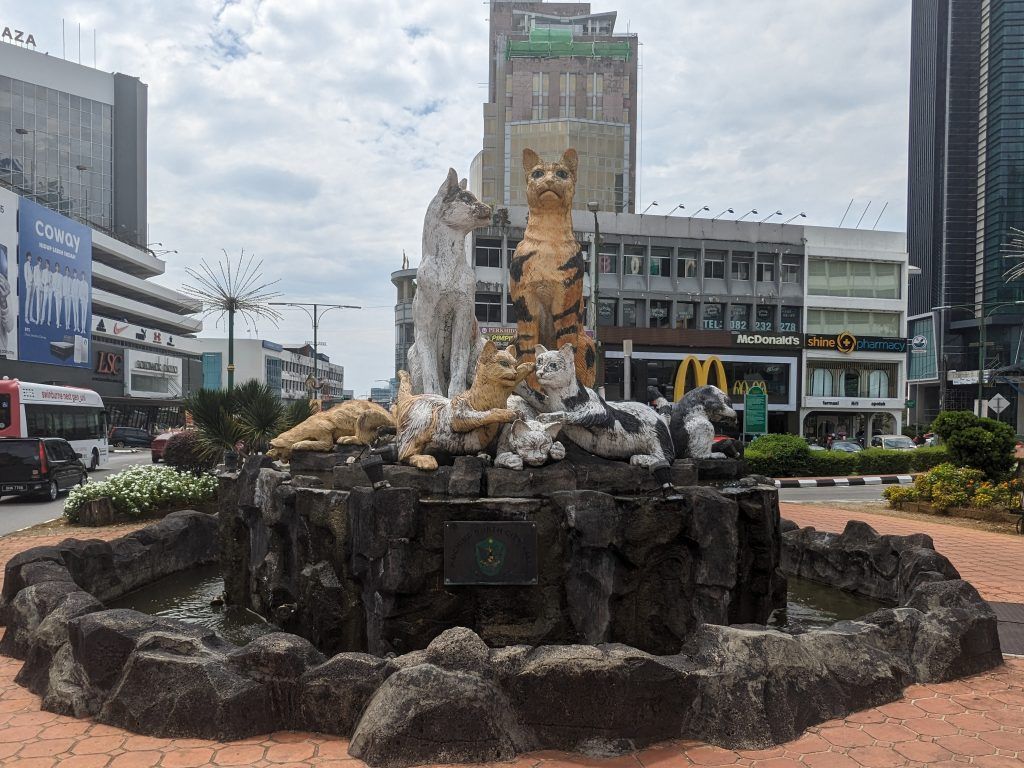
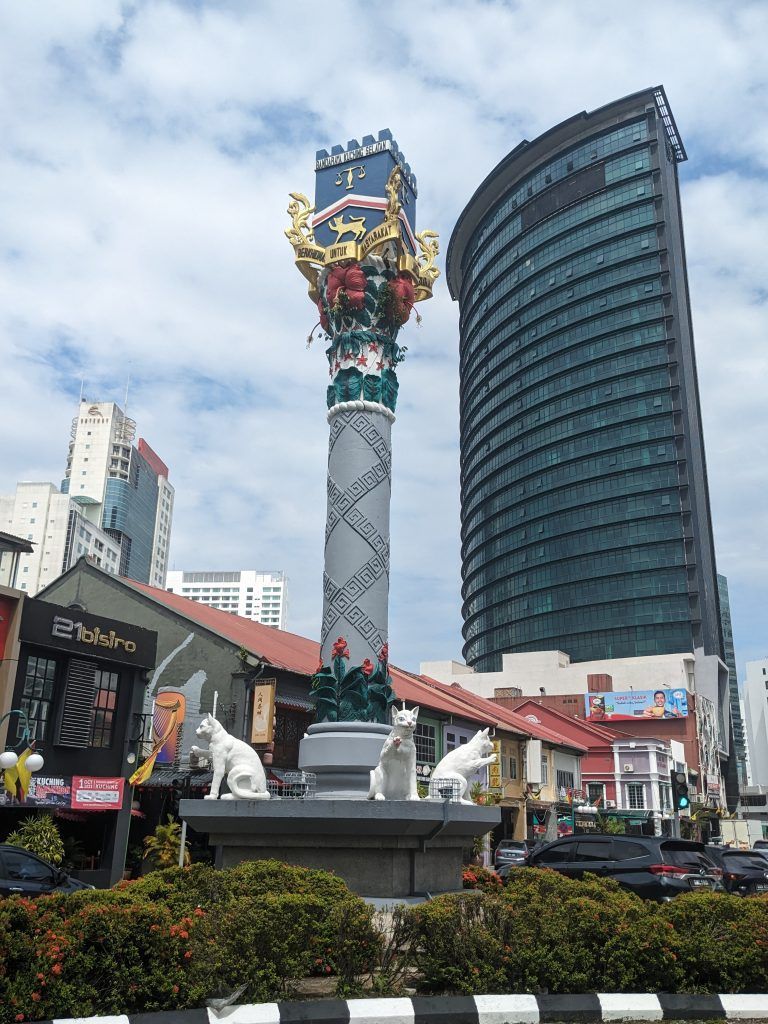
Maybe its charm comes from the Meow Meow Cafe where you can hang out with cats with your coffee or tea.
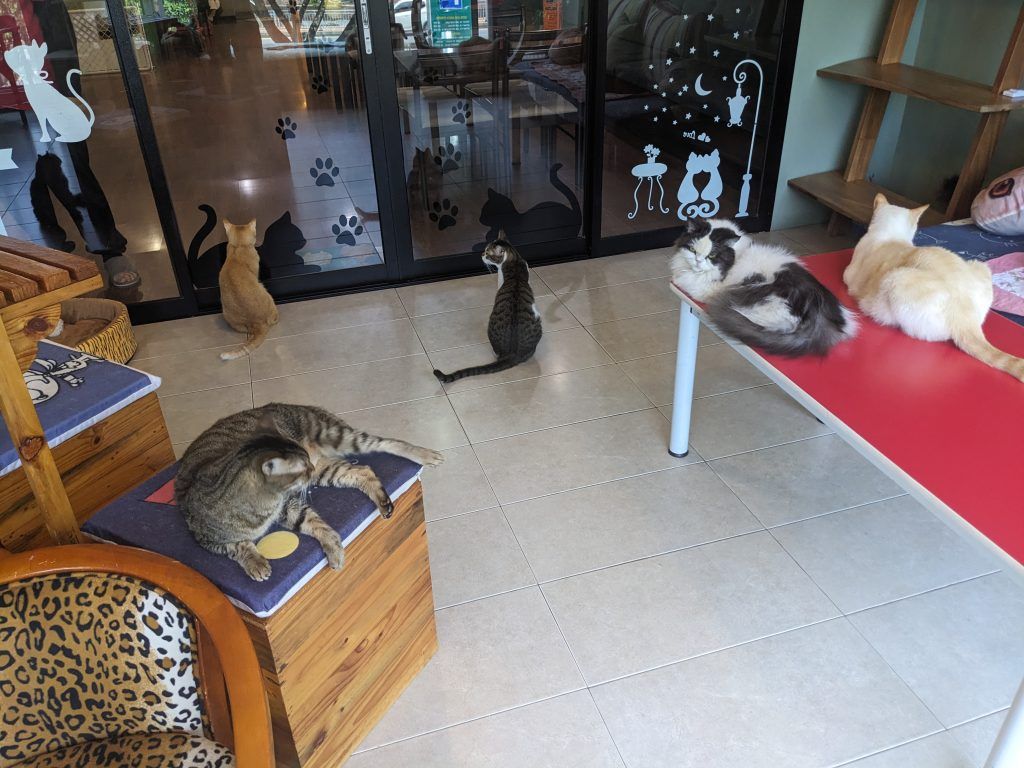
Maybe its charm comes from the Upside Down House where you can get some unique pictures taken….
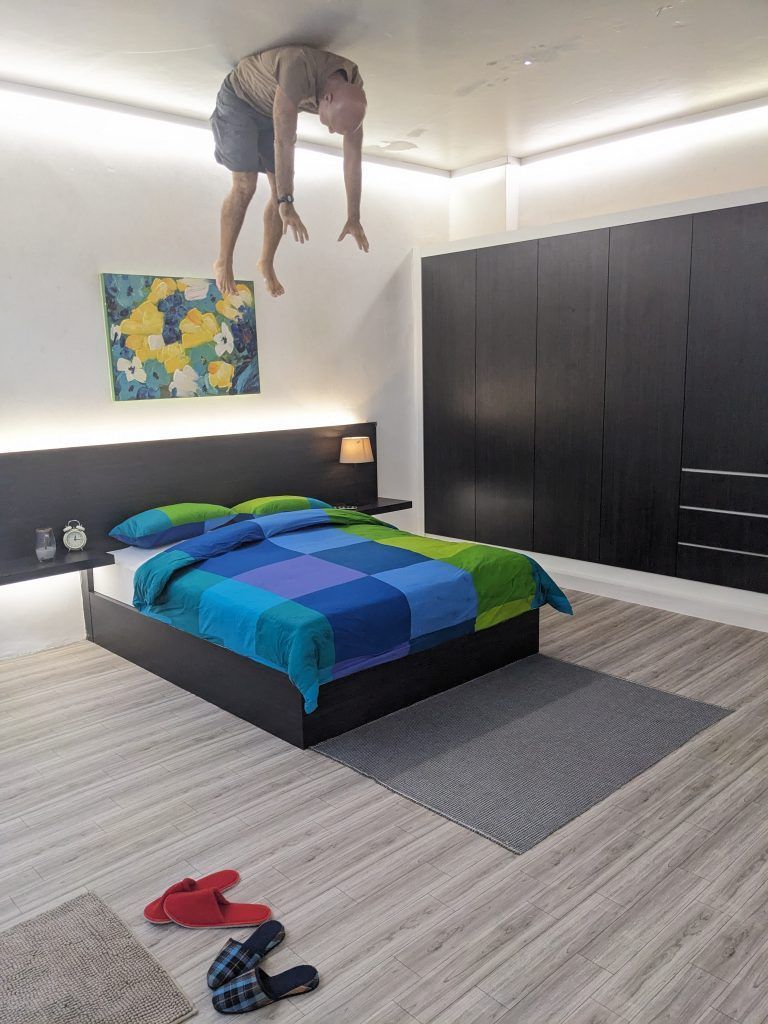
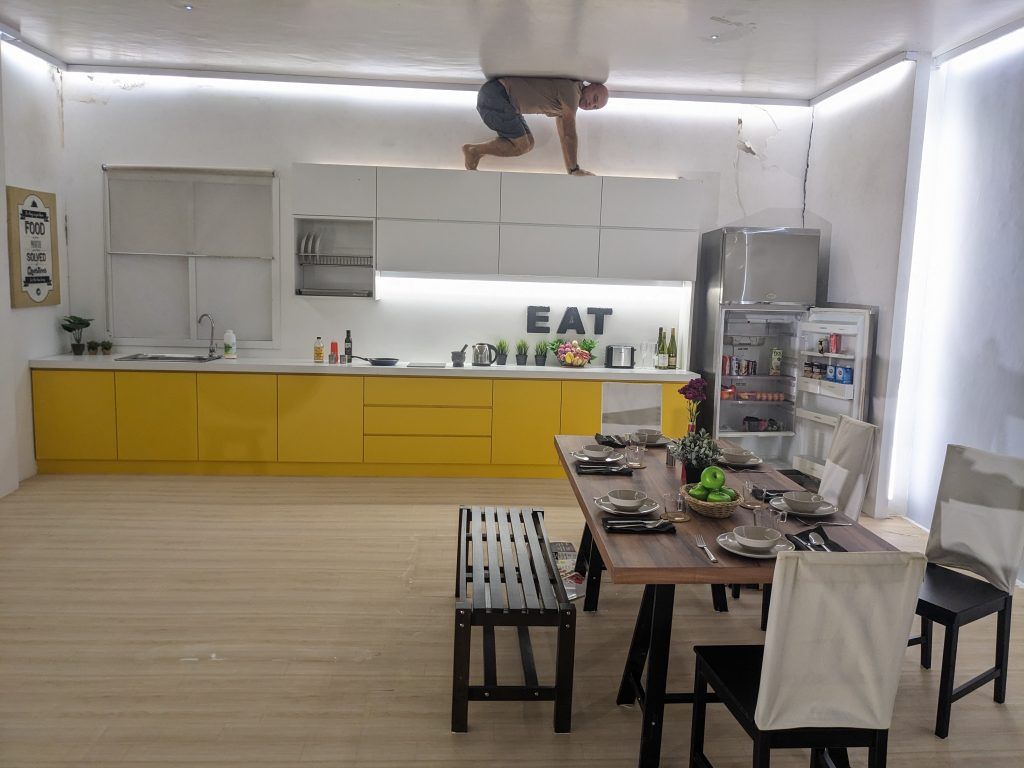
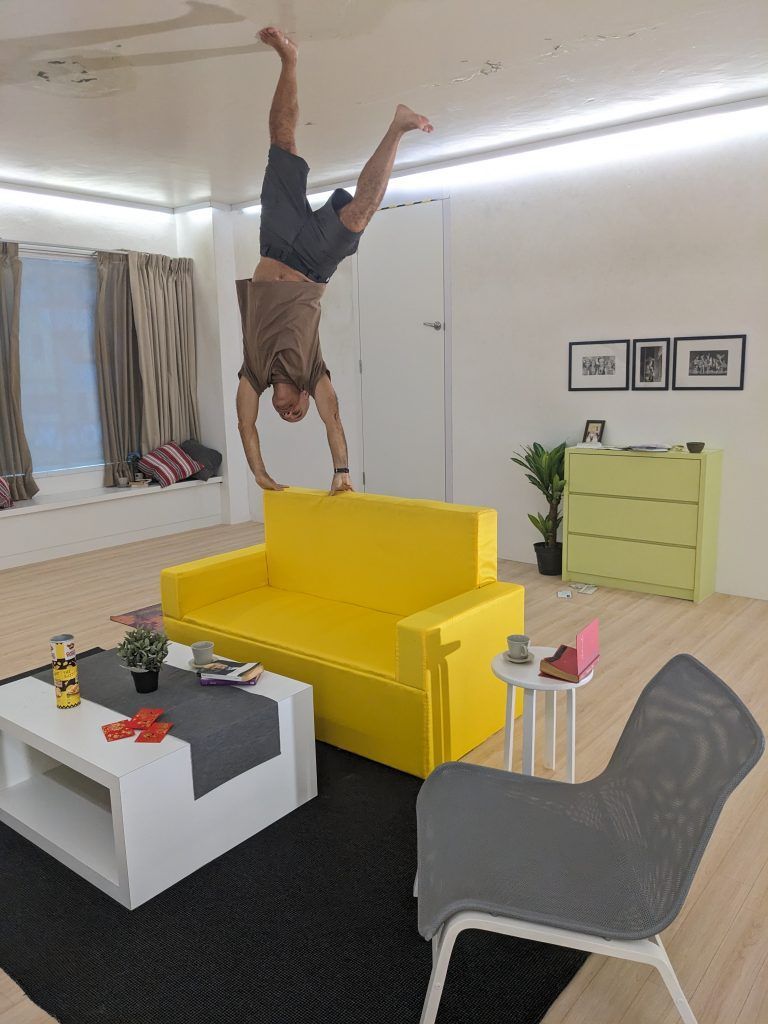
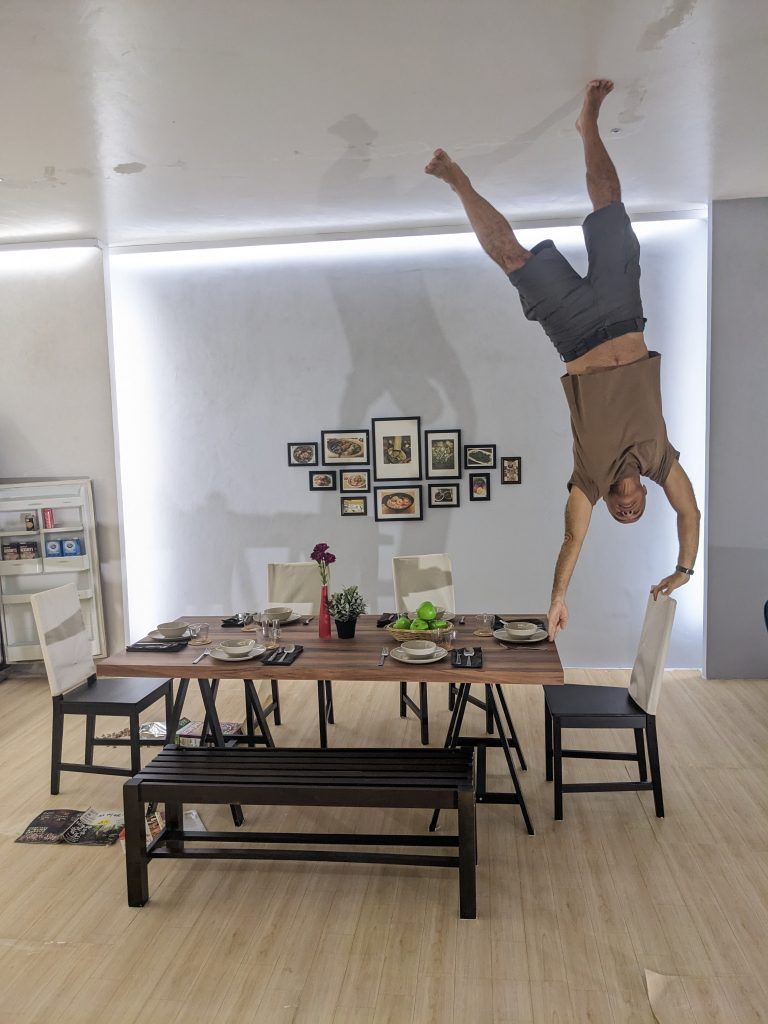
…or seeing a really cool perspective art selection at the end of the House. Notice how the perspective changes as I walked around it, and then see how it’s really just a series of triangular blocks coming out of the wall.
Maybe Kuching’s charm comes from its nicely developed riverfront and its atmospheric streets.
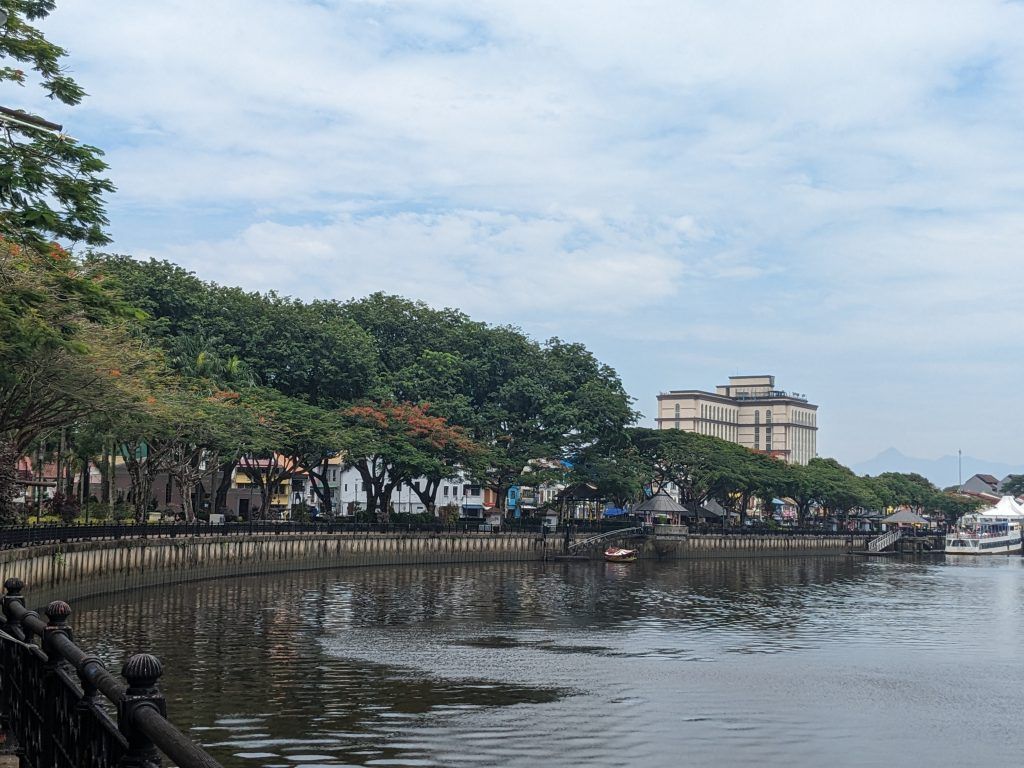
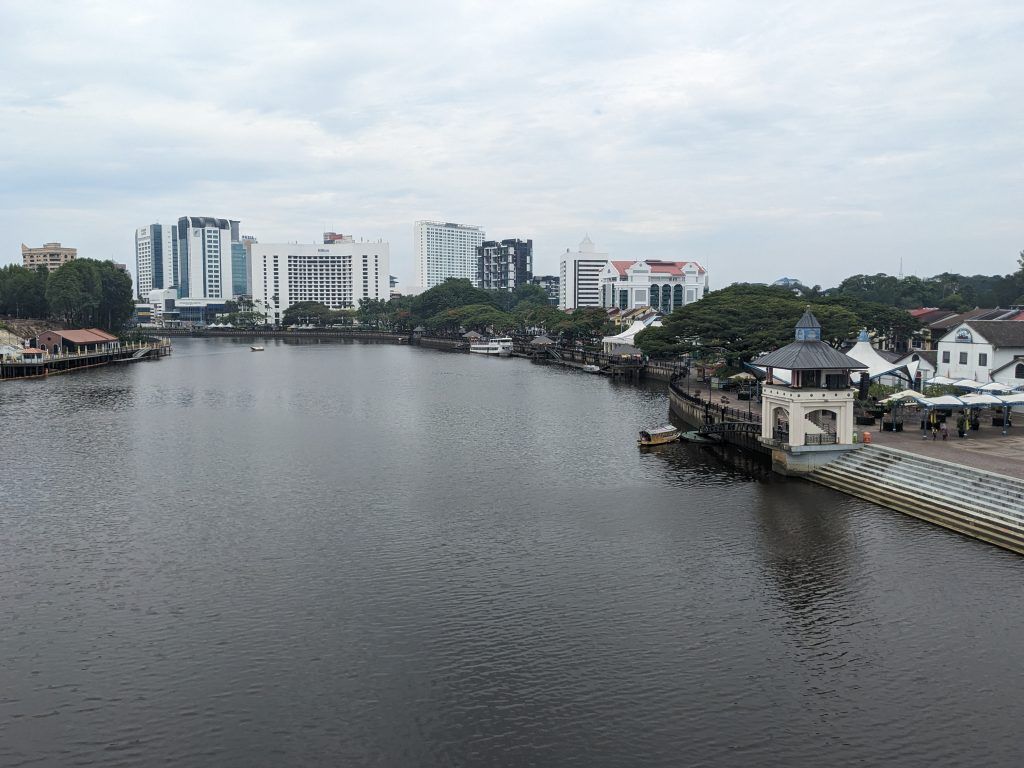
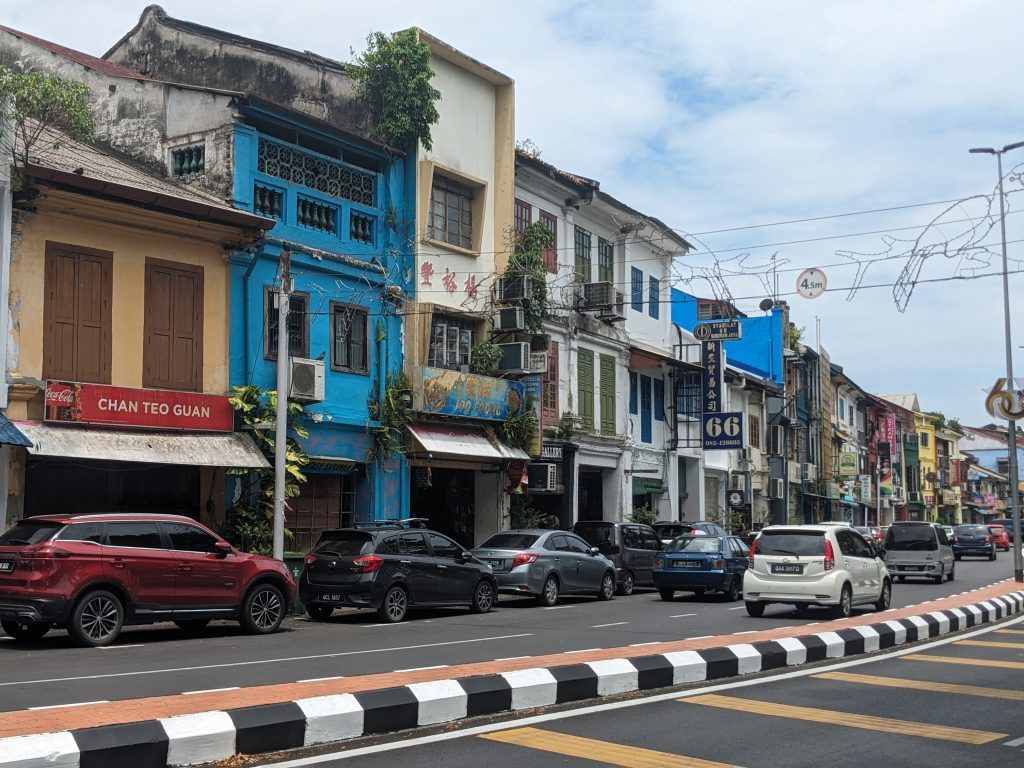
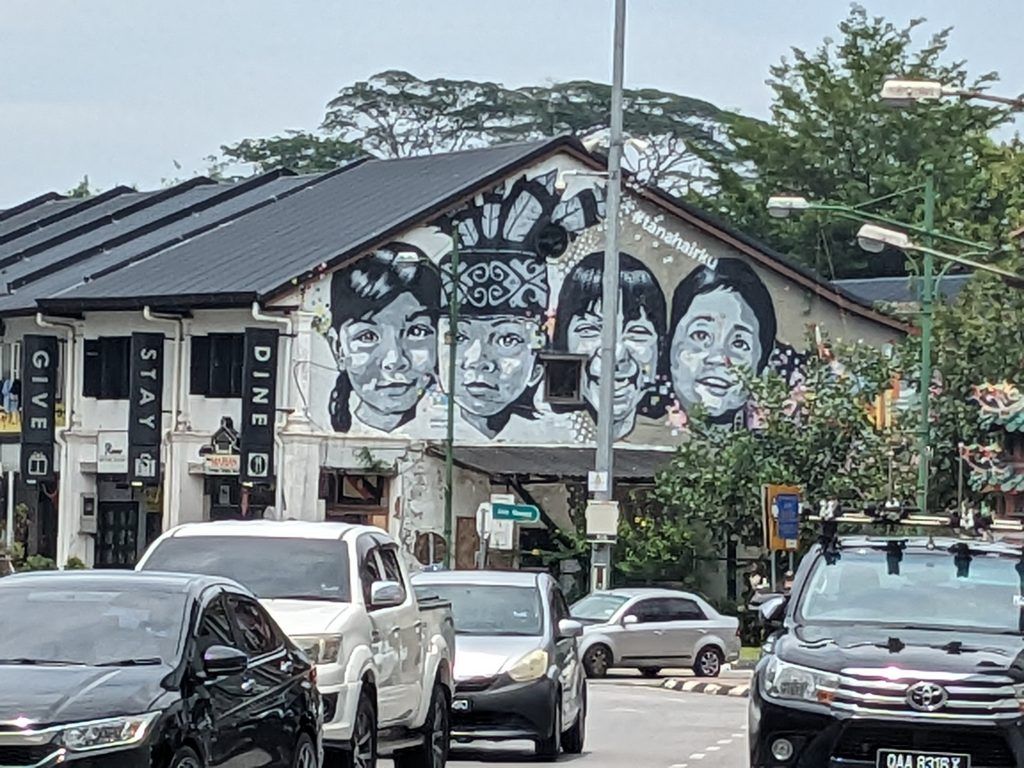
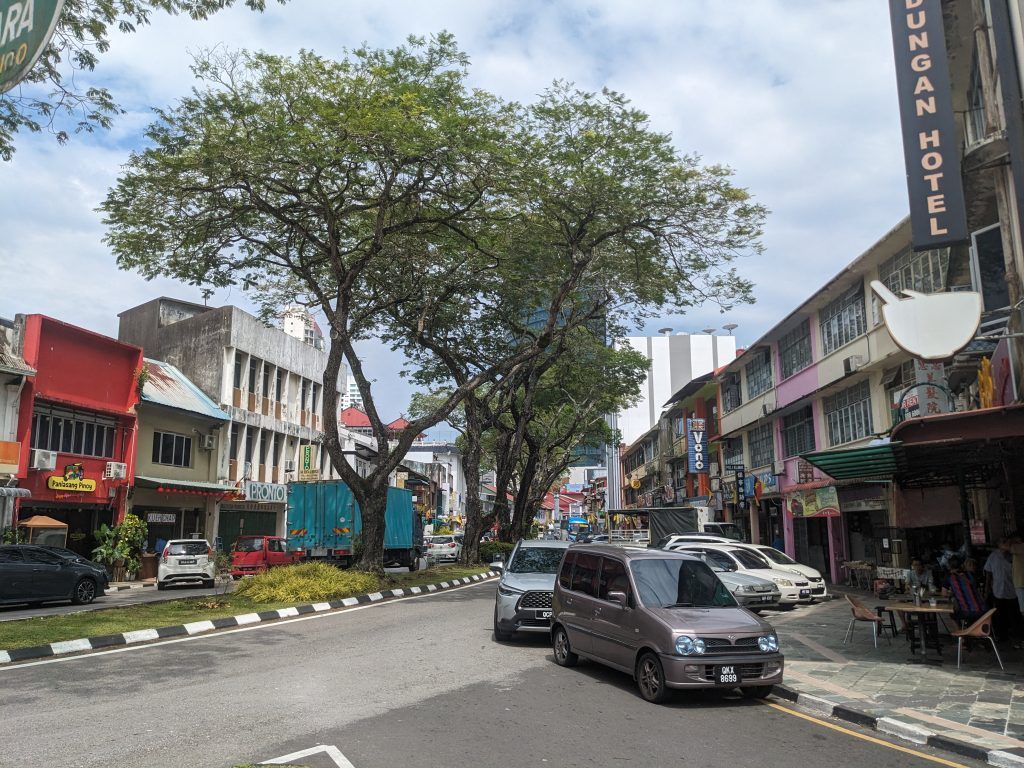
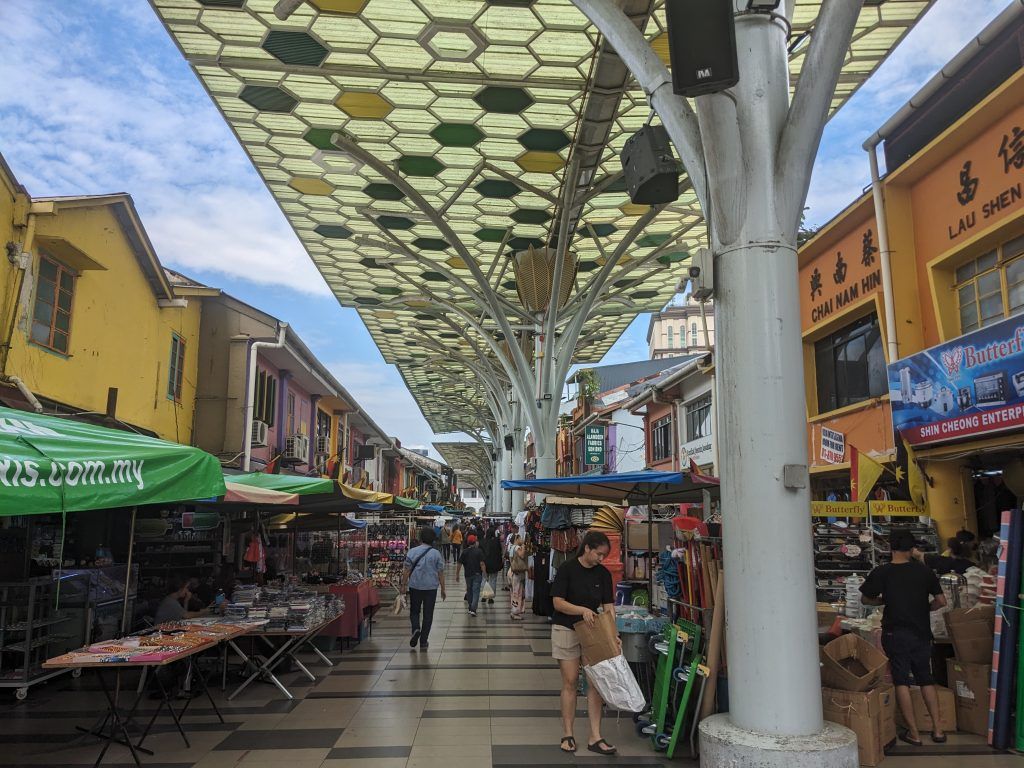
Or maybe Kuching’s charm comes from its sublime Orchid Park.
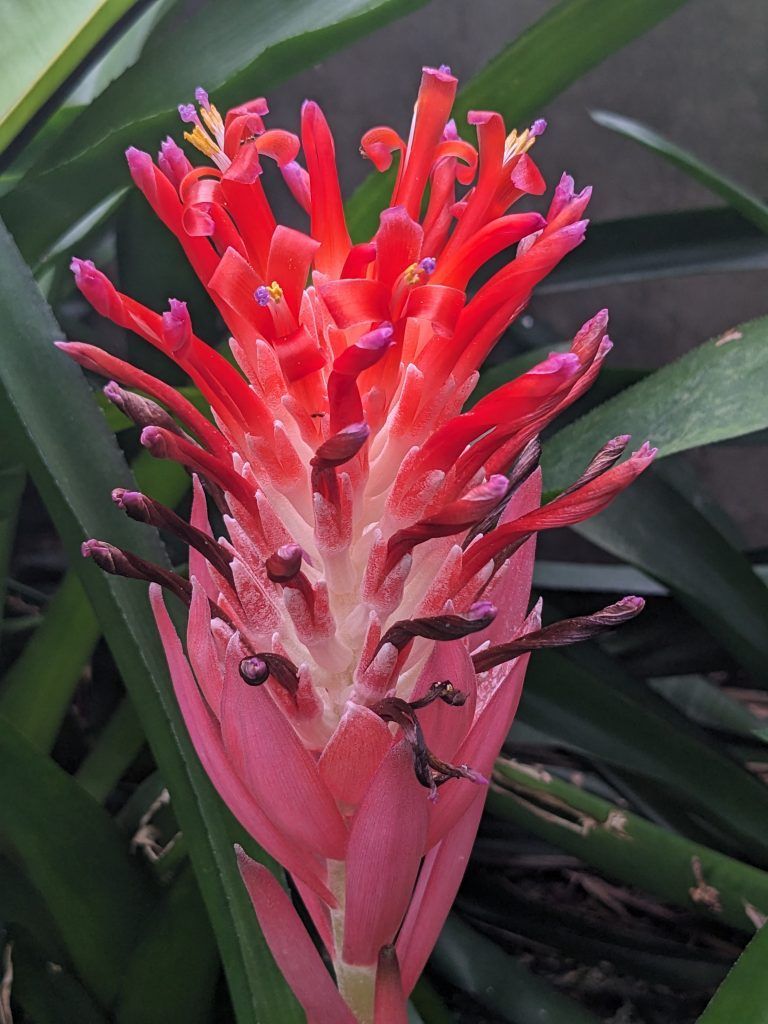
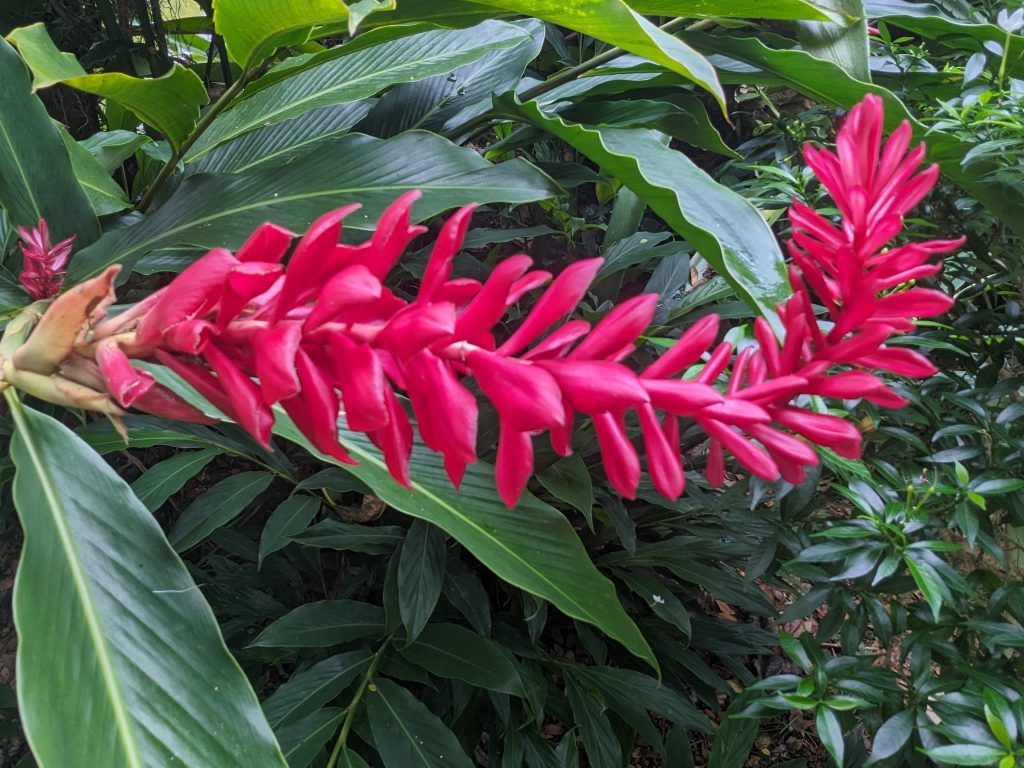
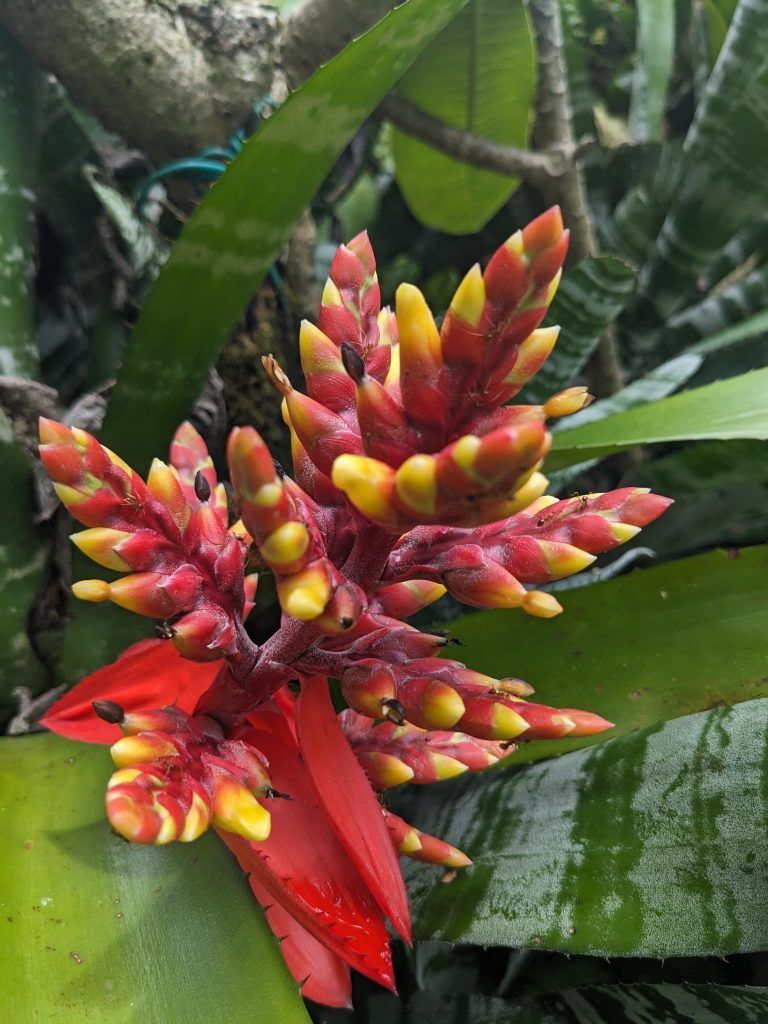
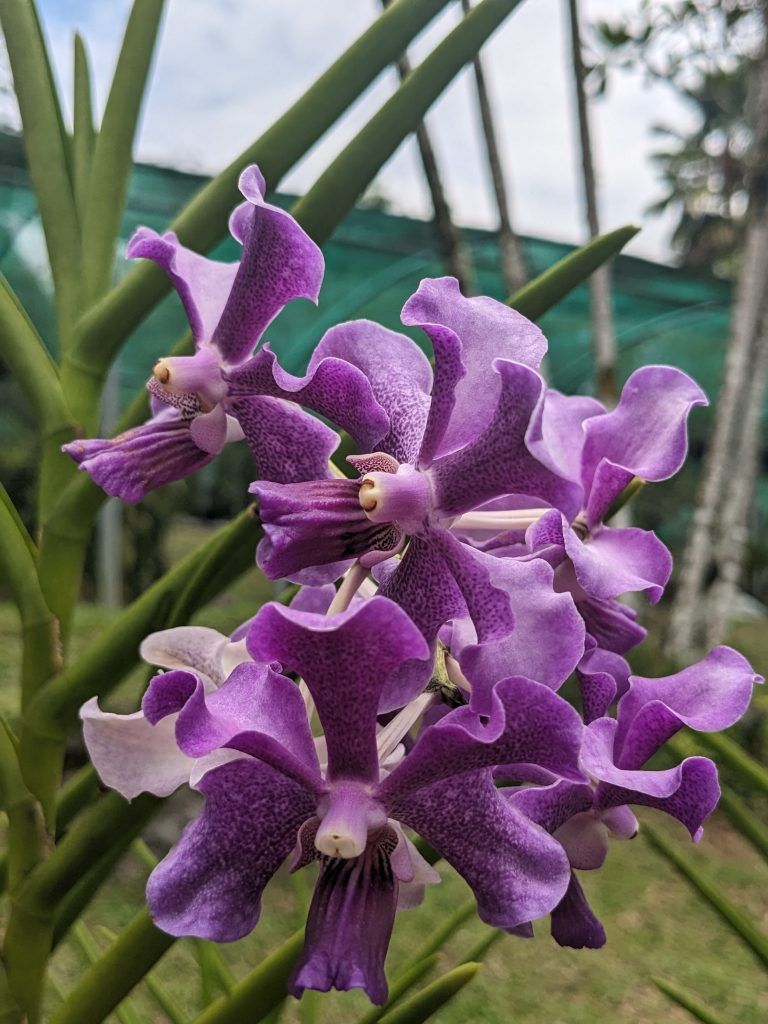
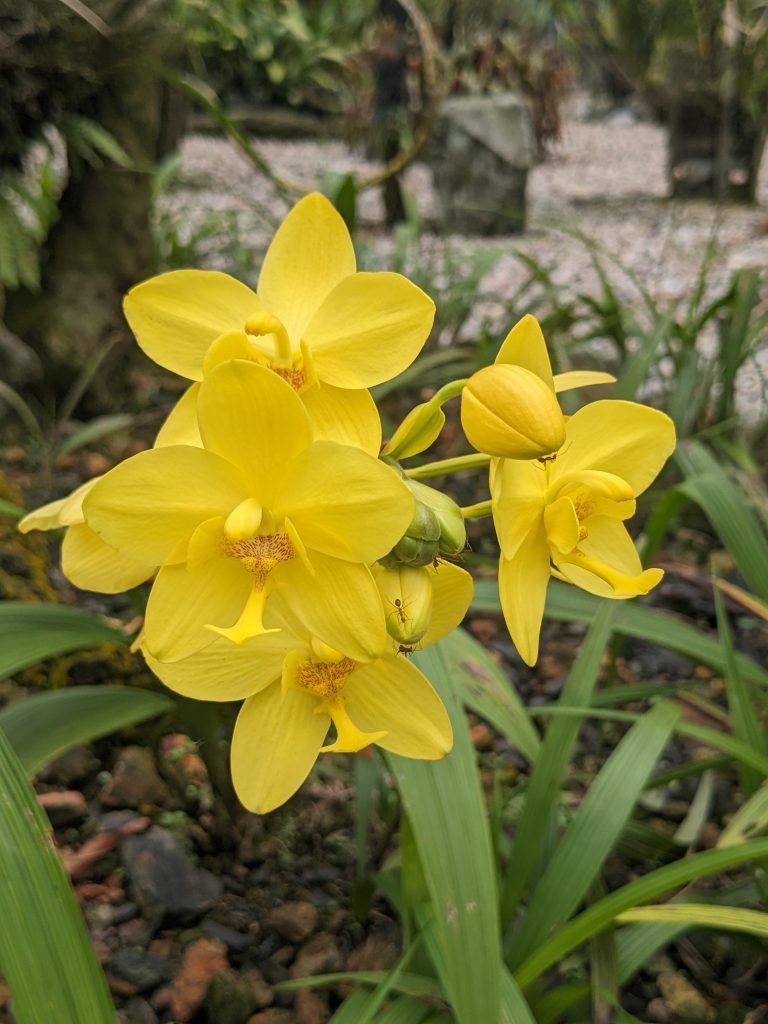
Two of the other cities I visited, Kota Kinabalu and Sandakan were really nice, but relatively nondescript, except for some fantastic food in KK. Unfortunately, Sempora – the gateway to the amazing diving in Sipadan – was an absolute dump.
The quaintest thing about Sandakan was the Englsh Tea House on a hill overlooking the small city.
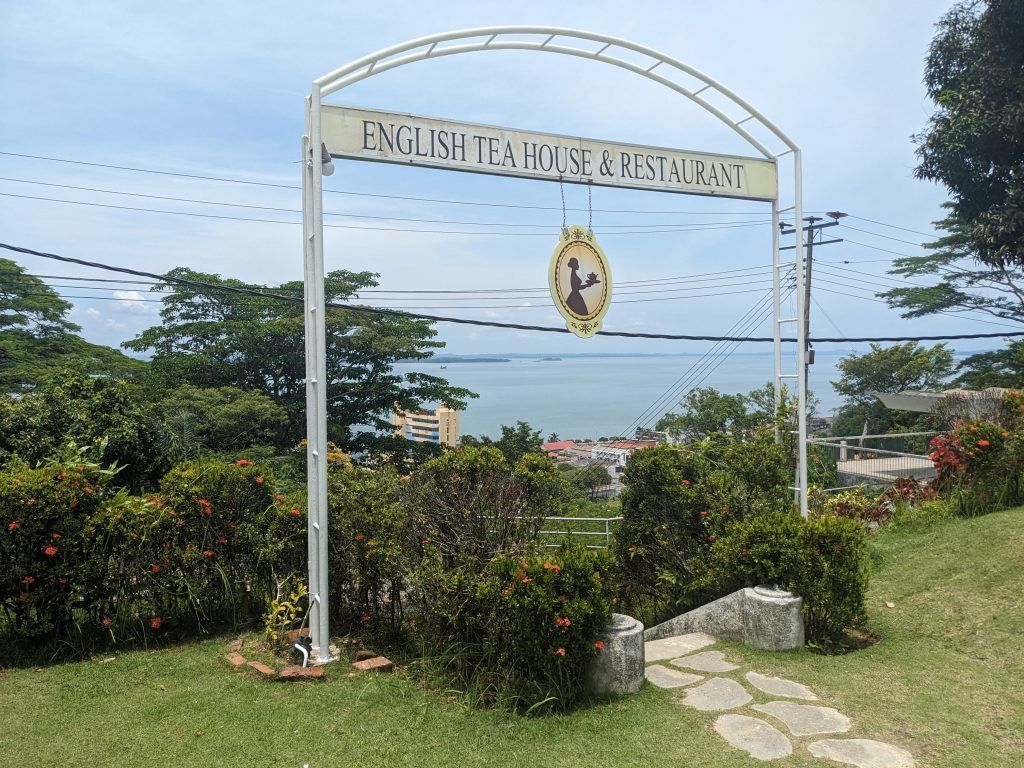
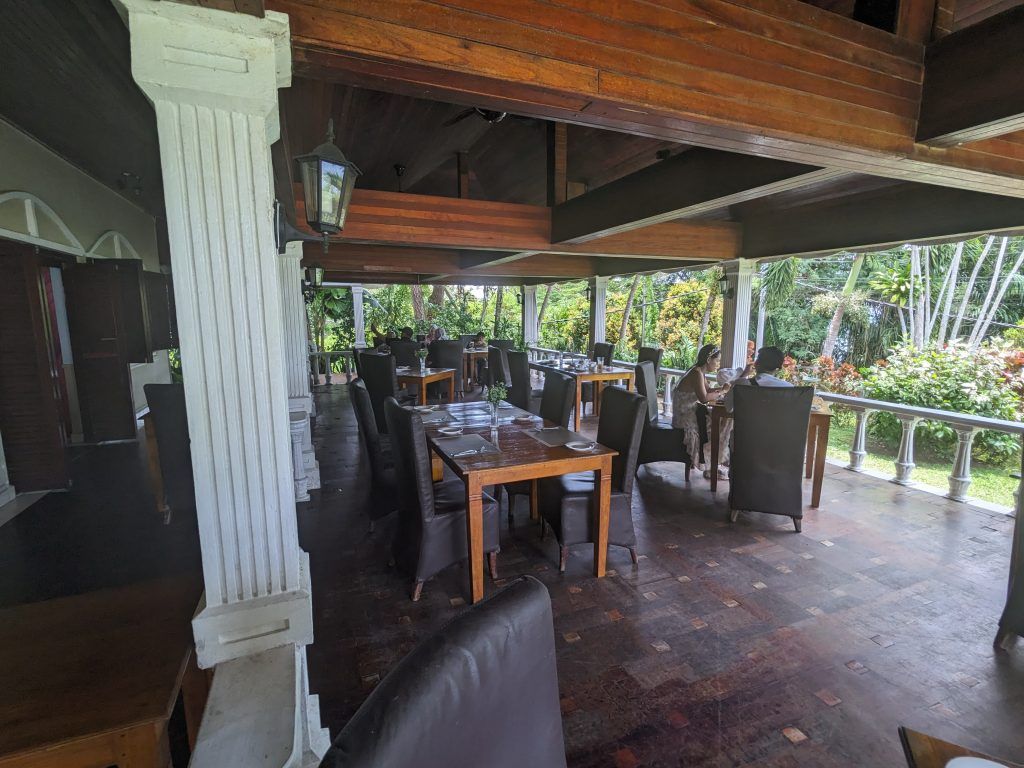
For about $11 US you can get their afternoon tea service which includes a steaming pot of English breakfast tea, two nicely warmed up scones with creamy butter and jam on the bottom tray, some fresh sandwiches on the middle tray, and some cakes and cupcakes on the top tray. The service is meant for two people as a kind of an afternoon snack, but I hadn’t eaten breakfast that morning, so I had no trouble devouring the full service.
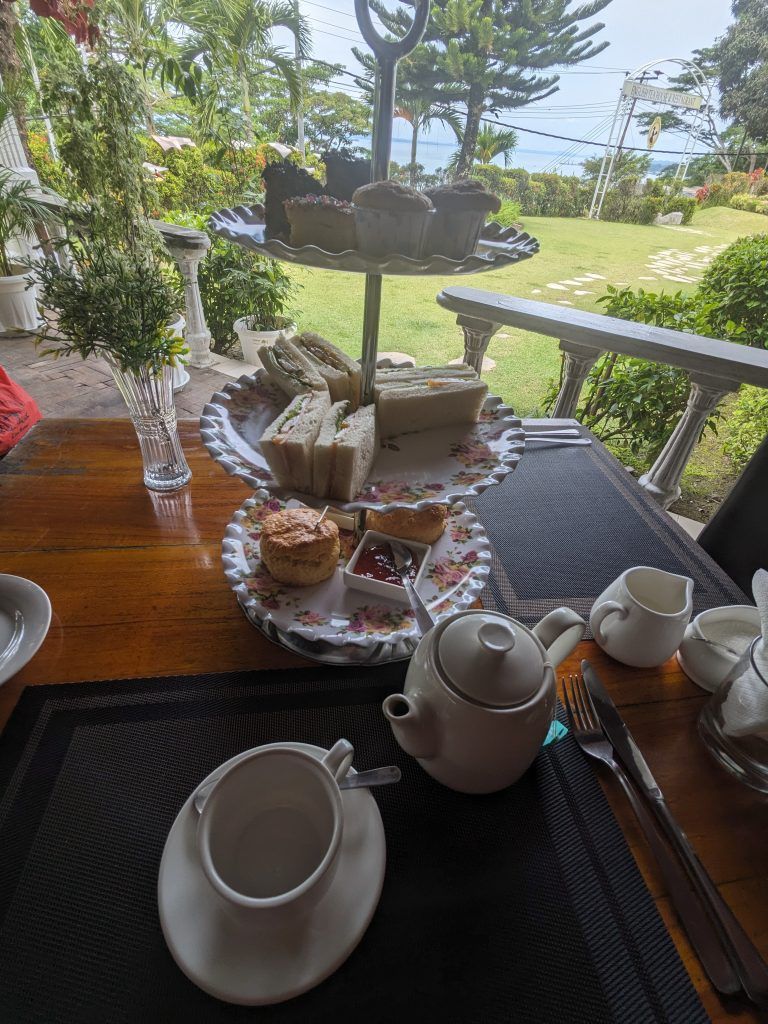
The Country of Brunei
Brunei is a small country with less than 500,000 people in the north of Borneo. It’s an absolute monarchy ruled by the Sultan of Brunei, and it has implemented a fusion of English common law and jurisprudence inspired by Islam, including sharia. Alcohol, cigarettes and homosexuality are all illegal. The right of non-Muslims to practice their faith is guaranteed by the 1959 Constitution. However, celebrations and prayers must be confined to places of worship and private residences.
90% of its GDP comes from oil and gas production and it has the second-highest Human Development Index among the Southeast Asian nations, after Singapore.
So on the surface it’s a wealthy, strict country. But it has a lot more of a relaxed feel than any of the Middle Eastern countries I’ve visited that have similar dynamics. It’s probably because of the relaxed Malay culture that underlies the country. People are incredibly friendly and there isn’t any sense of an anti-Western vibe.
The capital city of Bandar Seri Begawan feels like a Midwestern US city, with wide streets, fairly modern buildings, a nice riverfront, and a sense of relaxed prosperity.
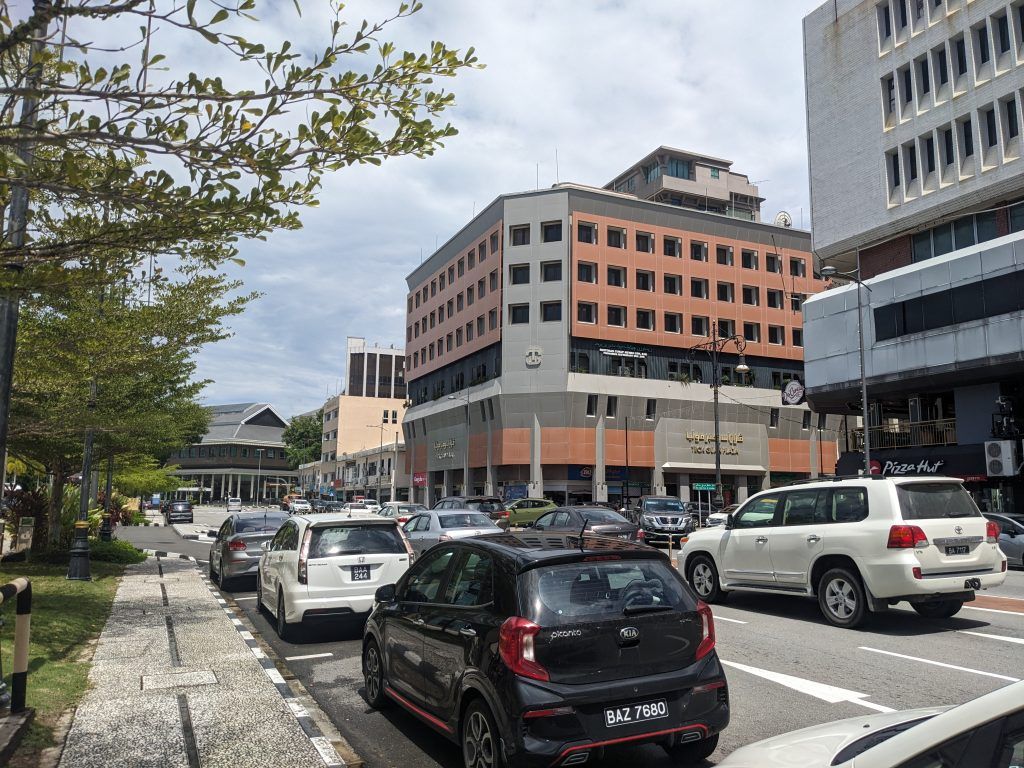
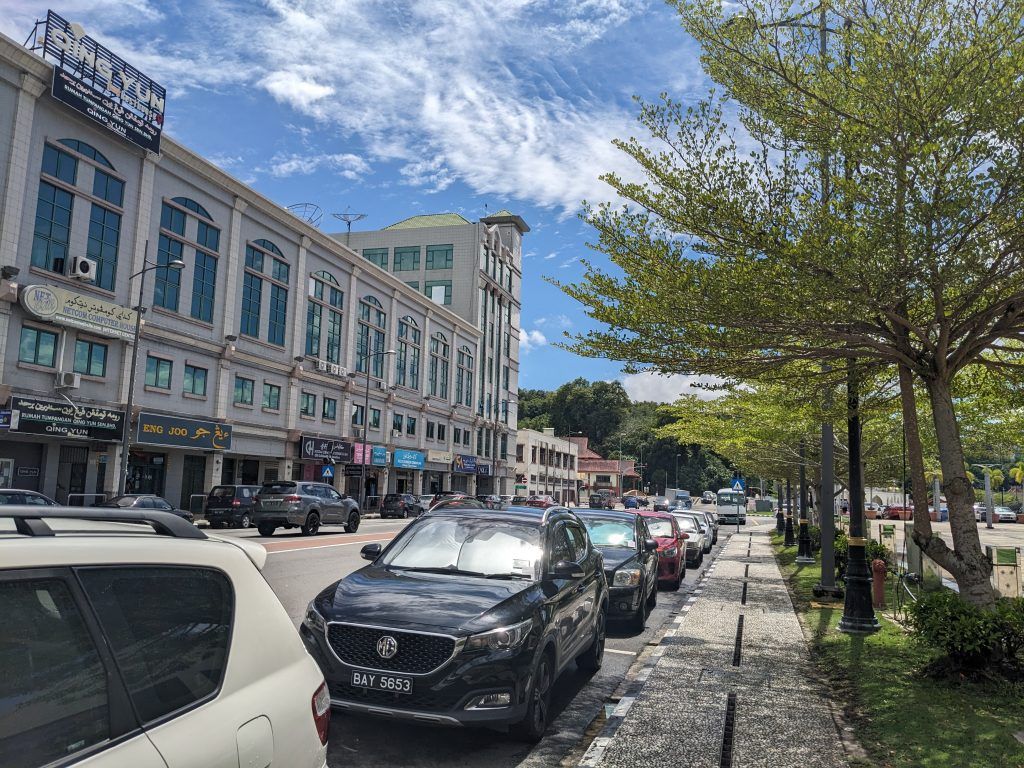
Notice that Standard Chartered and Burger King’s signage is in both English and Arabic. Malay is the official language, but both English and Arabic are taught in the schools. Most people can speak basic English and the people I’ve talked to can read and write (but not necessarily speak) Arabic as part of their core Koranic studies.
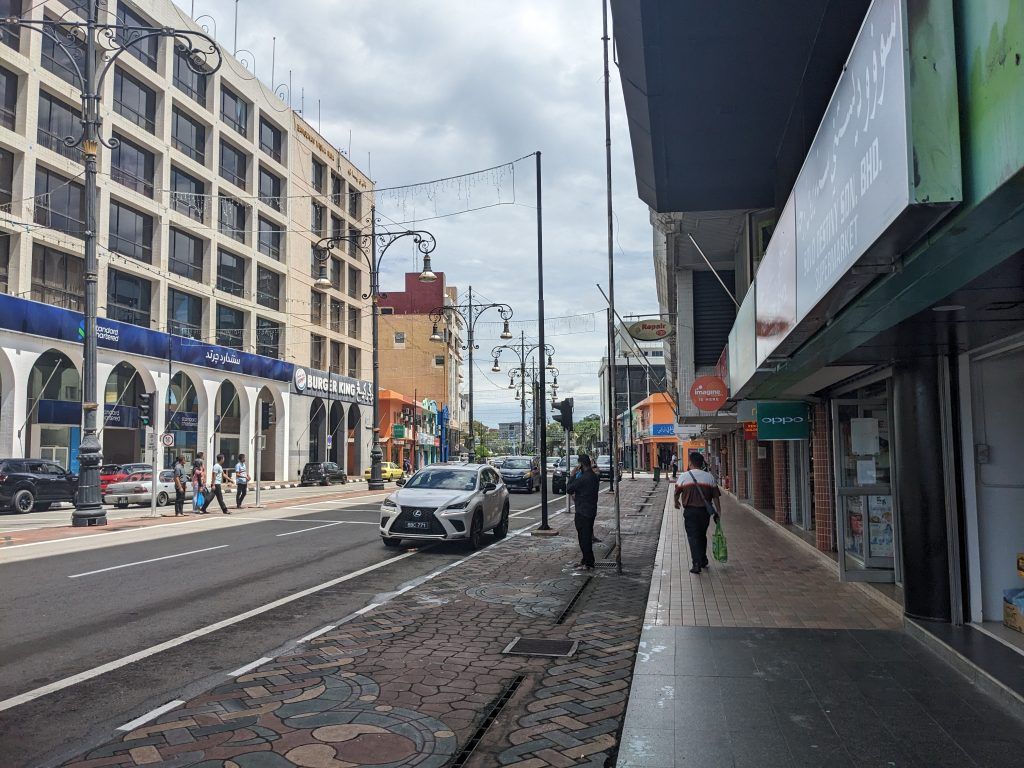
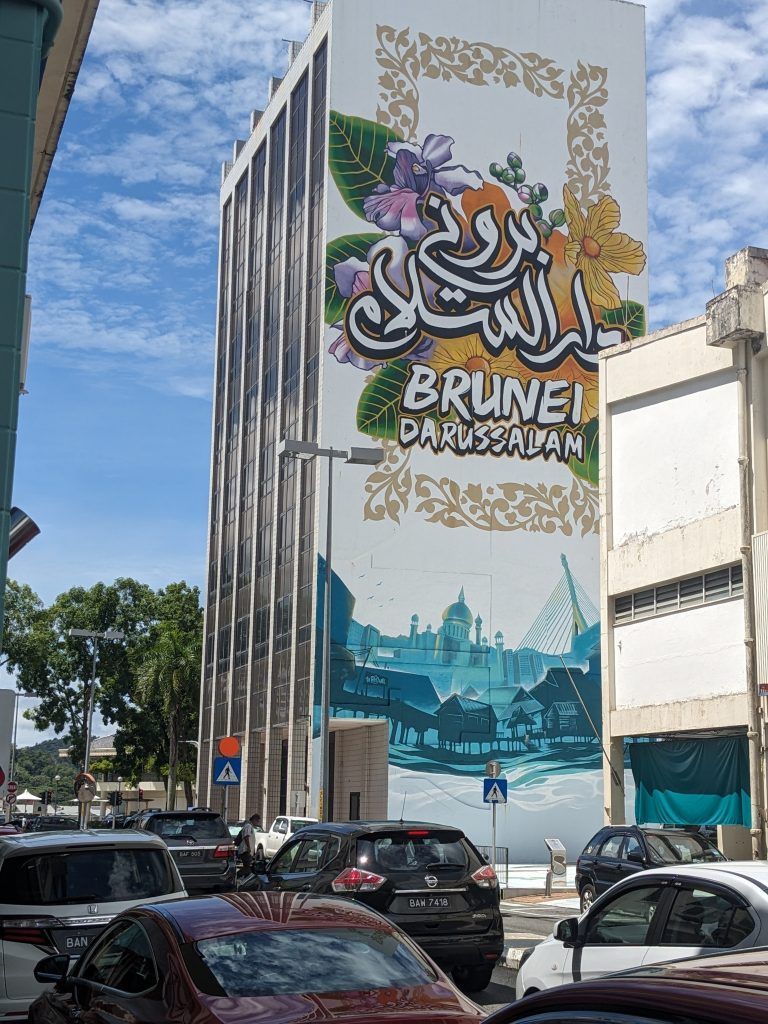
The Omar Ali Saifuddien Mosque is the primary landmark of the capital and is a stunning building.
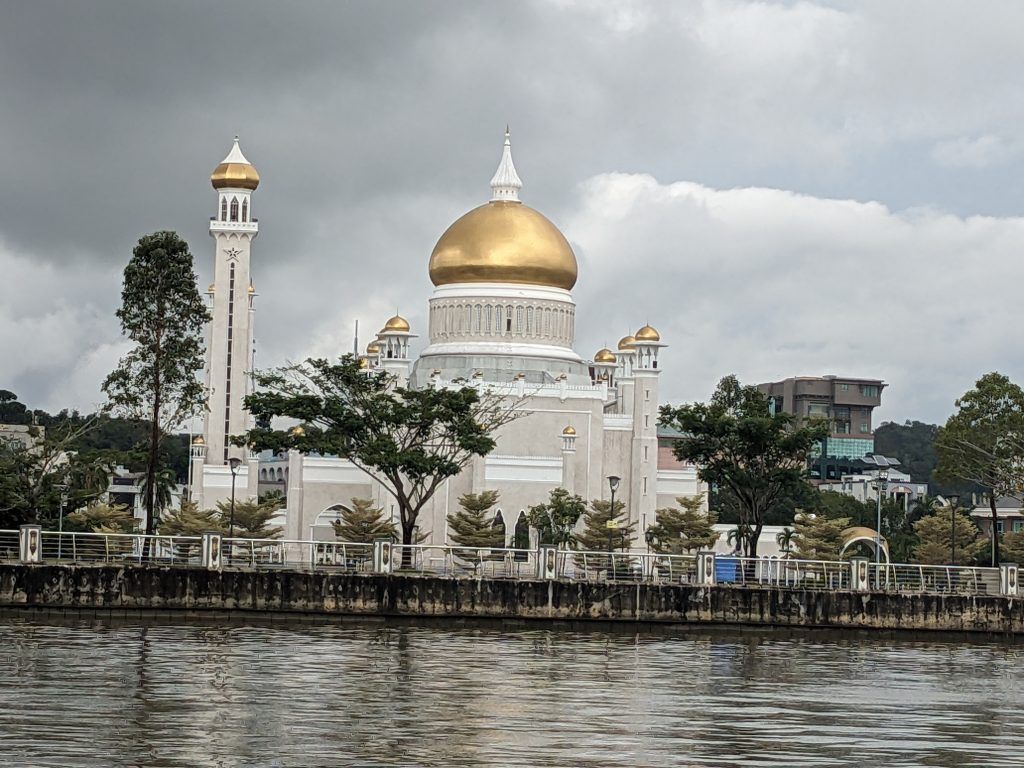
I had a chance to do a river tour the first afternoon I was there. It was a great experience. First, we went a bit southwest of the capital city to explore the nearby mangrove forests.
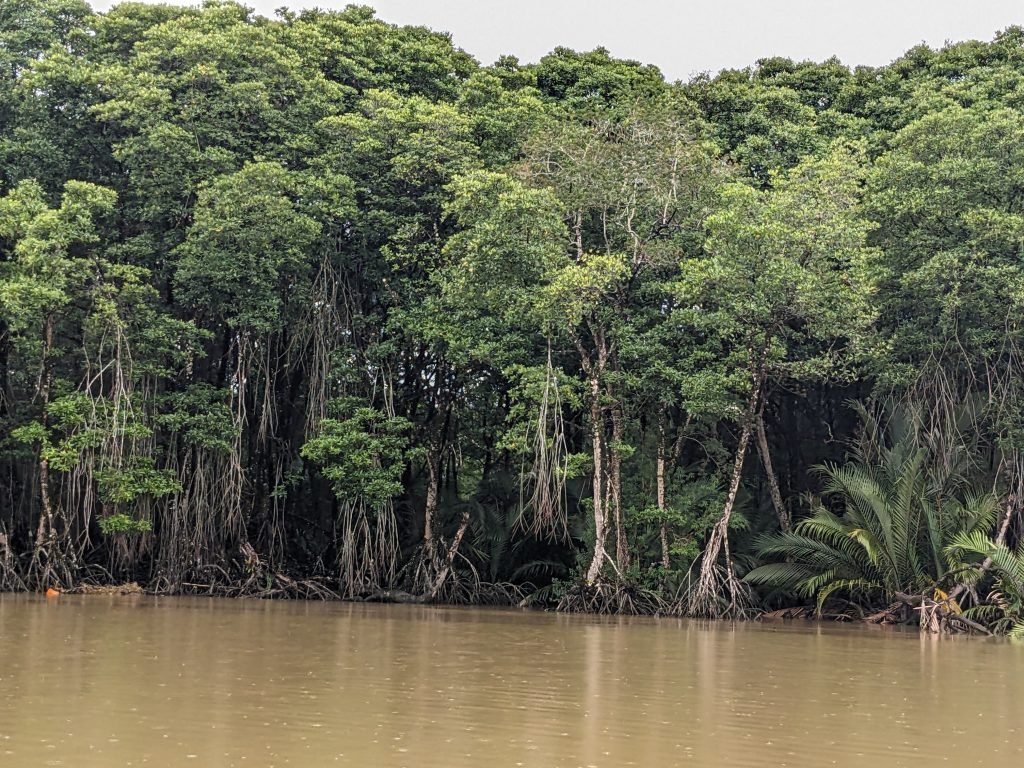
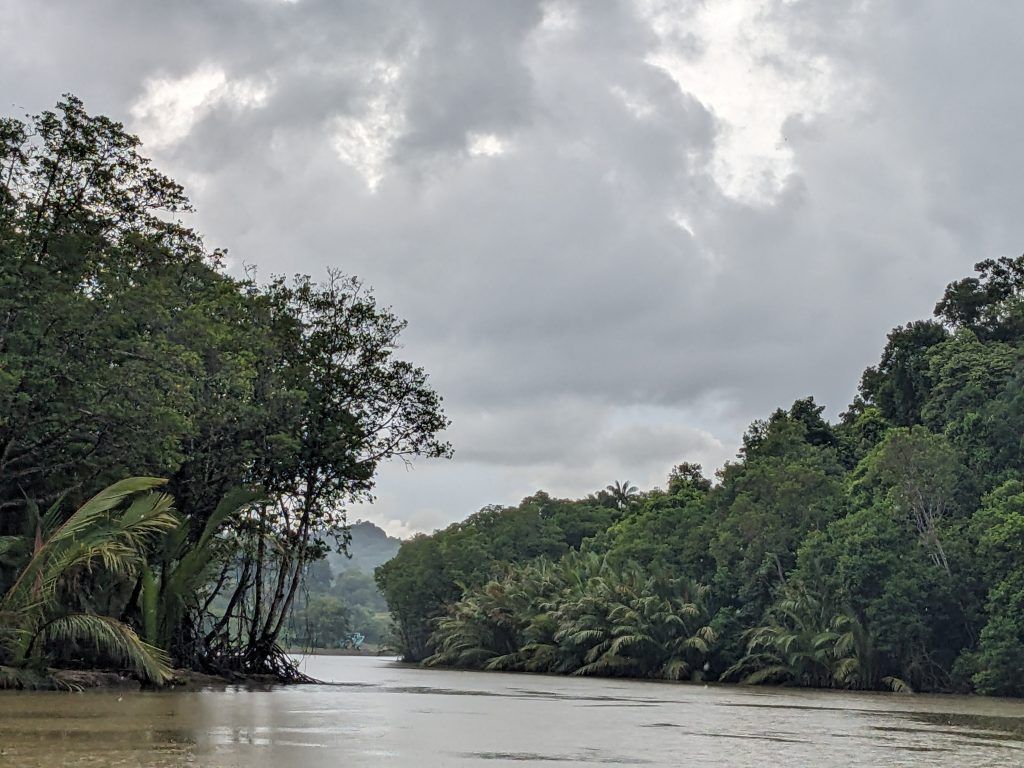
The stars of the tour were a family of Proboscis monkees hurtling themselves through the trees in the pouring rain.
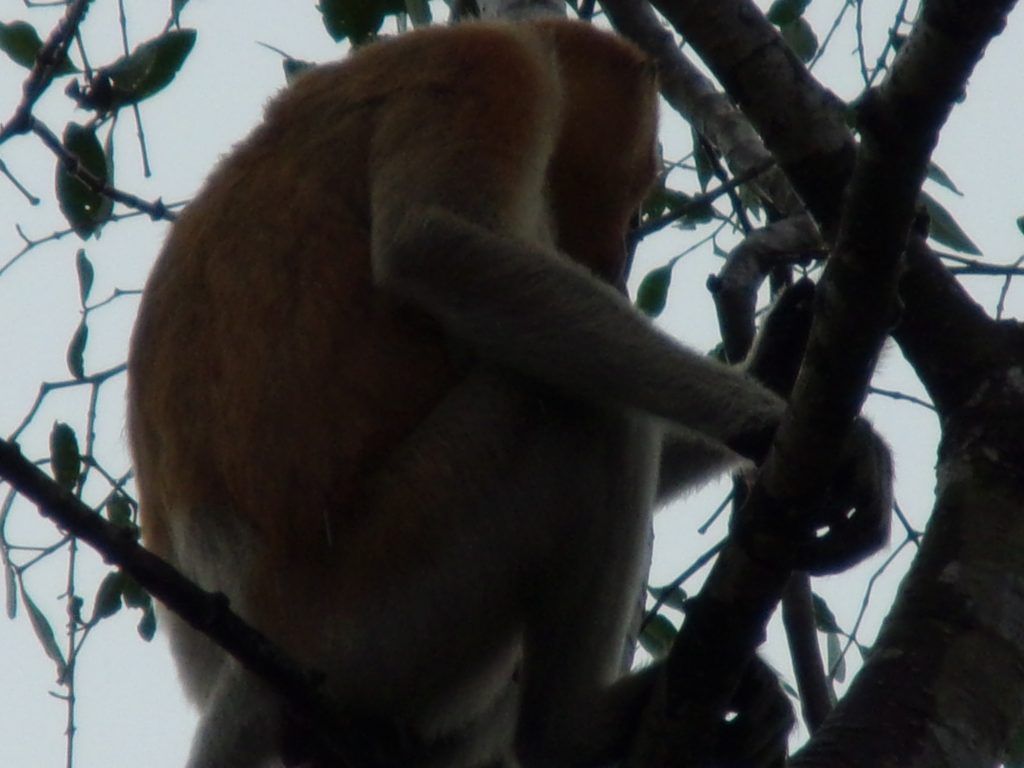
Then we went back to the capital and toured the Kampong Ayer, which is the world’s largest settlement on stilts, with a cluster of around 40 small villages connected by a 38-km (23-mile) boardwalk. It dates back more than 600 years and today around 13,000 people live in these villages. CNN did a nice short film on it: https://www.cnn.com/travel/article/kampong-ayer-brunei-water-village/index.html
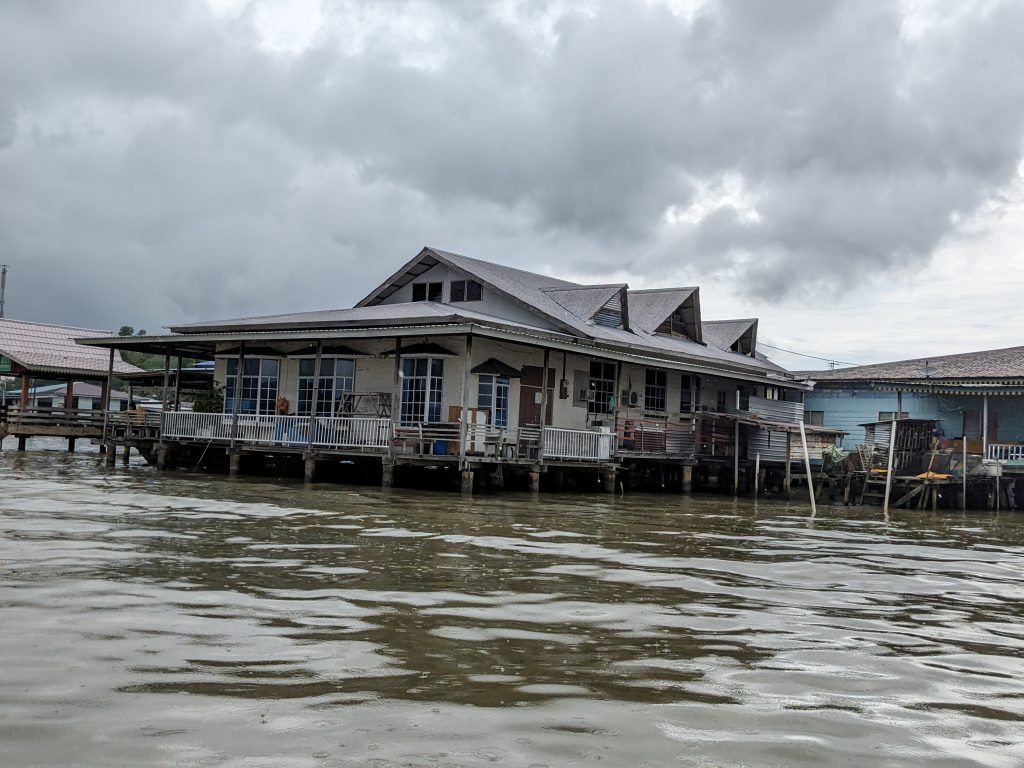
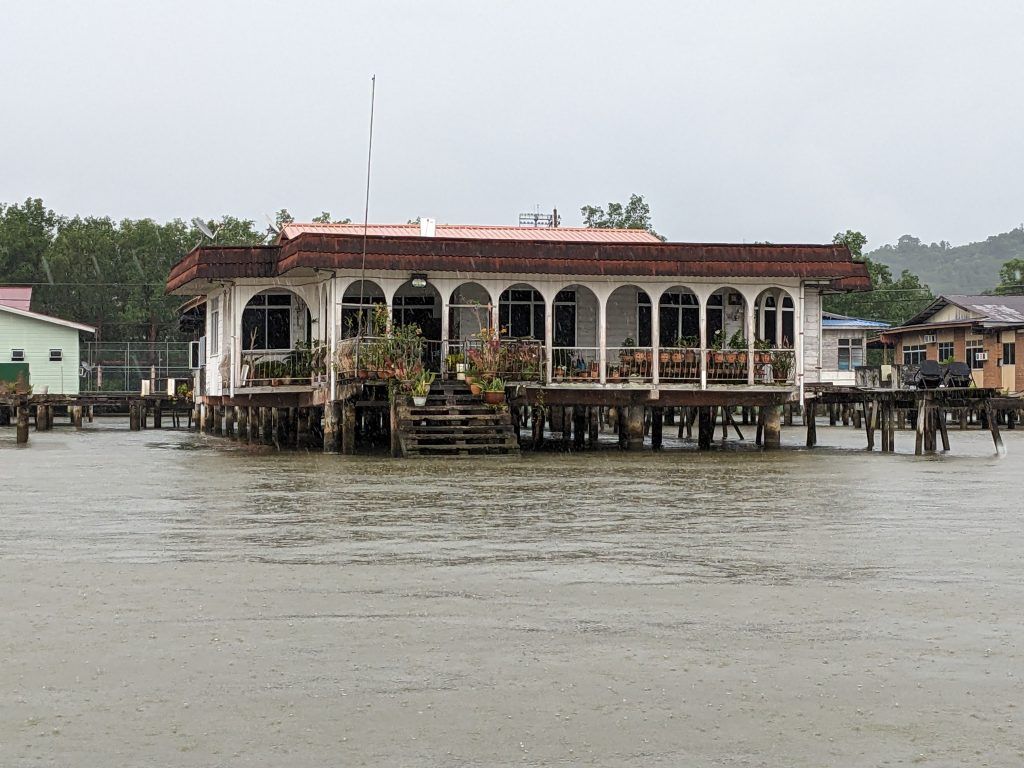
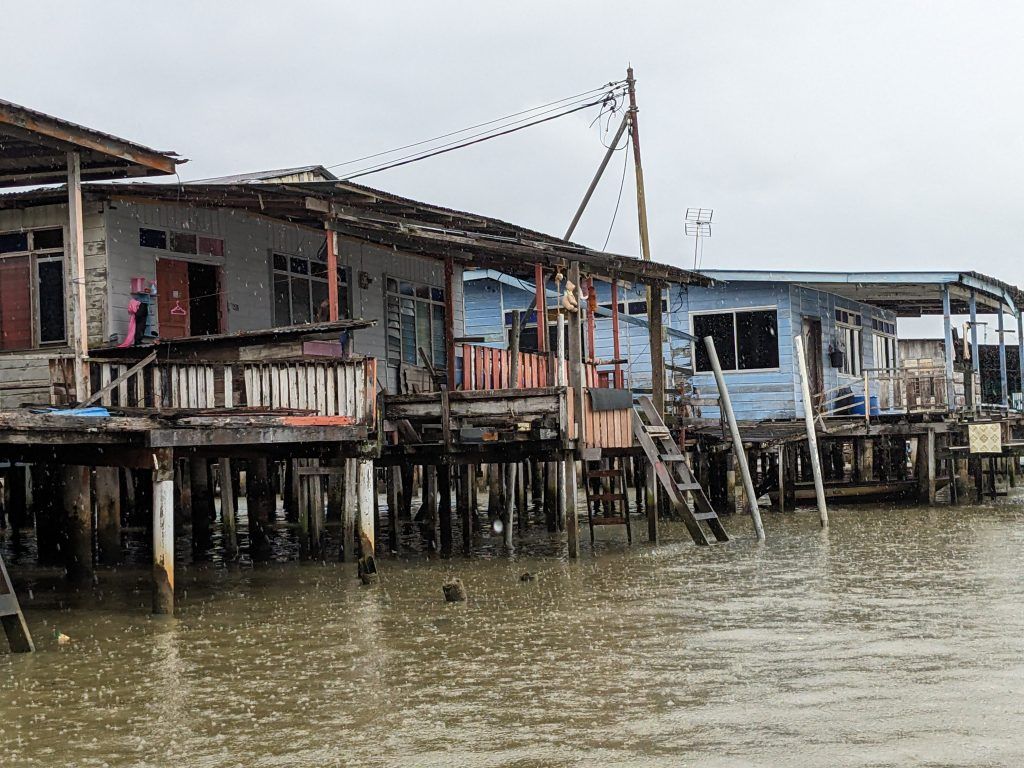
A new, modern housing development on the water
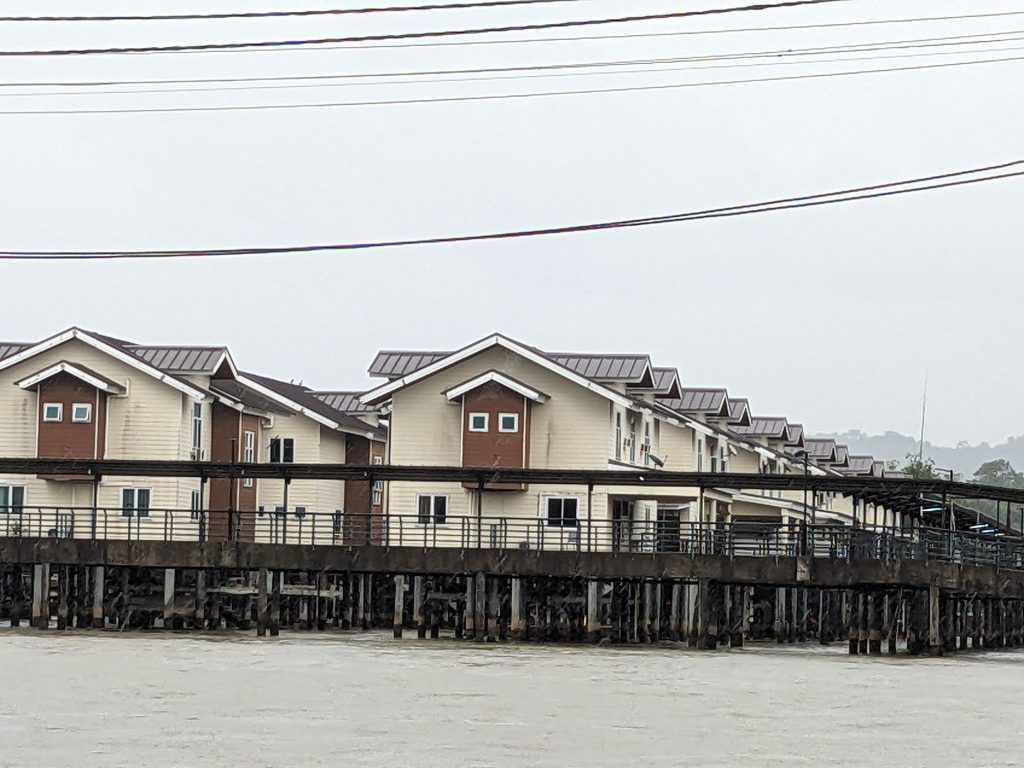
One of the many schools I saw
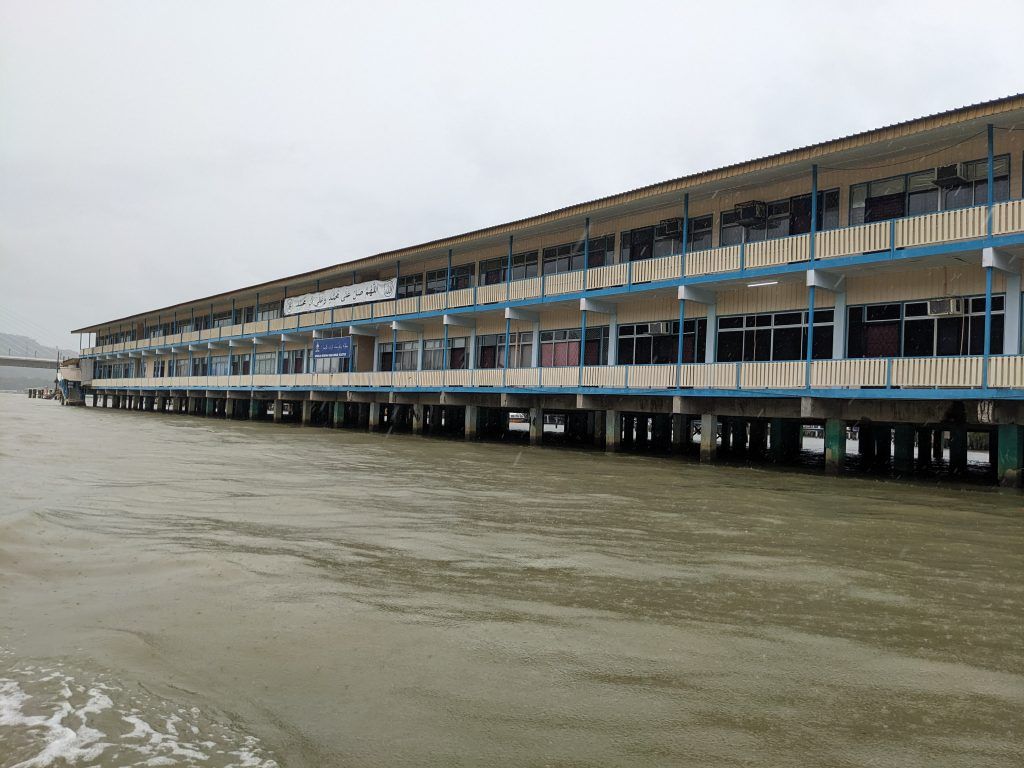
The local fire station with fireboats instead of firetrucks.
